







Is this hike the best North Dorset can offer? 14 mile circular from Bulbarrow to Milton Abbas. Pack some sandwiches! | Page 70

Great Pottery Throw Down star to be at the new Dorset Spring Show! | Page 13
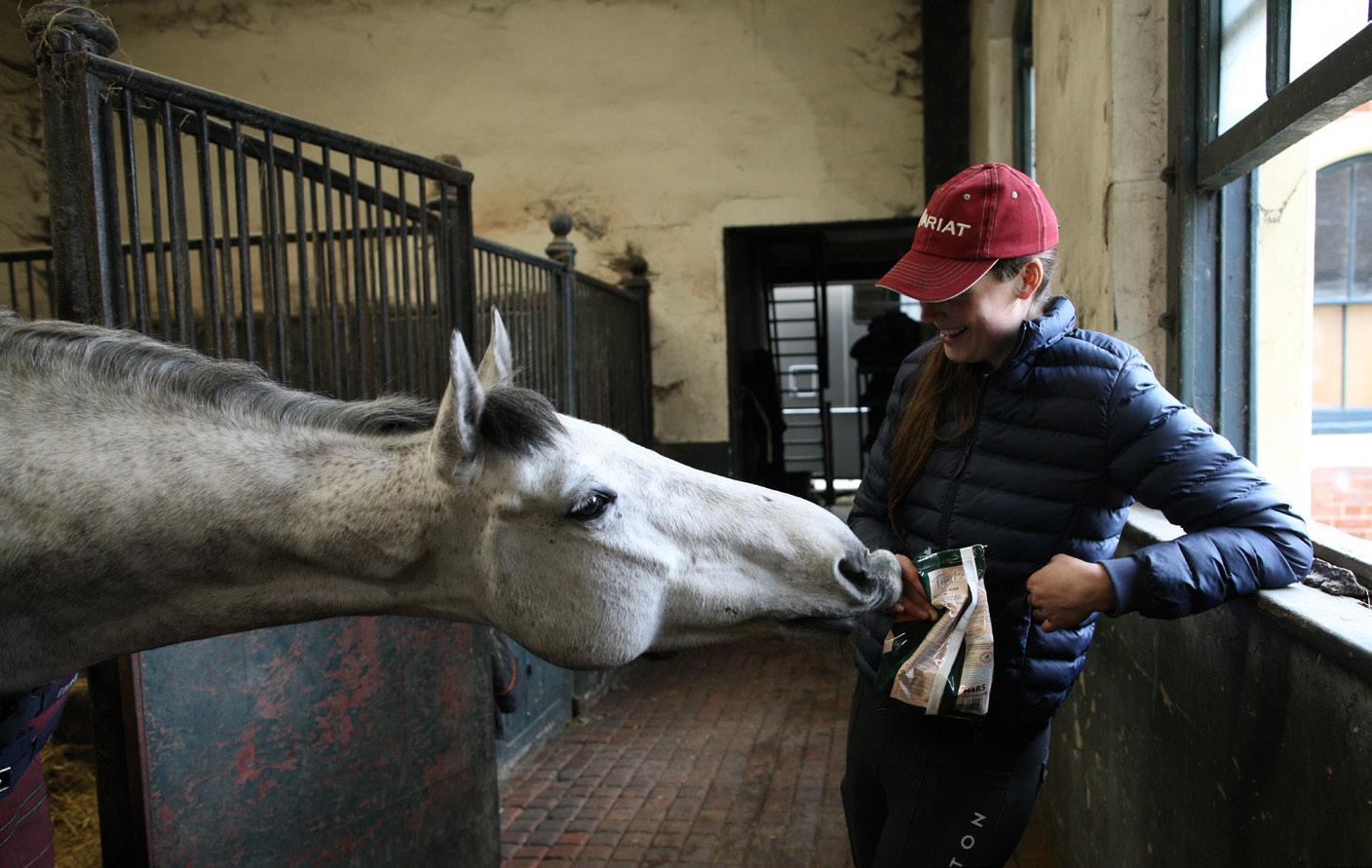
It’s not big news. But we’re excited to welcome Team Rimmer to their new Eventing column, and ALSO this may well be one of the best photographs Courtenay’s ever taken | Page 88
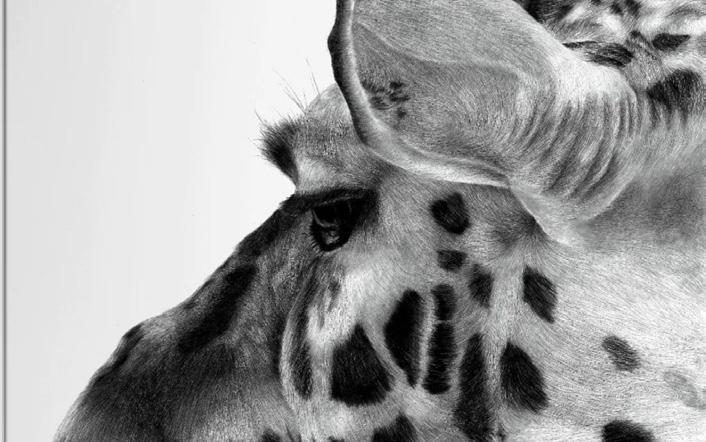
One Sturminster Newton farmer’s dramatic response to his lamb’s death by dog attack has fuelled an online debate – and a call for prosecution | Page 4
Lucy Kendall is only 19, and suffers from chronic fatigue syndrome. But she’s let neither get in the way of her art business| Page 98
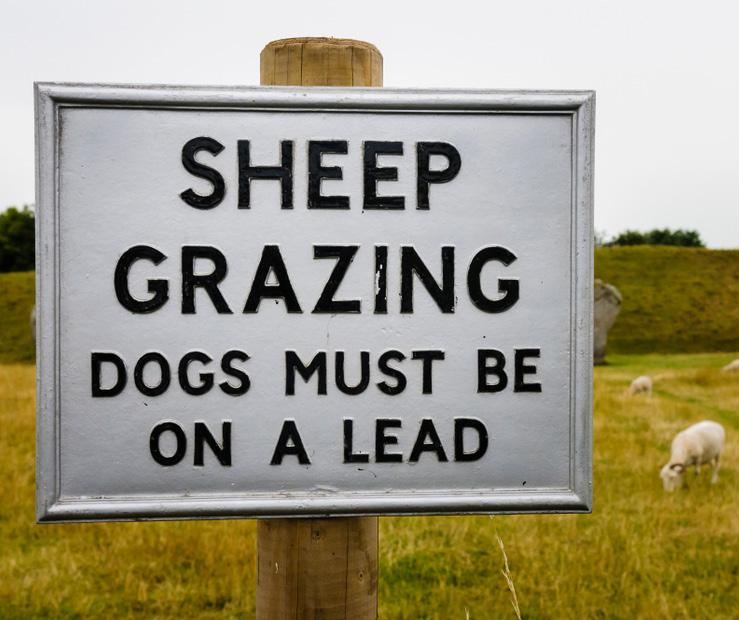

North Dorset MP Simon Hoare shares his Dorset Island Discs (‘I deliberately failed my French O level out of spite’)| Page 29
We know, it’s a HUGE magazine, and the page order changes month to month.
So we make it easy for you – just like grabbing the sections you like best from the Sunday papers, you can click the number below to jump straight to the section you want. Or you can just go make yourself a mug of tea and start from the beginning...
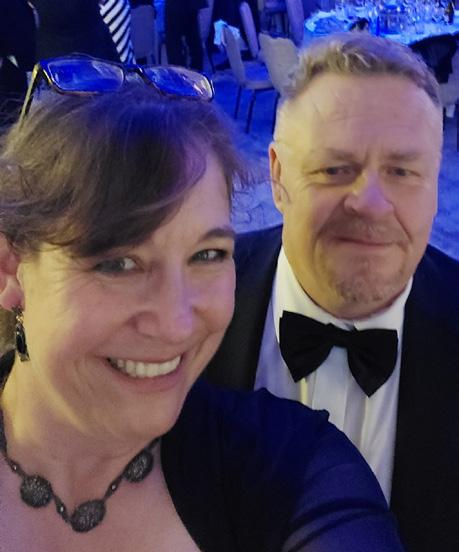
This image was taken in May 2023, when C and I attended a swish awards in Mayfair. We didn’t win, but we achieved one of only a handful of the Highly Commendeds awarded on the night.
Imagine our giddy
delight this month, then, at learning we had been shortlisted again for the Newspaper & Magazine Awards 2024 as Best Regional Publication Of the Year.
The suitably swish awards do is in Mayfair in May - we’ll keep you posted!
Fair warning, the first news story contains some distressing images. But whatever your thoughts on this particular farmer’s chosen course of action, the hundreds of responses I read to the sheep worrying incident were unanimous. Dog owners must walk their animals on a lead near livestock - no matter how well trained you believe your adored pooch is. Every dog owner I know has a story to tell about their always-well-behaved pet randomly hurtling off at least once and refusing to come back.
For once, the solution to an horrific issue is actually very simple. Literally every single dog owner owns a lead. And it’s not as though we struggle for open space, footpaths or good dog walking options here in Dorset, is it?
I refuse to discuss the weather this month – I just can’t face it. But neverending biblical rainfall aside, it’s finally time to start getting out and doing fun things.
Contact The BV Team: 01258 472572
Editor: Laura Hitchcock
editor@BVmagazine.co.uk
Advertising: Courtenay Hitchcock advertising@BVmagazine.co.uk
Sub-editors:
Gay Pirrie-Weir
Fanny Charles
Everything else:
Try Courtenay, he’s the organised one...
Many open gardens have been cancelled, and I know the team at the G&S Show were left deeply frustrated and upset at having to postpone their annual Spring Countryside Show until June (listen, it’s still officially spring until the 20th June), but fingers crossed they’re the only casualty of the weather gods. From the brand new Dorset Spring Show to the Chaldicott Barns Spring Fair and the amazing Shaftesbury Feastival, it’s looking like an exciting month. It’s finally time to get outside and DOING again. Even if we will be in our wellies...

One Sturminster Newton farmer’s dramatic response to his lamb’s death by dog attack has fuelled an online debate – and a call for prosecution
The Easter weekend is synonymous with the return of leaves to the trees, the flowering of daffodils and the birth of new life on the farm. For Sturminster Newton farmer Stuart Ludwell, however, his Easter weekend left him devastated and enraged after a dog chased and killed one of his lambs.
Stuart keeps sheep in the fields next to Sturminster Newton Mill – a popular spot for local dog walkers with a public footpath following the river bank which skirts two sides of the field. Stuart received a phonecall from the Hinton St Mary Estate – from which he rents one of his fields – informing him of the incident. And for the farmer, enough was enough.
‘As soon as I was told that there had been a dog incident in the field I called my wife to say “make a sign”... I’d had enough. I found the lamb and took it, with the sign, to the edge of the field where the footpath is,’ Stuart told The BV.
A police investigation has begun in hopes of finding the owner of the dog that killed the two week-old lamb. During the attack, a member of the public intervened and photographed the owner and their dog as they left the field and headed back toward Sturminster Newton Recreation Ground next to the field of sheep. The next day, Easter Sunday, the sign and the lamb created a furore on
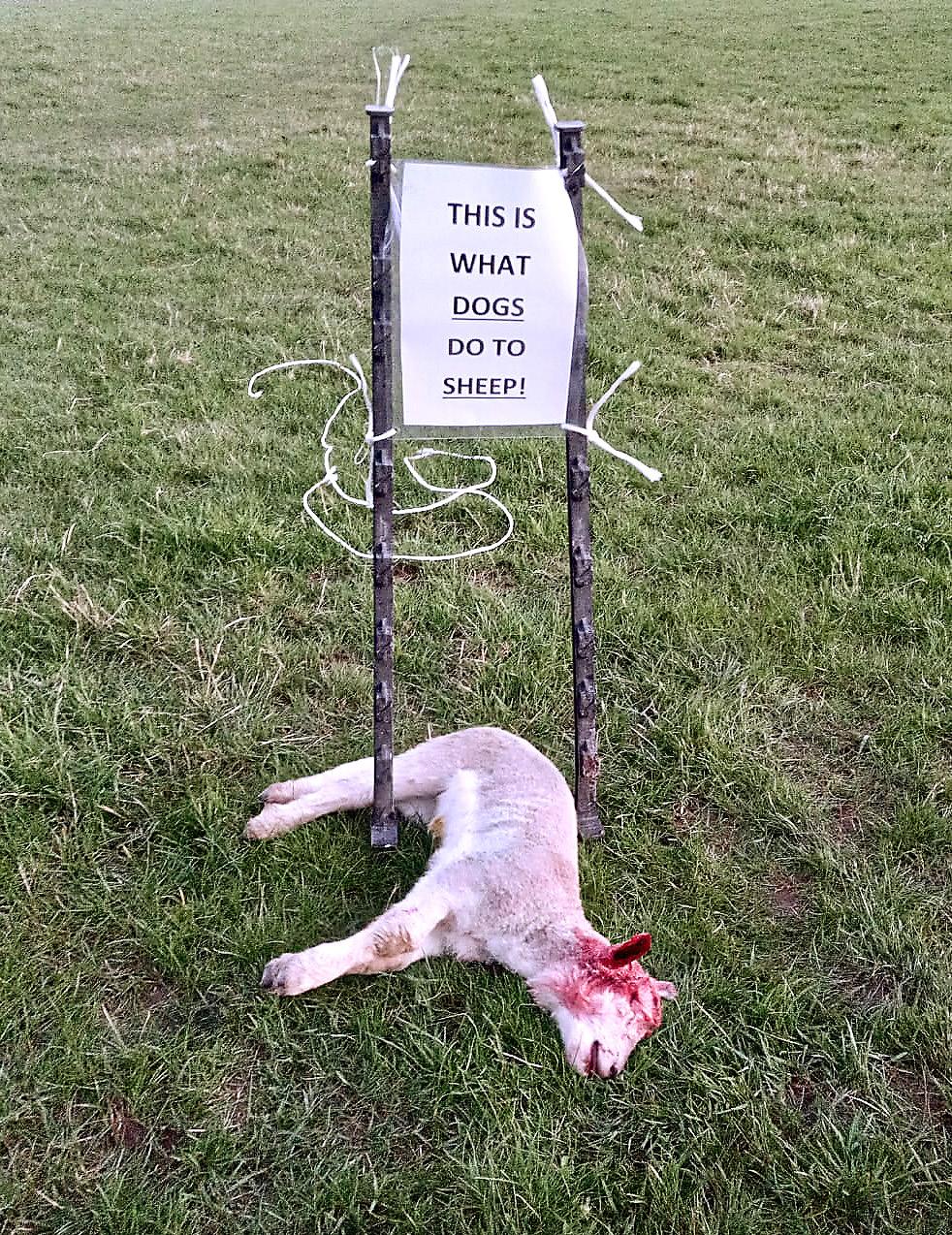
the Sturminster Newton News Facebook page. A passer-by had photographed and uploaded the warning left to dog walkers. Another day passed and the post was spreading further afield – at the time of writing it has been shared almost 1000 times, including by TV’s Gareth Wyn Jones, the Welsh farmer with more than 300,000 social media followers.
A problem all year
‘Yes, OK, I was in a fit of temper,’ says Stuart. ‘I’ve previously had sheep die from worrying in that field, as well as driven into the river and drowned. I’ve also had sheep killed at other locations.’
With the social media post beginning to spread, Stuart was ‘pleasantly surprised’ that a lot of people were supportive
of his actions: ‘Going by what I saw on Facebook, I’m actually quite positive that the general public do get the message. It’s just that one or two people ruin it for everybody else. I think a lot of people are just frustrated that this happens.’
Despite having now lost six of his Lleyn cross Texel sheep to dogs, the Sturminster Newton farmer feels he has ‘been very lucky’. He says: ‘Other farmers are having much bigger problems, losing a hell of a lot more sheep than me to the exact same issue. It’s just ignorant people – and the classic “Oh, not my dog. My dog wouldn’t do that... my dog wouldn’t chase sheep”. But they can’t possibly know?’
Dorset’s NFU chairman Wakely Cox explained to the BV that sheep worrying is not only an issue during lambing season: ‘Sheep worrying is always a problem, throughout the year. But it is worse now because the very young lambs are that bit smaller and easier to catch. The other thing, of course, is the
ewe is much more protective of its lambs. So the dog goes to attack the lambs and the ewe comes to protect them, and then the dog attacks the sheep.’ The law currently states that “dogs must be under control when passing through fields with livestock”. Wakely believes that this is too ambiguous for some people: ‘For your dog to be under control, it has to be on a leash. It might respond to a whistle or something else, but a dog is not controlled if you can’t stop it when it’s racing across the field after livestock.’
No way to go
‘I’d had enough. I found the lamb and took it, with the sign, to the edge of the field where the footpath is’
The South West is the worsthit region in the country, with casualties totalling £359,000. ‘One of the problems is that farmers don’t report the dog worrying incidents very much,’ said Wakely. ‘I think only 14 cases in Dorset were reported to the police last year –it is a tiny figure compared with the number
Figures released recently by NFU Mutual show that animals worth an estimated £2.4 million were severely injured or killed by dogs in 2023 – a 30 per cent increase on the previous year.

of attacks that farmers know are actually happening. But so often you don’t see the dog. The farmer has gone and checked the sheep in the morning, at lunchtime or the evening – but the attack more than likely happens between visits, and the farmer isn’t actually there to see it going on.’
Another point of view
In spite of strong support on social media for Stuart’s actions, there were a few who strongly disagreed with leaving a dead lamb by a footpath as a warning for dog walkers. One post said: ‘It would not have happened if the fencing was doing its job. It’s a horrible thing to do.’
The original Facebook group post was made by Sturminster resident Louise Murguia: ’It’s not nice for children and adults to see when they walk into the Mill field,’ she said.
Murguia told The BV that she had received considerable ‘backlash’ and ‘a lot of unpleasant comments’ from her post. She went on to add: ‘I am a proud vegan and I am antifarmers because they exploit animals. Farmers abuse the lambs from day one. They put tight elastic bands around the

boys’ scrotum and the girls’ tails. This must be pure pain for the first two weeks of their life before they drop off. So when you see lambs, just remember that they are in pain. Why people think [that] farmers care so much is just ignorant. I just wish people weren’t so obsessed with eating meat full stop. Plant-based is so much better for the animals, for the environment and also for the ozone layer. But I feel I am in the minority and people are just blood-hungry.’
Stuart Ludwell says that other animal rights activists have commented: “you are going to kill the lamb anyway, so what’s the problem?”.
To them, he says: ‘An abattoir is a controlled environment, and it’s an instant death. That lamb would have run for its life until it gave up and the death still wouldn’t have been instant – it has just been mauled. You’ve seen the pictures, the dog’s teeth have gone through the
eye, through the jaw and the top of the skull. That is just ripping that lamb up. It is not the way to go.’
During the attack, a member of the public intervened and photographed the owners and their dog as they left the field and headed back to the adjoining recreation ground. ‘By sheer luck, the groundsman for Sturminster Rec has the whole incident on their CCTV footage, with the dog actually attacking the sheep, as well as the group of people leaving the field and going across the Rec.’
A police investigation has begun. Stuart hasn’t seen the footage himself but he is hopeful that the police will be able to identify the people involved. The question is, what does a farmer who has lost his sheep deem as fair retribution?
‘The knee-jerk reaction is “Yes. I want the dog destroyed”. But ultimately, I know it’s not the
dog’s fault. I don’t want it dead. ‘I think there has to be some form of prosecution for these people. The member of the public who intervened received a lot of abuse from the dog owners and I think that there should be some punishment.
‘If the owners are found via the CCTV footage there should be some action against them. They displayed complete disregard for where they were walking their dog, for the animals and for everything that happened. ‘The countryside is beautiful. It’s good to walk around and enjoy it. But you have to respect it as well. It’s a place of work, and it’s people’s livelihoods. It’s not the dog’s fault – it just sees the livestock and its instinct is to chase. That chase then turns into hunting ... that lamb was on the receiving end of it, like many other animals across the country.
‘Of course it’s not the dog’s fault – but the problem is now that dog has a taste for the kill.’
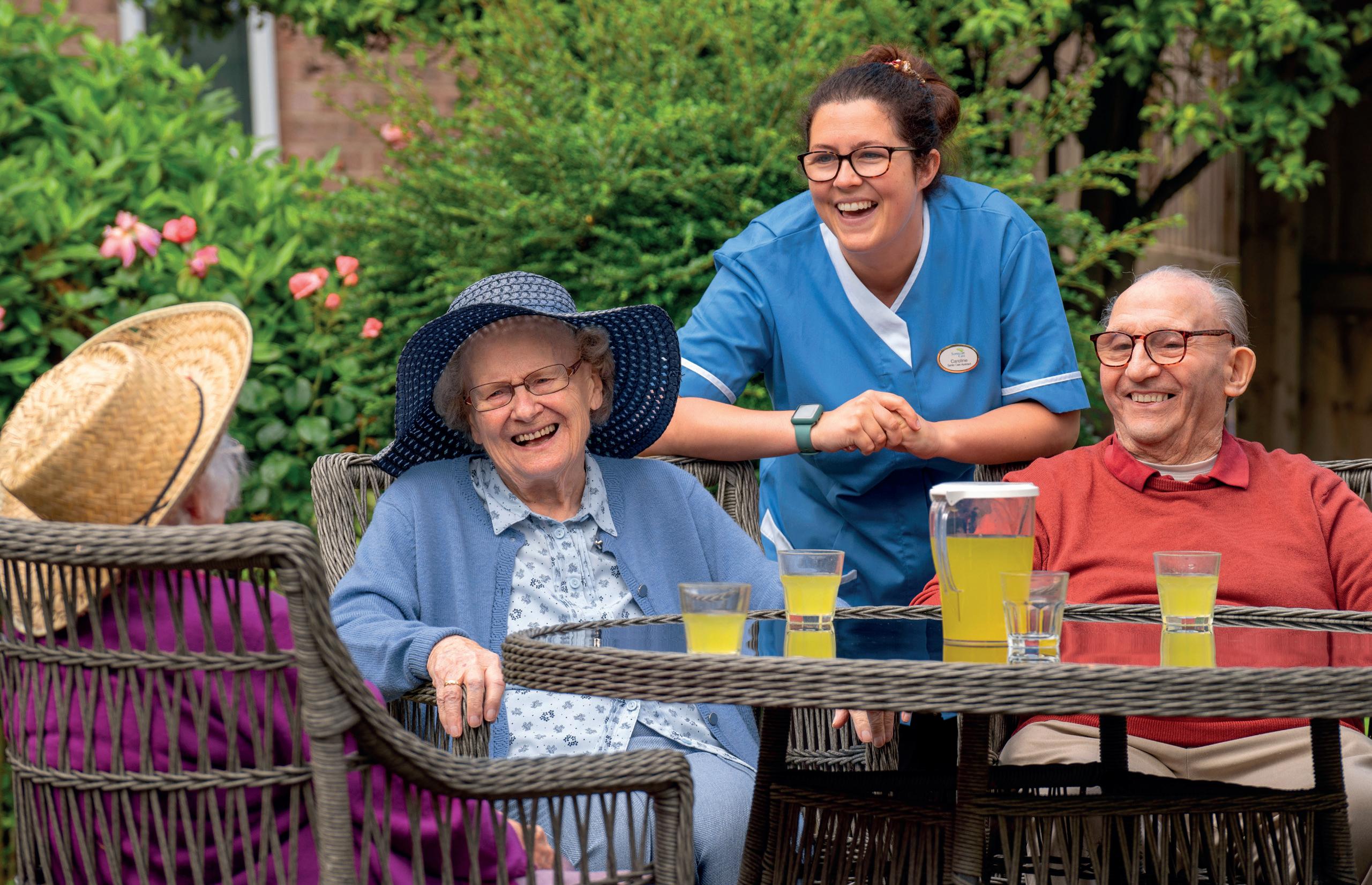



The finished road is finally plastic-free – local residents have expressed pleasure at the clear view of the bridge as they approach the town. Images Courtenay Hitchcock
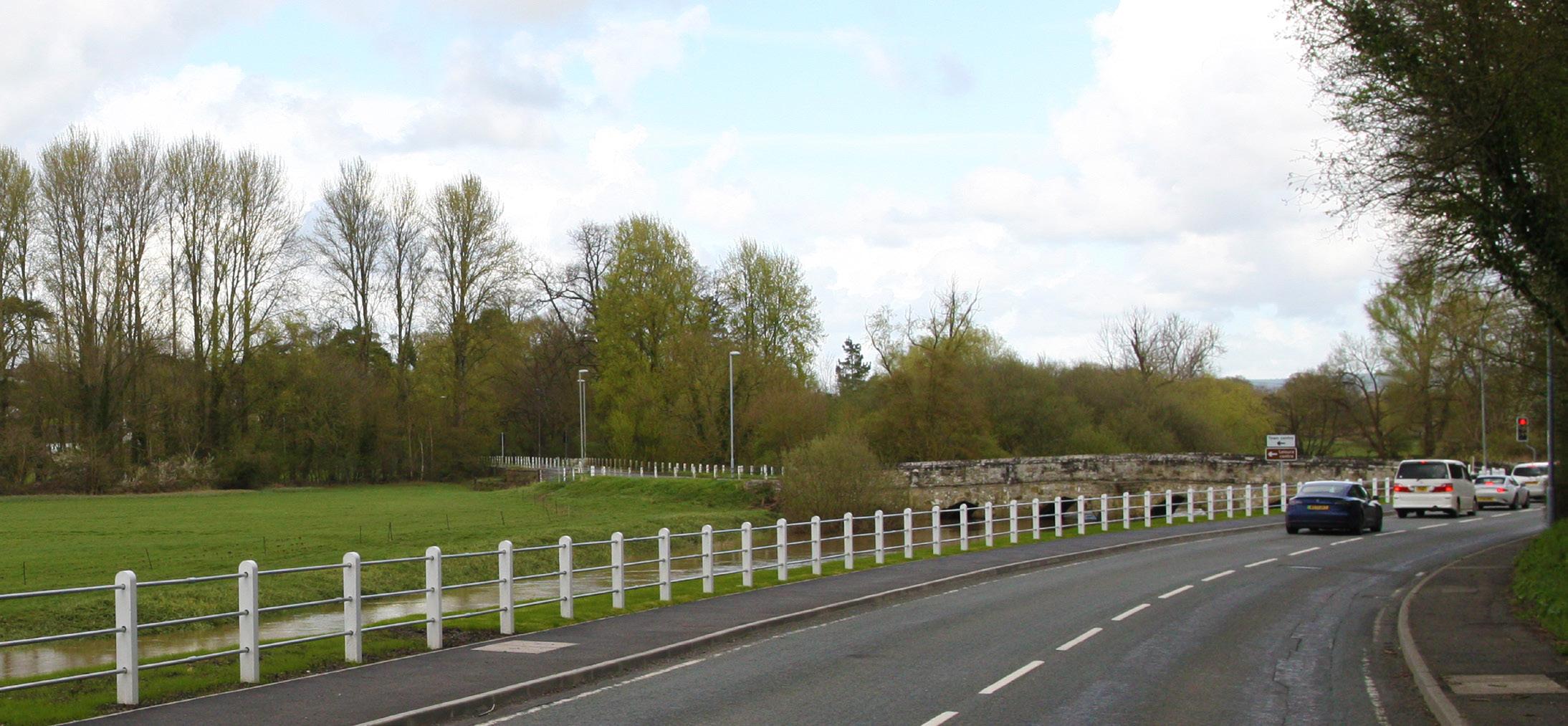
Dorset residents had almost forgotten what Sturminster bridge looked like – but finally the bank stabilisation work is complete. Rachael Rowe reports
In August 2019 they were put up as a temporary safety measure – now, almost five years later, the plastic railings on the approach to Sturminster Newton have finally been removed and the view of the bridge looks remarkably different, with a new footpath and the striking absence of barriers and temporray traffic controls.
Work to stabilise the bank of the River Stour is complete at last – but there was much more to this complex project than most people probably realised while they were stuck in a the traffic queue. The bank between the ancient Town Mill and the early 16th century town bridge has been shifting for many years –it’s a man-made structure which was formed when the road was relocated more than 100 years ago and was therefore never intended to support the weight
In a major project costing £1.3 million, just under 500 nails, each between eight and 12 metres long, were drilled through the bank
of modern vehicles. Over time, vibrations, over-loading and water ingress have weakened the material and caused it to start failing, while repeated storm events and flooding removed fine material from the base of the slope, causing further movement. The footway has been repeatedly patched and repaired, but by 2019 the movement had become too great and it was decided that a more permanent solution was required to protect the highway. A temporary solution using gabions to make the footway useable had already failed: it started to move even before those initial works were completed.
The A357 runs along the south bank of the Stour. To stop any
further soil movement and protect the busy road, the bank has now been strengthened by Dorset Council, in a major project costing £1.3 million – when The BV first reported on the issue in 2021, the anticipated budget for the completed project was £400,000.
Almost 500 soil nails were drilled into the embankment, with grout securing the soil nail to the stable material beneath. The erosion matting was then placed over the bank, and stainless steel mesh on top of that - the nut on each soil nail was then installed and tightened down to tension the mesh and matting, which holds the bank in place. The nail heads remain exposed so that they can be maintained periodically – ensuring the mesh remains tensioned so that it can retain the slope effectively.
The final part of the work –sowing the bank with wildflower seeds, reinstating the footway bordering the road and installing the rail fence, is now complete. Project team manager Zoran Maric explained why the
unsightly barriers were in place for so long: ‘Over the course of two years, we monitored the embankment for movement and also recorded vibrations in order to establish a baseline. The monitoring told us that we had a significant problem with slippage from the embankment. This is why we were forced to complete the project through the winter months. It could not wait until next year.
‘We had to compete with seven big storms before Christmas, which caused around ten days delay to the project timeline.
‘We had looked at the various options for completing the task. One was taking the work back to include the entire road, but that would have been a huge issue, as it would have completely closed the road. Another option was to use sheet piles, but that was also a huge engineering job. The most effective option was to use the nails and a mesh.
‘The nails will be there forever and a day. The nails themselves are 90mm in diameter and are between eight and 12 metres long, depending on how they interface with the geology. The mesh is critical – it holds everything in place and prevents loose material from falling. The protective matting holds the wildflower seeds in place. A specific wildflower mix, that is low in maintenance, has been chosen, so that the banks don’t

need to be continually trimmed. Once it starts to grow and seed, that iconic picture postcard view will be back.
‘We are continuing to monitor the work for any problems. We monitored vibrations during the work and because we had a baseline measurement we were able to demonstrate there was no risk to property in the immediate area.
During the works we also removed the large willows that were found to be damaging the gabions at the river edge – which provide scour protection – but other trees are being planted in the area to mitigate the environmental impact.’
Dorset Council spokesperson said: ‘Our team, and our contractors Heidelberg, worked in some challenging conditions, including heavy rainfall that caused higher than normal river

levels. They have done a fantastic job and have created a safer place for all.’
During the works, the eastbound lane of the A357 was closed with traffic signals in place to maintain traffic flow both ways.
Zoran explained that an extra sensitive system called Urban 64, which has a more intelligent way of operating than the standard highways traffic lights, was used during the project: ‘The system was more effective at monitoring queue lengths and also allowed us to use a fourth arm so the residents who directly fronted the works had an opportunity to join the traffic flow.’
‘The workforce has been fantastic,’ said a Dorset Council spokesperson. ‘It really is so wonderful not to see the awful plastic railings any more. I would like to thank all of the residents for their patience. We got there!’
Zoran highlighted a lot of the unseen work of civil engineering that was invisible to most people in traffic queues, waiting to cross Sturminster bridge.
‘I am proud of this whole project. We have protected the highway, and also saved the bank from collapsing into the river. We also kept communications working –we had a lot of stakeholders to coordinate. And of course we have helped restore the iconic entrance to Sturminster Newton.’

From neighbours to award-winning booksellers, FOLDE’s founders transform their dream into a literary haven at the top of Gold Hill
‘I just want to say that your shop is magic. Each time I come in I get tingles all down my spine.’ FOLDE customer, 2024
FOLDE, in Shaftesbury, has won the British Book Awards Independent Bookshop of the Year competition for the South West, organised by The Bookseller magazine and judged by a prestigious panel of industry specialists, authors and journalists. It’s a remarkable achievement for a business started during the pandemic by two women, Amber Harrison and Karen Brazier, who had never sold books. Or owned a shop.
‘We’re neighbours. Our gardens back on to each other. Amber was Head of Sustainability for a global tech and aviation company. I was a director of marketing for a local independent school,’ says Karen. ‘We had both reached a point in our careers where we wanted to do something different. One night in the pub I realised that Amber felt the same way.
‘We started talking about what our lifestyles could be like if we did something different. We sketched out this dream of walking to work, opening the door to a nice shop. Then we discovered we both liked the same kind of nature writing, the same kind of artwork. We both
found solace in the natural world and thought if we could meet likeminded people, there might well be potential.’
Amber adds: ‘We knew we wouldn’t open until 10 o’clock in the morning. That was our first business decision! It’s all about lifestyle. The name FOLDE means a community coming together. It’s also Old English for “the land”. So we had our brand.
‘We launched as an online journal in the summer of 2020 to test the concept. It was lockdown, but we went for walks together. We talked a lot about values, what it would be and wouldn’t be. It was a manifesto.
‘Then we started to sell things and launched the website. We were delivering bundles of books by
hand, and decided if a suitable shop became available we would look at it. And then this place on Gold Hill came up. It was a dour white space with brown carpet and we thought “that’s fine for us!”. Before we knew it we had keys and started renovating.
‘We opened on 12th April 2021. It feels like a lifetime, but it’s only been three years.’
‘Because people hadn’t been able to go shopping, there was a real sense of anticipation when we opened,’ says Karen. ‘That first week, we were really busy, and we thought “this is easy!”. But then we had the terrible thought that maybe everyone had now spent all their lockdown money,

and they wouldn’t buy any more. However, people were genuinely interested in the books and we soon became more confident in what to stock. When we started it was a minimalist shop.
‘Now, if you breathe in, we’ll put a book in the space!’
There have been tough moments. The pair had very little prior experience of either bookselling or retail and they were also dealing with a niche subject. Amber says: ‘I’m a numbers person – I like to look at reports. You might have a really great week and then a really quiet week. It was hard during our first year to get a sense of continuity – we’ve finally come to realise there isn’t much of one! You have to look at three month blocks.
There were days we wondered what we were doing – a wet Tuesday with only three people coming through the door. That first year in business you have to teach yourself to look at the big picture. For us in Shaftesbury, the weather can dictate a lot. You mustn’t panic, just take the wider view.
‘And then there was one galling moment when we did an event in Stourhead for a big name author, and a big tub of magenta ink spilled over the books. That was a low point. We got it fixed, but that was tough.
‘We’ve brought skills from our previous jobs and a good budget to the business. We set out knowing what we would do and particularly what we wouldn’t do. Knowing what we stood for, what we wanted to be. And when to take a risk and when to say no.’
Karen says; ‘Having a clear vision from the start is important and having a niche helps – really understanding our USP and being clear about communicating that. And not compromising, though it’s tempting sometimes. All the non-book items we sell are locally made – around 80 per cent are made within ten miles, by makers who celebrate the natural world, and they have to be sustainably produced. When it comes to planning things like Christmas stock, for example, we
want our regular customers to find something new. But when you are trying to find different things that meet these very strict criteria, you start to think “we’ve made things very difficult for ourselves!”.’
More than a transaction
‘We’ve become a bit of a community hub for like-minded people and also a destination,’ says Karen. ‘You think a shop is all about transactions but it isn’t. Bookshops especially lend themselves to this – there’s a legitimate reason to come in, browse and just hang out. I love that people feel they can come in for a chat. We get asked about sleepovers too! Last year a group of Australian artists came here because they had seen our Instagram and were staying nearby. And a lady from Illinois came in and hugged us because she followed us on Instagram. ‘The Shaftesbury community has really embraced us. Since the award, we’ve had congratulatory messages, home made biscuits, people stopping us in the street ... That’s very typical of Shaftesbury. We’re careful to not stock what others do, and to be aware of what the other shops have, so we can recommend them to others. We’ve also been involved with the Shaftesbury Book Festival, Reading the Land, which we are thrilled has sell-out audiences.’
Karen got to interview acclaimed author Raynor Winn to a packed out room: ‘When we started we thought we were too small to have the big authors here,’ she says. ‘I’m a big fan of Raynor Winn. I spent ten months negotiating with the publisher and then I had the great privilege of interviewing her. Publishers now approach us.’
For their current book recommendations, Amber is reading Hunt for the Shadow Wolf by Derek Gow, about the reintroduction of wolves to Britain. Karen recommends Weathering by Ruth Allen, who will be speaking in Shaftesbury this year.
Amber is excited for the next chapter for FOLDE: ‘We’re sensing
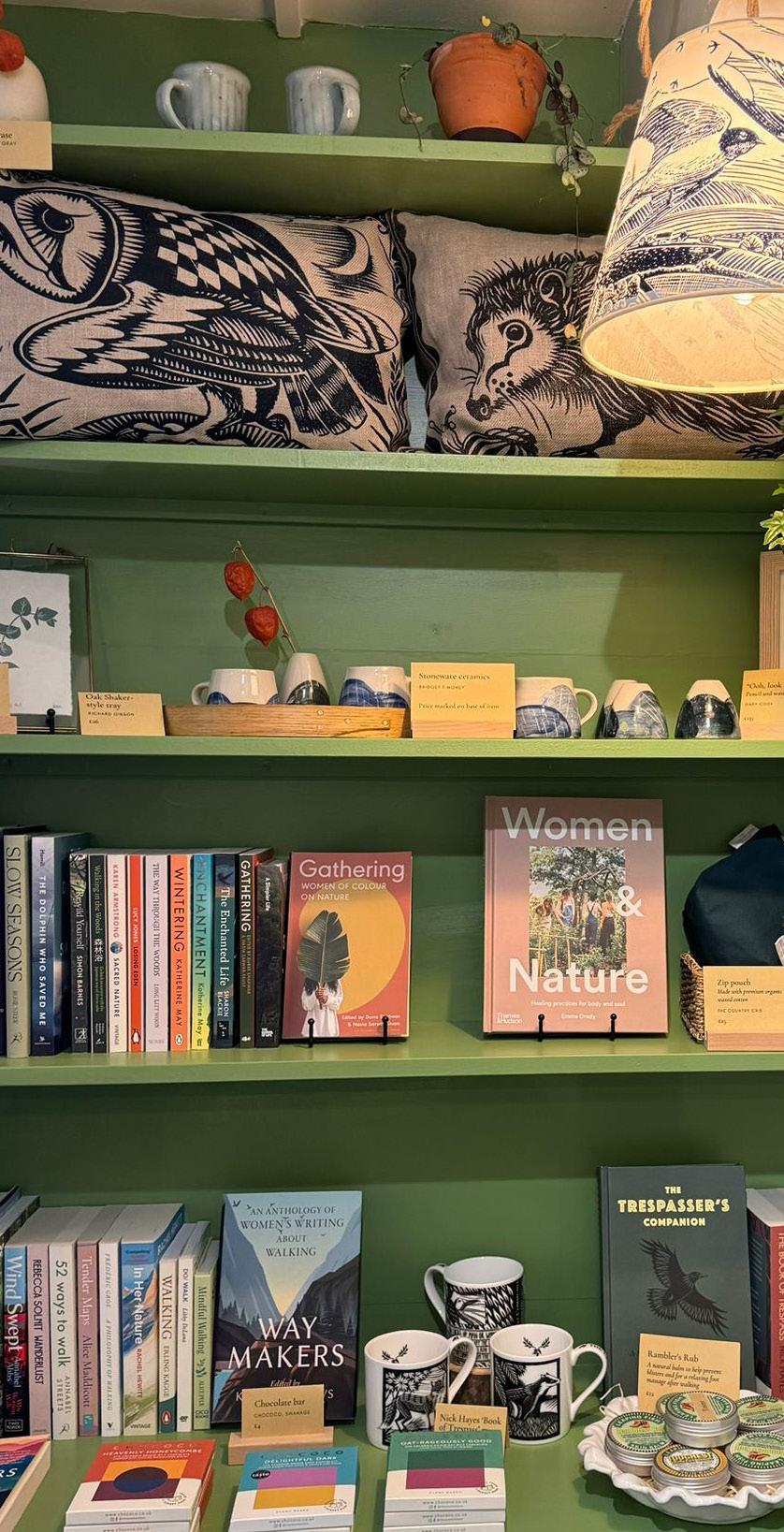
Shaftesbury is beginning to be the place for conversations about nature and conservation. There’s momentum and it’s a delight to see. It’s easy to get gloomy about the world. I can see that, in our own way, with this shop we can start to nudge people’s feelings. There are some really important things here that can change people’s mindsets. Someone might come in thinking they have seen a pretty lampshade in the window and leave with a pile of books on soil or biodiversity. We’re gentle in approach but we have big conversations here.
‘At this stage in our lives, we have never felt more purposeful. It feels as though we’re on a bit of a mission – I hope we’re part of Shaftesbury’s success story.’
FOLDE is now a finalist for the Independent Bookshop of the Year Award, which will be announced at The British Book Awards ceremony at Grosvenor House London on 13th May. The overall Independent Bookshop of the Year winner will also be in the running to be crowned the UK’s Book Retailer of the Year.
• foldedorset.com


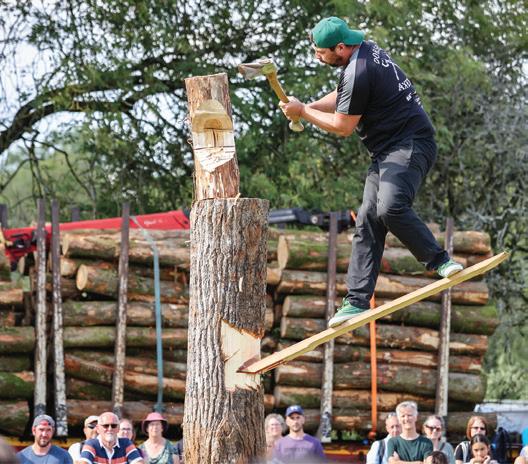


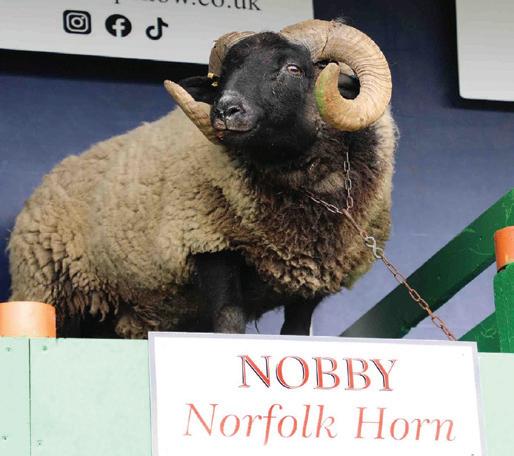


The special guest at the inaugural Dorset Spring Show at Kingston Maurward on 27th and 28th April will be 2024 Great Pottery Throw Down finalist (and Weymouth resident) Dan Sandham. He will be joined by his fellow Throw Down contestant Ed King to demonstrate and lead hands-on workshops.
Dan, who was runner-up in this year’s edition of the popular Channel 4 show, loves ‘making the biggest pot I can.’ Devon-based Ed is celebrated for his abstract ceramic designs, working in stoneware clay, oxides and reactive glazes. They are currently among the hottest names in contemporary British pottery and at the Dorset spring show visitors will be able to watch them as they work and listen to their personal insights into their creative processes – before getting hands-on with the clay themselves.
Dan says: ‘I’ve loved watching the Great Pottery Throw Down for the last couple of months and am excited to be sharing my love of ceramics at this year’s Dorset Spring Show.’
Event organiser James Cox is delighted that the potters will be part of the show: ‘Having Dan and Ed at our very first Dorset Spring Show is a real coup. It’s a fantastic opportunity for our visitors to get up close – to see, learn, and even try their hand at pottery. We love showcasing the incredible talent we have in Dorset, and the pottery workshops are exactly the kind of interactive experience we love to offer visitors.’


The new Dorset Spring Show at Kingston Maurward near Dorchester ’swings open its farm gates’ on the last weekend in April, from 9.30am to 5pm both days. In addition to the pottery workshops, the show offers a variety of attractions for the whole family, including Extreme BMX and Mountainboarding performances, falconry displays and a dedicated Craft Avenue. The Sheep Show, Hogg Show, interactive farm experiences and sheepdog demonstrations are not to be missed. Kitchen and garden enthusiasts can enjoy expert talks and food and floral demos in the demonstration theatres. The Food & Drink village will be filled with local artisan produce. Specially priced advance tickets are available until 20th April. Dorset’s first county Spring Show is shaping up to be an exceptional event, blending the best of rural traditions with contemporary artisan craft.
• Children FREE, adults £12 until 20th April Gate price is £15 per adult, children free • dorsetspringshow.co.uk
Bingo halls to community calls – Shaftesbury’s Rotakids, a new generation of community champions, lead the charge in innovative charity work
There’s a burst of laughter from the hall in Abbey Church of England VA Primary School. Above the sound of excited children, a lone voice clearly calls a set of numbers. ‘On its own. Number seven.’ It transpires that the caller in charge of the hall is an 11-year-old called Ronnie.
The Shaftesbury RotaKids are busy raising money for a good cause – and apparently having a lot of fun too. It’s just one of several events in and around the town in which children are actively getting involved with the wider community in an innovative citizenship project.
RotaKids is a fun and exciting way for young people aged from seven to 12 to make friends and get involved with important activities in the community, and it is a part of the wider Rotary Club movement. RotaKids clubs are based in schools, youth groups or community centres, and with the help and support from teachers, youth leaders and the local Rotary Club, young people gain valuable experience in helping others and learning interesting, new things.

Ronnie is the 11-year-old resident bingo caller
also raised money to get the patients some small toiletries.
‘What has surprised me is the level of motivation and commitment from them. They want to do everything! It’s also wonderful how the schools have embraced it. These children are not just championing RotaKids in Shaftesbury, but in the wider district.’
Fundraising and having fun
They began to see that by working together they can achieve a lot more than working on their
own.
Peter Sale is president of Shaftesbury Rotary Club and established RotaKids in one primary school in 2023. ‘Last year, we started with just one club in Abbey Primary School. This year we are working with Shaftesbury Primary School as well. Each child who wants to take part has to apply for a place through their teacher. That shows how committed they are,’ he says. ‘And just like an adult Rotary group, the children have a president and a treasurer. They make the decisions about how they use the money they raise – with a little help from us, because sometimes their ideas are difficult to implement!
It has really affected their outward thinking
‘The children tend to be aged between seven and ten. ‘We don’t take the reception class because they are a bit too young. They are wonderful, so motivated and so willing to learn. They have helped us with the North Dorset Cycle Ride and they are planning some gardening at the community hospital in Shaftesbury. They
Back in Abbey Primary School, 11-year-old Ronnie is still calling the bingo numbers, clearly and confidently, to a large group of children. He’s obviously a natural and remains calm despite excited children shouting as they tick off the numbers, trying to win a coveted Easter egg.
‘I just grew up learning from my Mum – she does bingo calling,’ he says. ‘You need to be confident and focused, and you need to be able to see what’s going on in the room. And you need a loud voice!’
Amid the chatter in the hall, there’s something more subtle happening. Each younger child (below year six) is paired with an older pupil who keeps an eye on them – helping to make sure they mark the numbers and keep up with the bingo caller. It’s fostering leadership and support skills in a subtle but fun way.
‘We think it helps with their maths skills,’ says head
Michael Salisbury. ‘A bit like darts! We have some Ukrainian children here and they have picked bingo up very quickly. They love being involved.’
Nine-year-old Edith is the current president of the Abbey RotaKids: ‘I joined last year. I wasn’t sure, but Mum encouraged me as she had done something similar when she was young. On my first day I was very nervous but I really enjoyed it. Last year I wanted to be the president but didn’t get it. This year I am the president! We donate the money we raise for a charity or give it to the PTSA. Today I think we have raised £230.10.’
Joint working
Pupils from both Abbey and Shaftesbury primary schools are starting to work together, which is significantly beneficial.
Ben Smiley, a teacher at Shaftesbury C of E Primary School said: ‘The RotaKids worked together recently to pick up litter along Bimport, the Park Walk and down St James Hill. They were amazed by the sheer amount of rubbish.
‘But when they reflected on the exercise they began to see that, by working together in the community, they could achieve a lot more than working on their own. It has really affected their outward thinking. We’re seeing that in the discussions we’re having with them about fundraising.

‘What’s really beneficial is it gives us an opportunity to have that wider involvement with the community. Also, when the children are voted into positions by their peers, that can be a huge boost for them. It’s really good for team work.’
It’s something echoed by Michael Salisbury: ‘It really gets children involved with the community and they learn the value of volunteering. We always say the parents are volunteers too, because they have to bring them to meets. The potential for the children for learning is very high and they love it.’

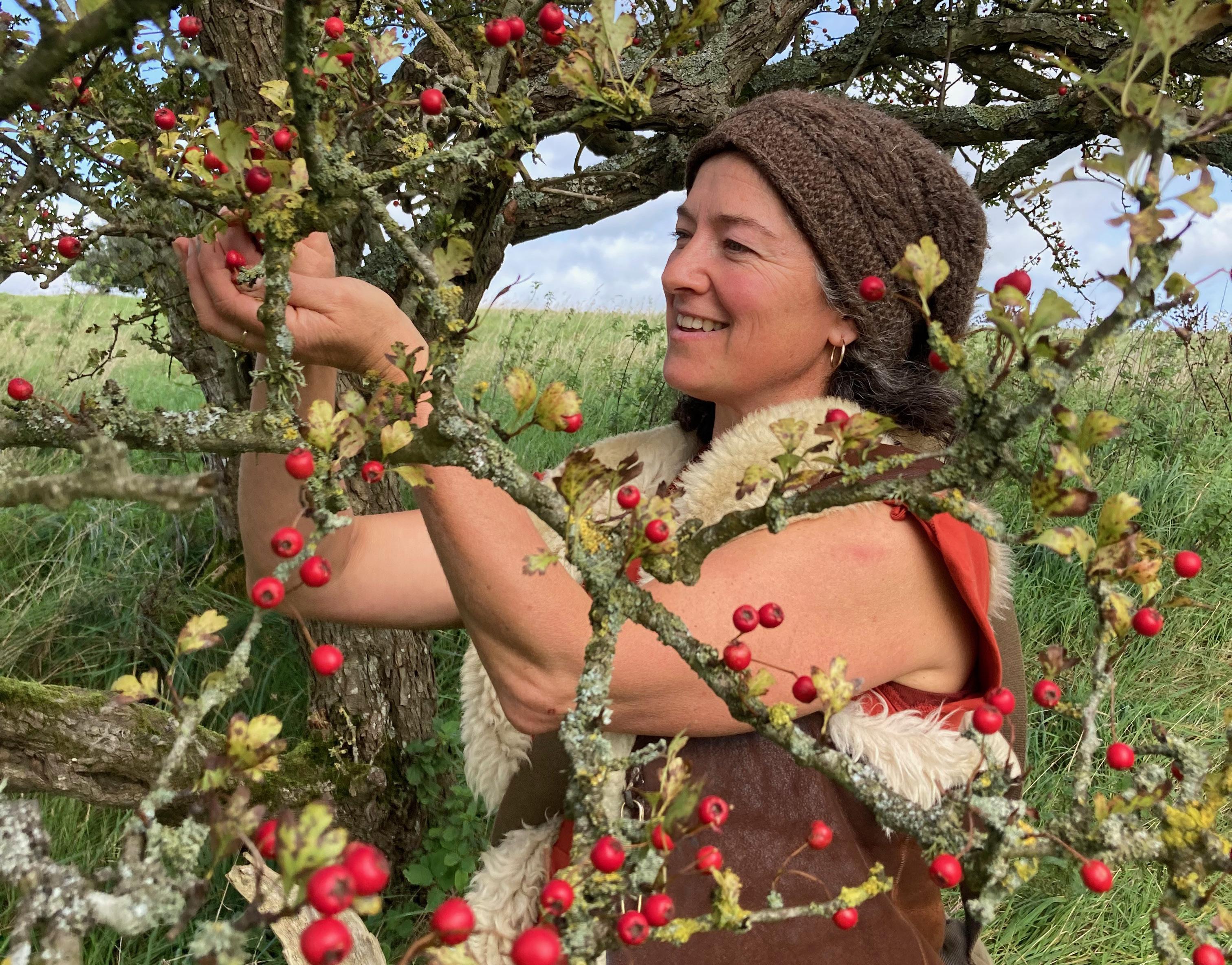
Eleanor Gallia has a pragmatic approach to herbal medicine, and merges tradition and science in her effective, earth-sourced medical practice
‘It’s always been very much part of how I’ve been,’ says medical herbalist Eleanor Gallia, whose practice draws on tradition and science. Her house is full of dark-coloured glass bottles, book cases stacked with them, containing her myriad remedies – the dark colour necessary to preserve the integrity of the remedies.
We sat in the cosy study, as she explained what had led to her becoming a medical herbalist.
‘It’s the second oldest trade on Earth,’ she says.
Medical herbalism is ancient, dating back some 60,000 years to the Palaeolithic. Around 5,000 years ago the Sumerians listed hundreds of medicinal herbs on clay tablets - the first ever written records.
Her studies included standard medical subjects – anatomy, physiology, pathology, sharing the mortuary with Edinburgh University medical students
bringing them into the house, until her mother told her she couldn’t, unless she was able to name them. ‘Many of the old names tell you a lot about the plants,’ she says. ‘How they work, what part of the body they might work on – liverwort for example, or pulmonaria (lungwort). When I was on the farm I was fascinated by how the sheep would selfmedicate, going to ivy to cleanse their afterbirth, for instance, and the dogs would eat couch grass to rid themselves of something in their stomachs.’
Eleanor grew up on a farm and plants have fascinated her since she was little. She was always
Eleanor was studying mediaeval literature when she switched to the study of herbs as medicine, training as an apprentice in a firm established in Edinburgh in 1860. But she’d already begun to have some understanding of herbal medicine from reading Chaucer’s Canterbury Tales at school in Sherborne: ‘Something bigger opened up, the



SPRING FAIR
SATURDAY 27 APRIL 10AM – 4PM
Featuring more than 25 designer makers, homeware brands, plant nurseries, books, fashion, locally-sourced food and drink.
Brands include Niwaki, Another Country, Bramley, Compton McRae, Pink House, Africa Odyssey, The Travel Book Company, Planted, Robert Kennett Garden Designer among others.
Where Chaldicott Barns Semley SP7 9AW
For more info chaldicott-barns. co.uk
Free Admission
concept of “humours” – black and yellow bile, phlegm and blood, related to the four elements and the four seasons – and how human health depended on a balance between them.’
Her studies included standard medical subjects – anatomy, physiology, pathology, sharing the mortuary with Edinburgh University medical students –in addition to botany. It was a rigorous training, designed to be able to ‘match the plants to the people’. Part of a medical herbalist’s skill is to find a remedy tailored to the individual.
‘The key word is holistic,’ says Eleanor. ‘It’s seeing the whole person, seeing the big picture and understanding how to rebalance the body.’
Disease (literally ‘dis-ease’), says Eleanor, is when we humans become divorced from the natural world where we belong, separated from the rhythm of the seasons and the cycle of the land. ‘We become unravelled. We become dis-eased. We rush off and look for instant panaceas in nature, looking to buy an instant cure. We think we can fix it through, for instance, a weekend workshop. But that won’t work. Just buying a herb pill on the internet might help your symptoms, but it’s not going to treat you holistically, it’s not


going to reduce the gap in the way that we live and the way we interact with the world.’
She is also increasingly concerned that many of the herbs available as remedies in one form or another are not native to this country, and she argues that we need to be looking around at what common herbs and plants grow right here on our doorstep, and to use those: ‘A plant that’s grown sustainably has got much more depth to it, more resilience, it’s got what we’re looking for, rather than artificially cultivated rows.’
Many of the plants we call weeds – dandelion, elder, cleavers and nettles – have medicinal benefits that have been known for centuries. Even the sting of the nettle does us good, stimulating the blood, bringing it to the surface, helping with rheumatism and arthritis. Her advice: pick the new shoots. She gave me a mug of fresh-picked nettle tea – and it was delicious!
Eleanor’s workbench in her Dorset practice
Eleanor is well-known locally for creating the Beltane Brew, made in conjunction with the Cerne Abbas Brewery, to be drunk as part of the Cerne Giant Festival’s celebration of spring. It’s a brew made of beer and locally picked wild herbs that cleanse and stimulate the body and rid it of its winter sluggishness.
Eleanor has a farm in Nether Cerne. Before I left, she took me up into one of the fields above her house to pick fresh hawthorn berries that are, she says, excellent heart medicine. Her main focus now is the farm and managing the land biodynamically – “healing it” as she puts it. It’s a more than fulltime job, since she does it singlehandedly! Eventually, she’d like to be able to source all the herbs she needs for her practice from her own land.
• You can join Eleanor for the Gathering The Herbs for the Beltane Brew - tickets from £16
Jules Bradburn’s market empire expands to Dorchester – the latest Dorset town to benefit from a new 200-stall Sunday artisan market
Since the first monthly Sunday Sherborne artisan market opened back in 2019, it has become a regular go-to fixture for many. It has proved a great success, as, it seems, has the similar independent Sunday market launched in Shaftesbury last year. Both have lots of local traders selling a great range of quality food, crafts and clothing, They have quickly established a reputation as good places to treat yourself (or someone else), to grab a coffee and a bite to eat or to just enjoy whiling away an hour or two.
At the end of April, Dorchester will see the opening of its own artisan market. All three Sunday markets are masterminded by enterprising Sherborne resident Jules Bradburn.
Stallholders have been quick to book a pitch in Dorchester, where the new market will set out its wares on 28th April from 10am to 3pm. The market will spread from the Borough Gardens, where there will be music and entertainment, to West Walks, Bowling Alley Walk, South Walk, South Street and around Brewery

Square. It will be big, with more than 200 stalls.
‘There’s a real appetite for a good market in Dorchester on a Sunday, and for keeping things local,’ says Jules.
As well as establishing high quality independent markets, Jules Bradburn also sits as a circuit judge for more than 30 days a year on benefit payment tribunals in the western circuit law courts. ‘It’s a really interesting job and the total opposite to the markets.’
She finds her two very different jobs complement each other and she loves dealing with the market traders. ’They’re a great bunch of people,’ she says., ‘I received an email from a visitor recently. It said: “your market is wonderful – like having Etsy in your back garden.” It was lovely. But it is also really reward to ensure that people are getting the benefits they’re entitled to. You can literally see the relief on their faces when they’ve battled the system for a long time.’
As if organising soon-to-be three artisan Sunday markets weren’t enough, Jules and her team have recently been asked to take over the regular Saturday market in Langport and the May Shaftesbury Food Festival, in addition to two Christmas fairs next December.
‘In the middle of January, I was discussing how many Christmas trees we would need … and it was only three weeks after last Christmas!
Jules knows that people want variety at independent artisan markets. ’They want choice. They want to see new, interesting things, so we make sure we have lots of different traders, all mixed

up in different places. Dorchester is big, so it’s going to be really exciting!’
Jules is now left with one marketfree Sunday a month.
• dorsetartisanmarkets.com




Tracie Beardsley discovers the timeless grind of Cann Mills, where the Stoates blend tradition and modernity in the craft of organic milling
Cann Mills, near Shaftesbury, was recorded in the Domesday Book. Today, fifth and sixth generation millers Michael and Ollie Stoate produce a range of organic flours for both domestic bakers and fancy London bakeries.
Wearing a light dusting of their trademark flour, Michael Stoate sits with his son Ollie, in their small office, with the walls decorated with hessian sacks proclaiming a five-shilling reimbursement on return. Modern-day computers sit alongside red and blue leather-bound ledgers. Inside these, beautiful handwriting holds the records of 180 years of the Stoate milling legacy. This millers’ tale dates to brothers William and
Thomas Stoate, who leased a mill at Watchet in Somerset in 1832. Four generations later, Michael’s father, Norman, came to Dorset in 1947, bought Cann Mills, and began supplying animal feed to local farmers.
Disaster struck seven years later when the mill burnt down. Michael says: ‘Part of the mill was run by a diesel engine and its manifold overheated, setting hessian sacks on fire. Father was delivering animal feed and saw this plume of smoke billowing from the valley.’
Flour dust is more explosive than gunpowder and 35 times more combustible than coal dust: ‘It took all of the Tisbury, Gillingham and Shaftesbury fire
Stoate & Sons produce a range of organic flours for both domestic bakers and fancy London bakeries


brigades to put it out. Luckily no one was hurt, but it meant my father had to completely rebuild.’
Norman switched production to stoneground flour, using massive French Burr millstones driven by an iron waterwheel powered by the Sturkel, the tributary of the Stour that runs past the mill. That wheel is still a formidable force, providing a quarter of the mill’s power and helping produce 800 tonnes of flour a year.
Michael recently unearthed the 1860 invoice for the waterwheel at the Dorset Archive. It was made by the Maggs and Hindley iron foundry at nearby Bourton, and cost a princely £36.
Michael says: ‘I’m also looking through old cine films. It’s incredible to see how cold our winters used to be. We’ve got footage of villagers skating on the mill pond.’
For Michael, who is 62, the mill was his childhood playground, larking around in the grain stores and boating on the millpond. It became his first job as he began helping during school holidays. ‘I didn’t like school and I left early. I’ve always liked tinkering around with machinery, so I did an engineering course. My father was getting old – he had me quite late in life and the physicality of milling work was taking its toll, so I joined him full-time.’
For Ollie, who is severely dyslexic, school was also a challenge. But he showed the Stoate entrepreneurial spirit at an early age. Aged ten, Ollie started making dog biscuits from spare flour, tagging along with his dad to sell them at trade shows.

miller. I studied gamekeeping and worked in Australia. But just like dad, I started working parttime here and loved it,’ says Ollie. Now 28, he is taking Stoates into the modern era – while respecting its heritage.
‘We were milling organic flour before organic was really invented!’
‘There was zero pressure from dad to join the family business, and I didn’t plan on being a
‘My dad and grandfather always taught me that if a job’s worth doing, it’s worth doing well and worth doing as soon as you can. Evolution is essential, and my aim is to introduce one major upgrade every year.’
This includes a green energy
The flour is ground from natural grains in all their distinctive colours and shapes
solar power grant from Low Carbon Dorset. ‘If we generate our energy ourselves, we can remove all the drive belts which are a huge health and safety risk. It will also allow us to produce flour 24/7.’
Cann Mills is now a leading voice in the South West Grain Network (SWGN), which brings farmers, millers and bakers together to discuss better ways to support each other. Michael says: ‘These relationships support regenerative farming to look after the soil.’
Forerunners in organic products, Stoates flour is certified by the Soil Association and a lot of their grain is sourced within a 30-mile radius. ‘We were milling organic flour before organic was

Cann Mills was mentioned in the Domesday Book, but a major fire in the 1950s means that today’s mill building looks less medieval, and more ‘industrial mid-century modern’
really invented!’ says Michael.
‘In the late sixties, just as health food stores became popular, we milled ‘compost grown’ grain from a local farmer. The flavour was great and the provenance unquestionable.’
Michael and Ollie agree: ‘One of the best parts of this job is being in the middle of such a strong, local supply chain. We love chatting to farmers beside crops that we will transform into flour, and then deliver to artisan bakers to produce amazing bread.’
• stoatesflour.co.uk

Stoate & Sons produce a range of organic stoneground flours – spelt and rye, strong 100% wholemeal, strong white, brown and white self-raising and the popular Maltstar

The 1860 waterwheel still provides a quarter of the mill’s energy. It was made by the Maggs and Hindley iron foundry at Bourton, and cost a princely £36.


Sandwiches and Statesmanship: the North Dorset MP’s path from shy child to a voice for pragmatism and local community, via his favourite music
‘I was incredibly shy. I had quite bad speech defects as a child – I couldn’t say my R’s, my W’s, my th’s – that made me even shyer. It’s quite extraordinary that I now find myself doing a job which is mostly speaking, where an air of confidence is required!’
Simon Hoare MP proffers a sandwich before leaning back comfortably and sliding a sticky bun my way. ‘The cake is all yours, by the way. I’ve given them up for Lent.’
We have met in his Blandford office; Simon squeezing me in for a shared sandwich and a chat between appointments on his one day in Dorset this week. Elected as MP for North Dorset since May 2015, he has served as Parliamentary Under-Secretary of State for Local Government since November 2023.
‘As I fast approach my 55th birthday I look back to little Simon and don’t really recognise myself. People say you become more dogmatic the older you get. But my experience is completely the reverse. I remember having a huge row with my religion teacher – I went to a catholic state school in Cardiff – about the merits of the death penalty. I told her I was so sure of, so proud of the death penalty, I would be the one pulling the lever. Now of course I am totally, totally opposed to it.
‘I’ve gone the other way – I’m much more liberal than teenage me, and far more convinced of the merits of compromise and pragmatism. Politics isn’t black

and white, it’s various shades of grey, trying to accommodate competing views.
I deliberately failed my French O level, just to put his stats out – I was terrible, when I look back
My wife comes from a very quiet family. When I took her home for the first time I remember her looking absolutely askance at all of us as we sat arguing over Sunday lunch. Not over, you know, whose turn it was to do the washing up –we would arguing vociferously over whatever the political issue of the day was.
My father’s side of the family were originally Labour, my mother’s Liberal. When I was
15 or 16, I thought I was going to be a teacher – I loved (and love) history.’
A random selection of unconnected circumstances set Simon on a different path: ‘The school that I went to was very mixed. It was situated in a large, poor, post-war council estate, but also served some quite leafy, middle class suburbs of Cardiff. And I realised that there were life chances which were being missed by certain people. It was the early 80s, and the trade unions were on strike – I remember teaching a few lessons to some of the younger kids, and being accused of being a scab by one of my teachers. I said, “I can’t be a scab (I was very
precocious) – I’m not a member of any union”. My grandmother had died during the winter of discontent, and we had a long wait for the gravediggers to come off strike in order to have her grave dug. It all helped to create some of my political attitudes.
‘Then one afternoon I got off the school bus, on a rather damp drizzly afternoon – Cardiff is damp and drizzly most afternoons – and saw this guy I thought I recognised. “I think you’re our MP”. He said yes, and then – and it’s either the best question I ever asked, or the worst – I said, “is there’s anything I can do to help?”
‘He gave me a bundle of increasingly soggy leaflets, and we leapfrogged down the road delivering them while having a conversation over fences and hedges and gates. By the end of it, he’d managed to find a dogeared Tory party membership application form in his pocket, and I managed to find about £3.70 in change in a trouser pocket and handed that over as my membership fee. And I was in – and I was hooked.’
‘Brideshead Revisited was on the telly at the time, and me being a humble, modest, mild-mannered sort of chap, I set my sights on going to Oxford.
It was totally unexpected at home – I was the first of my family to even go to university. I had an incredibly horrible relationship with my French teacher – he loathed me, but not as much as I loathed him. I deliberately failed

my French O level, just to put his stats out – I was terrible, when I look back.
‘One parents evening, he told my parents: “He’s quite bright, but not Oxford. He could maybe try for Aberystwyth.”
‘Instead of depressing me, it fired me up – come hell or high water, I was going to get ot Oxford. And I did! Once there, I got really involved in politics, and also made some good and long lasting friends. Friendships which have continued – many of which are in the House of Commons with me now, representing the full range of opinion, and across the parties. I would argue with Meg Hillier late into the evening – she’s now one of the Labour MPs for Hackney. We were both catholics, and she could never understand how you could be a catholic and Tory and I could never understand how you could be a catholic and a socialist.
Everybody has this idea of Oxford being really elitist and snooty,

but it’s like anything in life – it’s whatever you make of it, and I totally enjoyed it.’
A Dorset blow in Simon began a public relations career in the 1990s: he worked at global PR firm Ketchum and the PPS Group before becoming external affairs director at the Environmental Services Association.
He than began his own public relations and lobbying company. He stood as a Tory candidate in Cardiff West in 1997 and again in Cardiff South and Penarth in 2010, after which he was a director at a major PR agency.
‘My wife was from Oxfordshire, so when we married in 2000 we moved there, coming to Dorset in 2015 when I stood for the North Dorset seat.
‘There’s not a drop of Dorset blood in my veins, but we had lived in a rural area not far from the Gloucestershire border. I was brought up on the outskirts of Cardiff – not in the countryside at all. But I feel more at home in the country than anywhere else. And there’s some sort of magnetic pull when I go to London. Much as I enjoy Westminster, when I see that ‘ Welcome to Dorset’ sign near Shaftesbury, I feel myself relaxing. It’s home – I’m back to family and friends, and to the people that I like and admire and respect and work alongside and try to emulate.
‘Most Dorset people are just trying

to get on with their lives – they look to officialdom to just not get in the way.
‘They are kindly to a fault, and have common sense written through them like ‘Blackpool’ through a stick of rock. It’s a very rare commodity.’
As a ‘blow in’, Simon needed to work fast to understand his new county – but felt he was already well on the way thanks to his experience in Oxfordshire.
‘I had been a rural district county councillor, and a lot of the issues were very, very similar. Housing – the provision of, siting of and lack of. It was trying to get broadband to the rural areas.
The importance of agriculture to the economy, the importance of our village schools, pubs, shops … those were all issues which came with me. And then the best thing to do is ask. When I wasn’t certain about an issue, I’d go and talk to a parish or district councillor, knock on a few doors and say, “Look, I’m hearing about this, can you tell me about it?”
You just have to roll up your sleeves.
Getting out of bed
‘I’m naturally a nosy person. One of the great things about being an MP is that you can bowl into anywhere and ask all sorts of questions. When they would say bugger off to most people, they’ll tell you – how much they’re

earning, how much something costs, what their profit margins are, what’s keeping them awake at night, how next door’s cat is digging up their begonias … Politics is very personal, it’s about people, and that’s what motivates me, what gets me out of bed in the morning.
I admit I’m a slightly romantic Tory. There are some – in all parties – who will view their constituency as the launchpad to be a member of parliament.
If I were to lose North Dorset, it would feel like a bereavement. Like some sort of terrible amputation
‘But I think it’s a rather transactional relationship – you’ve got to invest. And you have to feel some heartstring relationship to the area, so that when you’re trying to do your best – and we all try to do our best – you’re doing it for a purpose. Because you should be, I think, romantically attached to your

constituency, and emotionally attached to your constituents.
‘And I think if you have that, the days when it’s frustrating, when you’ve been hitting your head against a brick wall, if you can draw on that connection, it’s an extra push: “I haven’t been successful going that way, but I’m not going to give up. We’re going to go around, and try and find another way.”
‘You have to really care about your constituency. If I were to lose North Dorset, it would feel like a bereavement. It would feel like some sort of terrible amputation had taken place. Because this is home. These are not constituents. These are friends. There was a wonderful advert, I think it was a Croft Original sherry – yes, yes, other sherrys are available! – back in the 90s, which said “strangers are the friends you’ve never met before”. And that’s how I feel about my constituents. An elderly couple came to see me not long after I’d first been elected. They had no family, they were frail in health. And they told me they were contemplating suicide. They were terribly proud – they thought it was a total personal failure to ask for help. But they were finding life such a struggle. So I said “Look, can you give me a fortnight? Please?”
‘We made all sorts of calls, went to see so many people. When I spoke to them again, I told them “You’re going to have to lose the pride, you’re going to have to
accept some help.” And we got Meals on Wheels, and somebody to come in and tidy up the house and somebody to come in and do the garden. They invited me back for a cup of tea a couple of months afterwards, and they were a transformed couple. You never know who’s going to come through the door, with what sort of problem, with what sort of life story – and sometimes in the most extreme desperation. If you can just do that little bit of something, to sometimes kick open the door – the potency of those two letters, of ‘MP’ after your name, to get officialdom to listen, instead of “your call is important to us” or “Fred will email when he’s back from lunch” … to me, that’s the best part of the job.
A life in music
And so to Simon Hoare’s music choices, in no particular order, along with how and why they have stuck in his life:
Me O Thou Great Redeemer - Cwm Rhondda
It’s a great Welsh hymn. I had it at my wedding, and we had it at the baptisms of our three daughters. It’s a sort of national hymn, if you will, speaking back to my Welsh roots, but it’s also very much a family hymn as well.
Rondeau from Abdelazer
Henry Purcell
This is an incredibly powerful

piece of music. Actually, it’s another we had at our wedding – my wife came in to it and my brother, who is a musician, said he thought it very strange that you would start a wedding service in a minor key. I said don’t worry, the recessional is very much of a major key. So that was fine!
It’s a wonderful, wonderful, wonderful piece of music. I like Baroque music, there’s a pulse and a beat to it. It is like a heartbeat, it feels like part of your life essence in a way.
Chitty Chitty Bang Bang
The Sherman Brothers
We bought this on a CD when the girls were quite small, and we played it all summer, particularly when we were on holiday. I have the strongest memories of heading to the beach and dropping down this hill. We had all the windows open, and we had

the song on full blast, singing it at the tops of our voices.
It’s just this joyous memory of family time and seaside and fun and relaxation.
Torn
Natalie Imbruglia
I think we have to have a reasonably modern one in the list. Natalie Imbruglia was an actress in Neighbours, and I think she really only had this one hit. My wife always laughs at me, she says I have an eclectic taste in music. But I just like it. There’s a wonderful musicality to it. I think I’d enjoy it on my island.
Eternal Father Strong to Save William Whiting
I think I have to have this for my late father, who had a very dry sense of humour. We used to holiday a lot in Pembrokeshire, and we’d always go over to Caldey Island on the boat. Every time he’d start singing Eternal Father Strong to Save – it’s the great Naval hymn. He’d never been in the Navy, he’d been in the army, but that didn’t matter. And I would sort of sit there: “Dad, please, don’t, it’s really embarrassing,” and all the rest of it. But I cannot hear that hymn without thinking of him in a boat. And if I ever take the girls out, even on a little boat, I must confess I do precisely the same thing in homage to him. And also because it amuses me to embarrass my children.

Umbrella Rhianna
This came out during a particularly wet weather period so there was an ironic humour to it. My daughters and I play it in the car on the school run and sing along with some considerable verve. It’s become a sort of family anthem – a powerful melody. Given recent weather we’ve been playing it a lot!
Bach’s Goldberg Variations
It’s a sublime piece of music which, oddly, was made even more sublime when it was used in one of the really violent scenes in Silence of the Lambs. The juxtaposition of musical heaven with human horror was a fantastic piece of cinematic inspiration. It’s a glorious piece of music and so typical of Bach’s wit and cleverness in composition. There is a timelessness to it.
Queen of the Night aria from The Magic Flute – Mozart
This wonderful aria ... again, it’s the musicality of Mozart. For the time this was as groundbreaking as punk was in the 70s. But I think his musicality is even bettered, if you will, by the range of the sopranos voice. There’s such a power to it, it is incredible. One of the joys of being a government minister is that occasionally you’ll get access to a car from the government car service. And if possible I get Archie, one of the department’s drivers. He’s a lovely, lovely man, he’s been driving government ministers around for 30 years. He’s a devotee of Classic FM, and we have a continuous game of Name That Tune. But whenever this aria comes on I make him turn the volume up to the absolute top. Obviously I try and sing along – not particularly well. We have a great time.
The Book
I’m going to take Jude the Obscure with me. Obviously Hardy is one of our premier

English writers, and a figurehead for Dorset – and I suppose that feels a bit of a cliché choice. But I think of all of Hardy’s writing – and I love all of his writing – I think it’s Jude that speaks most to the human condition. I usually end up crying at least four times. You’ve got this poor guy, with a perpetual desire to improve and do better. He was a classic meritocratic Tory in a way. He said “Look, it doesn’t really matter I’ve been born into poverty in a little village in Dorset. I’m going to achieve something.”
He’s laughed at when he wants to go to university, and he makes his way there anyway. He gets duped into thinking he’s fathered a child, and then there’s that terrible scene when the kids hang themselves in that grotty little room because the eldest son has overheard the parents say they can’t afford to feed the children and he thinks he’s doing the best job of all by killing his siblings and then himself.
It’s life. It’s hope. It’s despair. There’s aspiration, there’s frustration. I think it’s the most acute social commentary of the time, but it’s still so relevant today. I mean, I say it so often I end up boring myself about the importance of education. All the doors that I have been able to open in life, whether that was going to university, setting up a business, standing for parliament, serving in parliament, being a minister, chairing a select committee … whatever it may be,
ALL of those doors were opened by the keys of education. You could write Jude the obscure today, and I don’t think it would feel an ancient novel.
I can’t take my family, can I? In that case, can I take some seeds? I’m a keen gardener, it’s something that ties me to my grandfather, my parents … and my children like gardening, whether they like it or not. DIY, as far as I’m concerned is ‘Don’t Involve Yourself’ – I couldn’t build myself a useful shack or a canoe to escape or anything. So I’m stuck on this island. But I can grow plants. I don’t really need to know what the plants are, just some for decoration and some to eat. But I would like it on record that you’re being very cruel not to let me take my wife and children with me.
And if you can only save one disc from a freak tidal wave?
I think I’m going to take Guide Me, Oh Thou Great Redeemer. This hymn was at my wedding, the baptism of my three children, my father’s funeral … listening to it would pull all my emotional family threads together in one piece of music.

Click to listen to Simon’s playlist on YouTube














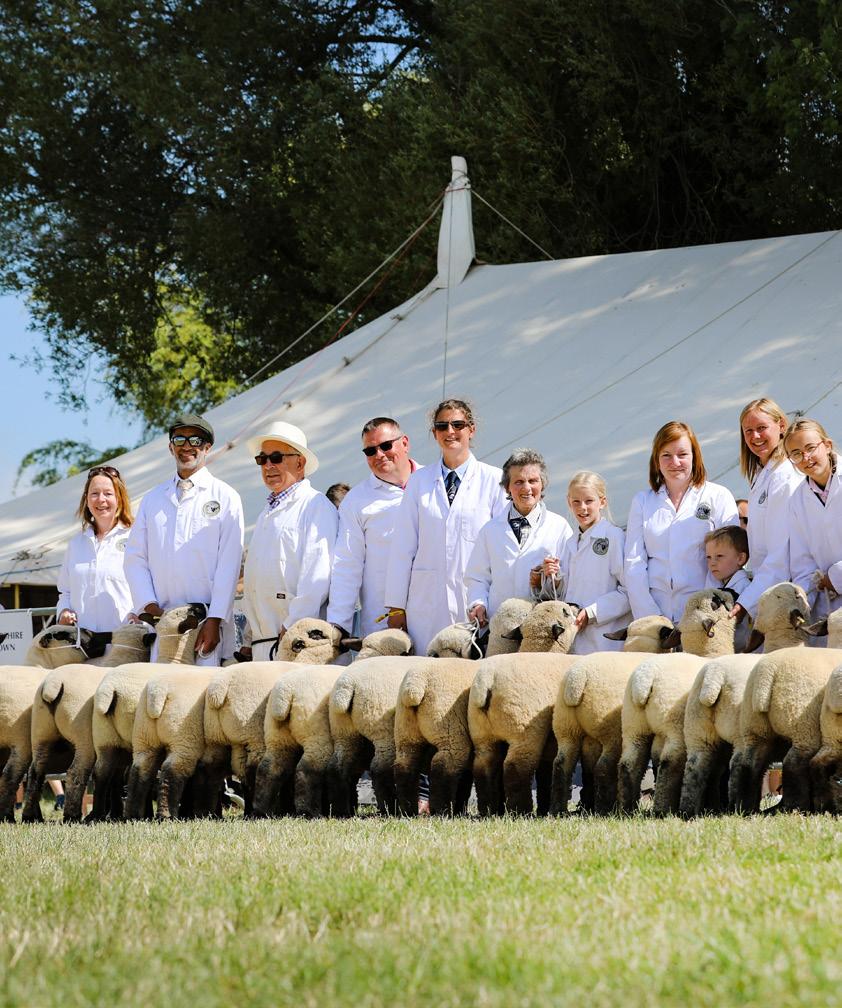
Global meets local in Semley, uniting Dorset’s finest with international brands for a showcase of sustainability, craftsmanship, and enterprise
Businesses in Semley are set to open their doors again for the second iteration of the eagerlyanticipated Chaldicott Spring Fair.
After launching last year to widespread acclaim, the Chaldicott Spring Fair will welcome visitors from across Dorset, Wiltshire, Somerset and beyond as resident businesses at the award-winning rural office and retail development showcase their wares.
Among the 25 businesses present will be Africa Odyssey, a highly-regarded bespoke safari tour operator, who opened their second office in Semley last autumn to complement their London office. The event will also feature internationally renowned brands such as furniture makers Another Country and Japanese garden tool specialists, Niwaki.
‘The move to Chaldicott Barns was a big step for us as a business. We’d had 25 years with solely a London presence, but we are delighted with how things have gone so far and the reception we’ve had from local people and businesses,’ said Africa Odyssey managing director Ted Archdale, who moved to the local area with his young family in 2020. ‘A major reason for us opening a Dorset office was the concentration of fantastic businesses already here, and the audiences and customer base they naturally draw in.’
Sustainable furniture brand
Another Country opened their showroom at Chaldicott Barns last year – owner Paul de Zwart, who lives nearby, is also delighted to have made the move out of the city.

‘Our London showroom has historically been where we have met our customers face to face. But we recognised a growing West Country audience, and felt Chaldicott Barns were the perfect place for us to physically locate ourselves in this beautiful part of England,’ he said.
Books, baths and brands
Natural bath and body care producer Bramley, founded by local entrepreneur and mum Chloe Luxton, was a winner of the 2024 beauty shortlist awards. they will be returning to the Spring Fair, having been in residence at Chaldicott Barns for the past three years.
‘Last year was a huge success for us and we’re hoping even more lovely visitors come to see us for what is set to be another wonderful local event,’ Chloe said. ‘We couldn’t be more excited.’
With food and delicious coffee provided onsite by Compton McRae Kitchen and Larder, specialists in a range of artisanmade products, visitors will be able to enjoy superb food and drink.
Homeware brands, plant nurseries, fashion and books will also be on sale, with residents
The Travel Bookshop sure to be in high demand from those planning an African adventure or beyond.
Local author Sam Peters, whose book Concussed was recently shortlisted for the prestigious William Hill Sports Book of the Year Award, will be among the exhibitors, alongside Pink House Mustique and Robert Kennett Garden Designer.
Acclaimed local business, Planted – founded by another local entrepreneur Deborah Spencer – will host a small curated offering in the main courtyard featuring some of their favourite sustainable brands including Country Crib, The Sustainable Shop, Snow Shepperd, By:BW and Old Green. ‘Chaldicott Barns has become a real hive of business activity in recent years, with many of the lovely local brands sharing our love of high-quality sustainable design,’ said Deborah, one of the organisers of this year’s fair.
• Chaldicott Barns Spring Fair, 10am to 4pm
Saturday April 27
Admission free
Semley
• chaldicott-barns.co.uk




Under Jules Bradburn’s guidance, Shaftesbury’s first Feastival is set to be a packed community feast of food, culture and artisan market
When Shaftesbury Food & Drink Festival committee stepped down last year, the town council didn’t need to look far for a new organiser. Jules Bradburn has been running the popular monthly Shaftesbury Market for a year as part of her growing empire of Dorset artisan markets. A one day community festival was soon planned for 5th May, 10am to 5pm.
‘I was excited at the thought of a Shaftesbury Feastival,’ says Jules. ‘As soon as we started to talk about it, it grew and grew. It’s going to be such a special day – a literal feast of events and traders.
‘We’ve been lucky to be sponsored by Gritchie Brewing Co, who will be unveiling a new travelling bar at the event.
‘There will be amazing workshops with celebrity chefs all day in the Grosvenor Arms. Chef, writer and TV judge Philippa Davis will be cooking with local produce, and there be three Cookery Hands On with Lesley Waters and Steve James workshops, focused on using products from the artisan traders. Visitors can spend time with Torie True as she chats about Indian food and cooks recipes from her book Chilli & Mint. Local chef Sunny Sin will be sharing a Thai cooking demo, and Lucy Parr, the Friendly Baker, will be offering tasters and advice on allergy-friendly baking. Mat Follas is running a guided foraging walk, but that’s already fully booked!
‘Excitingly, we’ve been working with Shaftesbury Refugee Group, and we also have a Ukrainian fermentation workshop – the bread is amazing! And we are sponsoring two Syrian refugee families to have stalls at Feastival. Imad and his wife Bayan started Kababji Syrian Cuisine four years ago in Gillingham, and Ammar and Samar’s business, The Hammouds’ Kitchen, is based in Shaftesbury.’
See here for further talks and workshop details - Booking is advisable as spaces are limited. All events are FREE, but when you book Jules is asking for a donation (in lieu of a set ticket fee) to The Vale Pantry, North Dorset’s social supermarket. Outside, there will be more than 150 carefully selected artisan market traders on the High Street and Park Walk, says Jules: ‘There will be a choice of international hot food available, including Thai, Ukrainian and Indian, as well as street burgers, loaded fries, raclette and roundbelly rice. We’ve made sure there will be affordable options across the Feastival, so that there’s something for everybody. There will also be plenty of stalls with

Away from the main market, the historic Byzant Ceremony will process to the well at Enmore Green – an ancient custom unique to Shaftesbury, in which the hilltop town’s right to draw water required ceremonial payment.
Shaftesbury Abbey will be hosting Tuzzy Muzzy workshops - a medieval term for a traditional nosegay of flowers – and will welcome the choral community choir. There will be more live music on Park Walk all day.
A highlight of the event will of course be the famous Gold Hill Cheese Run. Unlike familiar cheese-rolling contests, in Shaftesbury competitors race up the incredibly steep, cobbled Gold Hill, carrying locally-made truckles of cheese. If you think you’re strong enough, registration is on the day outside the Guildhall, and heats begin at 1pm.
All profits from book signings, talks and celebrity chef events will go to the Vale Pantry social supermarket.
‘The Feastival will be a brilliant day for coming together,’ says Jules. ‘Food is friendship. It’s chatting, sharing, caring, meeting and educating. Food is community.’
• Shaftesbury Feastival is on Sunday 5th May from 10am to 5pm
• shaftesburyfeastival.com
Wimborne is set to travel back in time with a spectacular reenactment of a 17th-century battle, highlighting the town’s historical significance during the English Civil War. From 25th to 27th May, the English Civil War Society (ECWS) will bring over 600 members to recreate ‘The Battle for Wimborne,’ featuring foot soldiers, cavalry, and a military camp at Julians Bridge. The event promises a Hollywood-like spectacle with elaborate costumes, artillery, and galloping horses, encapsulating the intense struggle that existed between Royalist Wimborne and Roundhead Poole.
The reenactment will culminate in two large battles on the 26th and 27th, pitting the Roundheads against the Royalists in a dramatic clash for control. Alongside the battles, Minster Green will also be filled with action – experience the riot that broke out in Wimborne Minster church, causing the Earl of

Shaftesbury to send in troops. The event aims to educate and entertain, bringing history alive through living history displays depicting life in the 17th century. Visitors can see basket making, weaving, dyeing, food preparation, music, printing, writing, needlework, embroidery, woodturning and paper making, get advice from an apothecary, discuss battle scars with a surgeon or bump into a busybody laundry woman! It’s an opportunity to interact with history, and to understand
both the military and civilian aspects of the English Civil War. An exhibition at The Museum of East Dorset, From Revolt to Rebellion, will extend the historical journey, depicting Wimborne’s transformation from the Civil War through the Restoration to the Monmouth Rebellion.
The free, not-for-profit event is a collaboration between the ECWS and the Museum of East Dorset, Wimborne Town Council, Dorset County Council, The Minster, local schools and Wimborne BID.
This year’s Dorset Mud Run is proudly supporting Diverse Abilities, the county’s dedicated disability charity. The event, to be held Saturday 18th May at Stock Gaylard near Sturminster Newton, promises a challenging 6km obstacle course – swinging over ditches, a scramble up mud hills, crawling under cargo nets and wading through ponds. There’s plenty of mud, stunning scenery ... and it finishes on the best obstacle course in the UK. Diverse Abilities participants benefit from entry discounts and fundraising support, with proceeds aiding over 1,600 individuals with disabilities

and their families in Dorset. Francesca Potton of Diverse Abilities said, ‘We are incredibly grateful to the Dorset Mud Run organisers for supporting Diverse Abilities’ through their event. Taking part is a great way to fundraise for us, as well as having
a great day out.’
Entry is priced at £25, with perks for Diverse Abilities fundraisers including a Mud Run t-shirt, a charity goody bag, and a complimentary beverage postrace. For registration and more details, visit Diverse Abilities










Dorset musicians Emily Burridge, cello, and Karen Wimhurst, clarinet, will be joining sound artist Adrian Newton for All Trees Are Clocks, a multimedia performance celebrating ancient trees and woodlands, at Dorchester Corn Exchange on Sunday 21st April at 2.30pm. The musicians will play live, accompanying field recordings and video curated by Adrian Newton, documenting how ancient woodlands are changing over time. All Trees Are Clocks was recently featured on the Cerys Matthews show on BBC Radio 6.
The piece follows ancient trees as they change through the seasons, but also explores the potential impacts of climate change.
‘For many people, climate change is something remote that doesn’t affect them personally,’ says Adrian Newton, who is producing the event. ‘Yet many of our ancient trees, which people love to see, are already suffering because of it. We hope that this piece will remind us just how

special ancient trees are, not least because of their great age. Perhaps they experience time differently than we do.’ Emily is a virtuoso cellist, whose improvisational skills create exquisite and spiritual music, fluidly crossing classical and contemporary genres. Her recent work has explored the soundscapes of the Amazon rain forest and the legacy of JS Bach. Karen is a widely commissioned composer, whose work ranges from chamber pieces to musical
theatre, embracing folk and jazz influences alongside classical music. Recent compositions include Jump, in which she plays the clarinet alongside the sounds of insects and amphibians. She also plays in the folk and new music trio Coracle, who are coming to Shaftesbury Arts Centre on 12th May.
The performance will use the Corn Exchange’s surround sound system, providing an immersive listening experience. Tickets from Dorchester Arts Centre.

The Campaign to Protect Rural England (CPRE) Wiltshire is extending a warm invitation to you and your guests to join in a celebration of our planet on Saturday, 20th April, from 2pm to 5.30 pm.
Nestled in the heart of Steeple Langford, the Langford Lakes Nature Reserve – a haven for nature lovers and environmental enthusiasts alike – serves as the perfect backdrop for an afternoon dedicated to appreciating and learning about the intricate relationship between humans and the natural world. Dr. Suzanne Keene, Chair of the CPRE South Wiltshire Group, will kick off the event with a welcome address, setting the stage for a series of talks. The speaker lineup boasts experts passionate about various aspects of environmental conservation, including Robin Leech, a farm ecologist and facilitator for the Wylye Valley Farmers’ cluster group, who will share insights into sustainable farming practices. Alex Atkinson, Conservation Lead for the
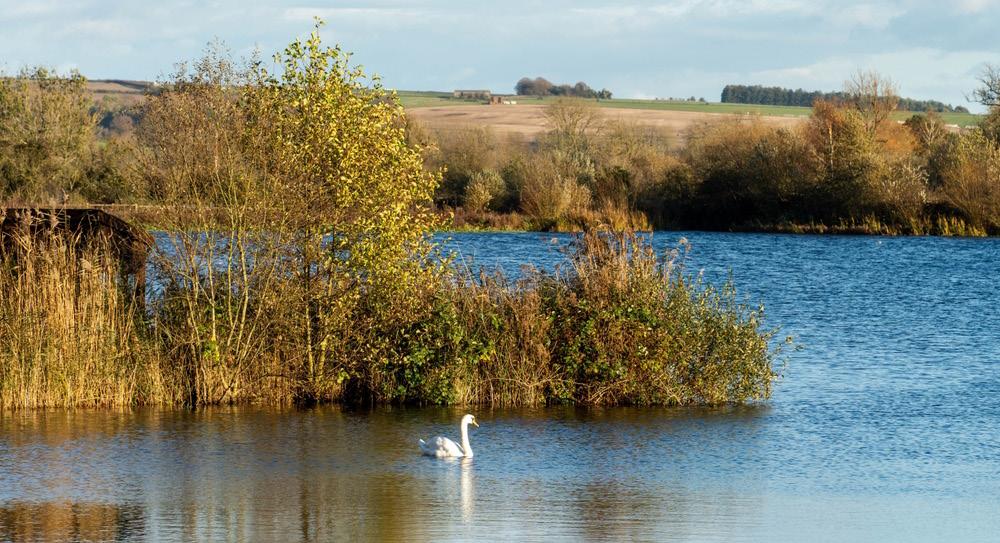
Wiltshire Wildlife Trust, will delve into the critical work being done in river conservation, while Peter Thompson, a seasoned agronomist formerly associated with the Game & Conservancy Trust, will discuss wildlife and agronomy’s interconnectedness. This event is not just an opportunity to learn but also a chance to connect with fellow members of the CPRE community and like-minded individuals who share a commitment to preserving the beauty and biodiversity of our countryside. Whether you’re a long-standing member
The view at Langford Lakes
or a newcomer interested in environmental issues, you’re encouraged to come along – and bring a friend too!
Tickets, which include refreshments, are £12 per adult. Admission opens at 1.45pm, allowing attendees ample time to settle in before the festivities begin.
Don’t miss the chance to celebrate Earth Day in one of Wiltshire’s most picturesque settings.
• For more information about CPRE Wiltshire, visit cprewiltshire.org.uk
The Sturminster Newton Literary Festival, now in its fifth year, is presenting an ambitious lineup from 8th to 16th June, including a special D Day event. Highlights include Kevin J Davies discussing Douglas Adams’ early work, Bridport Prize winner Fiona Williams on her novel The House of Broken Bricks, and Colonel Guy Deacon sharing his epic solo adventure driving from London to Cape Town while battling Parkinson’s Disease.
A unique exhibition at The Exchange, enriched with local D Day testimonies, will be opened on 9th June by Taylor
Downing and James Porter, focusing on D Day deceptions and the Dorsetshire Regiment. The festival also celebrates Far From the Madding Crowd’s 150th anniversary with a special film screening and actor meetand-greet, alongside literaturethemed walks in Bere Marsh, Marnhull, and Bagber.
A Crime Writing Day on 15th June promises intrigue with a workshop, competition, and talks from authors like Mark Bridgeman, Jane Labous, and Paula Harmon.
Diverse talks range from Celia Brayfield on Anna Sewell’s animal

welfare contributions to Jim Carter’s naval insights, Emily Wilson on Inanna and Gilgamesh, and Robin Walter’s nature poetry. Joanne Burn will discuss The Bone Hunters, set in Lyme Regis, via Zoom.
Festival chairman Pauline Batstone said: ‘Each year the Sturminster Newton Literary Festival gets better and better and we look forward to greeting even more visitors to our fifth Festival. | sturlitfest.com


7pm, 18th April








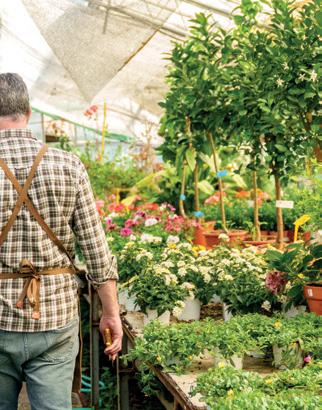






Rural Dorset gains from NHS dentistry reforms, more support for local farmers and record social care funding for rural Dorset
A few months ago, the Government announced its plans to recover and reform NHS dentistry, and I am glad to see that rural and coastal communities, such as West Dorset, will receive specific benefits this year. I know just how difficult this situation has been – and continues to be – for many constituents. The reforms will see the introduction of new mobile dental provision to bring dental care to the most remote and underserved communities where there are no NHS dental practices operating. It also includes the introduction of incentives to retain and encourage dentists in areas like West Dorset, starting with the first cohort of dentists later this year. And we will also see an uplift to the minimum payment for units of dental activity (UDAs) rising to £28 per UDA this year. While I welcome the fact that these measures will improve accessibility, I still want to see West Dorset recognised as a priority area for further reforms. It’s vital that any reforms account for the geographical, demographic and economic challenges we face in rural West Dorset. I’ve raised these views directly with the Dentistry Minister. And I have also raised my concerns about access to NHS dentistry with the Integrated Care Board at Dorset NHS, which has the ultimate responsibility for commissioning NHS dental services in West Dorset.


production. At present, the UK is 60 per cent selfsufficient in all foods, but relies heavily on imports of fruit and vegetables. We should be harnessing highly fertile land to take our self-sufficiency levels way above that 60 per cent and to support the farmers who produce much of what we consume in this country. Food security is as important as any other matter. I shall closely monitor the impact of climate change and global insecurity on supply chains. My comments follow the government’s announcement of £2.4 billion annual investment in farming and a legal requirement to publish a Food Security Index every year, with a commitment to ensure that baseline food production of 60 per cent of food is preserved in the UK.
In the past few months, a growing number of parents have got in touch with me to share their experiences of how exposed and vulnerable their children have been when it comes to discussions around gender identity with third parties. Dorset is in the top 10 per cent of NHS areas for referrals of our children to a Gender Identity Clinic in the UK. This became very apparent a few weeks ago, after NHS England announced it was taking the decision to ban the prescription of puberty blockers as there was not enough evidence that they were safe or effective.
Our highly fertile land should take our self-sufficiency levels way above 60 per cent
Last month I called for an increase in food selfsufficiency levels in the UK and for Grade 1 and Grade 2 agricultural land to remain in food
Also last month, I was pleased to help secure record funding of £408,022 for Adult Social Care reforms in Dorset. The funding, announced last week by the Department for Health and Social Care, will go towards helping unpaid carers, supporting adults with learning disabilities or mental health problems and boosting engagement with the elderly in society. I’ve previously raised with the Minister the unique situation we face in West Dorset regarding adult social care, and the cost it places on local government and the Dorset taxpayer. Funding on this level will help to identify areas for localised innovation and will facilitate learning for onward development and investment. I’m incredibly grateful to all those working in adult social care, and I’ll continue to push for greater recognition within Government.
As always, if I can help, you can contact me by email: hello@chrisloder.co.uk and you can keep up to date with my latest news by visiting chrisloder.co.uk or write to me at House of Commons, London, SW1A 0AA.
Although I’d only ever voted Conservative before, I remember the sense of anticipation that things were going to change for the better when Tony Blair swept into power in 1997. Sadly it didn’t last. Blair’s New Labour introduced important social reforms, like the minimum wage, but in the end it became too conservative, supporting market economics where the markets control decisions on the allocation of capital to provide goods and services. While there is absolutely a need for businesses to help inform debate on government policies, they must not be allowed undue influence over policy decisions. They will naturally focus on obtaining the maximum benefit for themselves, whereas the government must consider the bigger picture.
As Labour moves increasingly to the right, guided by organisations like the Tony Blair Institute for Global Change, it looks to be heading for electoral victory. Vested financial interests are circling, eager to maintain their influence on government policymaking through lobbying and media campaigns. The fossil fuel industry has influenced government policy so well that Shell and BP are reducing their already halfhearted support for transitioning to renewable energy, and instead expanding their oil and gas operations. All with a total disregard for the planetary consequences, not least the climate change already affecting millions around the world. Meanwhile the government is aiding and abetting the industry through taxpayer-funded subsidies,

a wholly inadequate windfall tax, and stoking a deliberately divisive culture war against a bogus ‘war on motorists’.
The Tory party’s largest donor, Frank Hestor, hit the headlines recently with his appalling remarks about a Labour MP. Less well publicised was the fact that his company makes an excessive 50 per cent profit from supplying software systems to the NHS. Nice work if you know how to get it, but not a good deal for our cash-strapped NHS, is it? To any previously Labour or Conservative supporters who are disillusioned by their parties, can I offer the suggestion that your next vote is for the Green Party? You will then send a clear message, and help to raise awareness of the true level of public support for the green policies we so urgently need.
Ken Huggins North Dorset Green Party
The water companies just can’t keep out of the news. The figures for sewage discharges for 2023 were issued last week by the Environment Agency. It’s been a wet year, but has it been doubly as damp as 2022? All sewage overflows have at last been fitted with monitors, and it’s clear that twice as much raw sewage and
Bills will rise dramatically over the next few years by up to 50%
rainwater has gone into our rivers and the sea this year as in 2022. Discharges into the Stour and its tributaries are significantly up. Wessex Water is spending £3m per month on upgrades, with work continuing at the sewage works in Gillingham and further work planned at Bourton. These investments are welcome, but we are paying for it. Wessex Water has raised bills by 12%
this year. If its plans to triple the spend on sewage treatment improvements are agreed this year by the industry regulator OFWAT, we will see bills rise dramatically over the next few years – by up to 50%.
The whole industry has been too slow to respond. The Economist newspaper noted that in 2021 the Storm Overflow Discharges Taskforce – a group of conservationists, consumers, the agriculture department, the Environment Agency and water
industry bodies – concluded that investment to prevent sewage discharges was not worth the tens of billions of pounds it would cost. Meanwhile, Surfers against Sewage, countless local campaigns and political parties like the Liberal Democrats continue to push hard to change this stinking state of affairs. But where is the haste to fix it? The current government will still allow sewage spills to continue beyond 2040.
Constructive plan needed OFWAT has demonstrated its toothlessness. The Environment Agency lacks the resources to monitor effectively, police the spills and penalise the spillers. Here in Dorset, we understand that Wessex Water performs better than most other water
companies. Yes, governments before privatisation spent hopelessly little, but that does not mean the present system is right either. The water companies have run up excessive debt to pay holding company dividends and many are now in deep financial trouble. Little will happen as long as the industry structure and the way it is regulated remains unchanged. We need positive, constructive measures to be put in place to solve the whole challenge of river and sea pollution. This must involve the water companies, agriculture, transport, house building

and construction interests, all working together. The next five-year asset management plan period (AMP8) for water companies will start in April 2025. A new government needs to review and change how water utilities are run, to ensure a rapid end to sewage dumping and better value for bill-payers. Liberal Democrats will be down and dirty, campaigning to staunch the sewage flows and their costs.
Gary Jackson North Dorset Liberal Democrats
It’s a known fact that 40% of Dorset’s population are on low wages. In the Dorset Council and BCP Council (next door) areas, more than 5,000 homes are second homes, holiday lets or just left empty.
There is a housing emergency in Dorset – caused by a failure of the councils’ and government’s housing policies over the last 14 years. Dorset has around 4,500 households on the housing register, and more than 300 families in costly temporary accommodation.
So called ‘affordable housing’ is nothing of the sort. Rents are tied to house prices, and demand for rental homes greatly outstrips supply. The Government definition of affordable housing is ‘80 per cent of the market rent’.

House prices are 10 to 12 times a typical salary for the area –meaning many Dorset residents can’t afford to buy their own home. Families and young people feel they have to move away from the communities they grew up in to find somewhere they can afford to live.
Housing inequality is changing the demographic of Dorset and damaging the viability of local services. At current rates we can expect well over half of the population to be over 65 within the next ten to 20 years.
Those Labour councillors elected this coming May will seek to ensure that Dorset Council:
• recognises that good housing is a universal right and produces a new housing strategy within that context
• works with the incoming [Labour] Government to
enable Dorset Council to build more council homes through a different funding process
• significantly increases the proportion of new homes for social rent for local residents
• supports community-led and co-operative housing programmes
• works with the incoming [Labour] Government to strengthen restraints and restrictions on second homes and Airbnb
• acknowledges that the private rented sector currently provides much of the non-owner-occupied housing in Dorset and will work with good landlords towards raising and enforcing standards
• reviews the council’s homelessness policies and the housing advice service to ensure that they provide fair, humane and supportive practices for all.
Gerald Davies
North Dorset Labour Party





Employ My Ability offers vocational training for students with learning disabilities and special educational needs and disabilities. One of their students, Maddie Walters, spent her work experience with us, and now writes a regular column - Ed

Special People On Ice, or SPICE, is an inclusive skating club for people who have additional needs from the age of seven. Since 2002, SPICE’s goal has been helping the skaters participate in ice skating, to improve their skill and to gain confidence in their ability. SPICE runs in the Slough Ice Arena every Sunday from 11am to 12pm. They cover al levels, from learn-to-skate groups to an ice hockey team and two synchronised skating teams. In 2009, aged 12, I watched Ice Princess, a Disney movie – I promptly wanted to start ice skating, and joined SPICE.
A couple of years later, I was featured in a BBC Children in Need segment! I talked about how I joined SPICE and why I love skating. The presenters and film crew came to the ice rink to watch me skate – I even did a solo spin at the end of the segment!
I joined the SPICE synchronised skating team in 2018 and really enjoyed competing. SPICE Synchro was so popular it eventially split into two teams, SPICE Crystals and SPICE Sparkles – I am on SPICE Crystals.
We perform at competitions three times a year: Skate London, The Britannia Cup in Nottingham and the Steel City Trophy. In March I took part in the Steel City Trophy competition in Sheffield – three days of performing and watching and cheering on the other team, it was a great experience. SPICE Crystals chose a Glee mash-up – just like SPICE, on the show they are one big family – and we did Makaton sign language at the end of the performance. We finished in second place and were awarded a silver medal. SPICE Sparkles came in first and got the gold!
• To find out more information about SPICE and what we do, please visit spiceskating.org
• In the video above, Maddie is on the left of the pair holding hands as they enter the ice


Whatever your next step is, we’re here to support you.
Whether you’re looking to buy or sell your property, create a Will, or appoint an attorney, we’re on hand to provide the clarity you need.
By working with us, you can be


This month’s news from the unofficial capital of the Blackmore Vale...
Pauline Batstone shares her monthly round up of what’s happening among the town’s collection of community enterprises and events
Spring has arrived, and thanks to our wonderful volunteers, our ladies’ pre-loved Boutique is once again open six days a week, and British Summer Time means longer opening hours – from 10am to 5pm, stocked with new items perfect for the season.
Our Furniture Store is now mostly staffed during operating hours – if the door is closed, feel free to pop along to the Emporium for assistance. And don’t forget the free school uniforms hub upstairs – there to help any parent, with good secondhand unforms vauilable for all the local schools.
1855, our boutique shopping experience, is now close to reaching 100 traders, offering a diverse range of intriguing items and attracting visitors to the town, especially during holiday weekends.
SturAction is ready with a warm welcome for any new members to the volunteer family which covers all our community shops. A Volunteer Day will take place at Stour Connect, Bath Road,
on Saturday 13th April from 11am to 3pm. The annual event invites local voluntary groups to showcase their activities and provides the community with an opportunity to explore available volunteering options, regardless of the time they can spare.
Car and bike enthusiasts will gather in town as usual on the first Saturday of the month. It’s free, no need to register if you’d like to bring a vehicle, just turn up. Your car or bike must be roadworthy, taxed (where required) and insured. The meet will be at the Station Road car park if the weather dictates, otherwise on the Recreation Ground. On these days, parking is free in all our car parks, courtesy of SturAction.
We’re excited to announce the return of the Car Boot Sale – it will be on the Recreation Ground on the first Sunday morning of each month until 1st September, with all profits going to support local charities.


1855 now has more than 100 traders offfering a wildly diverse choice for every budget
Though still recovering from the Easter Weekend festivities, we’re already gearing up for Sturminster’s Big Weekend, 31st May to 2nd June. The Exchange will host a Beer & Cider (and Music) Festival over the weekend, alongside a Garden Fair and Market on the Saturday, Cars and Bikes in the Recreation Ground, and the Big Lunch on the Sunday, thanks to Rotary. Keep your eyes peeled: plans for the event are continuously evolving. On 6th June, the town will commemorate D-Day and the sacrifices made for our freedom with a beacon lighting ceremony in The Railway Gardens at 9pm. Throughout the week, The Exchange will host an exhibition featuring local stories of D-Day.
The Sturminster Literary Festival has curated a series of events for the second week of June, including its own D-Day event on 9th June, showcasing stories of our local soldiers and the deceptive tactics used against the enemy regarding invasion plans. For the full event programme, visit sturlitfest.com or pick up a brochure available around town.
This summary only scratches the surface of what’s happening in Stur and the surrounding area – for comprehensive information, refer to What’s Happening in Stur for April and May, distributed around town by David Shepherd and his team, sponsored by The Town Council.




Angel Holistic Care are a small,compassionate bespoke live-in care agency nestled in Shaftesbury, delivering dedicated, personalised one-to-one round-the-clock care and support to individuals within their own home.
Angela, founder and registered manager, built up Angel Holistic Care in 2019, after working within different branches of adult care provision for over 20 years. Having worked within the NHS as a district nurse, Angela saw the true value of supporting individuals within their home where they can retain their independence and daily routines, while being surrounded by cherished memories and personal treasures.
Angela’s dedication, values and committed beliefs have been deeply embedded within Angel Holistic Care, and she provides her clients with a truly personalised and tailored care experience. They stay within their own familiar walls with the comforts of home, and build long-lasting relationships with their specifically-chosen caregivers as well as the management team of Angel Holistic Care. Angela herself, a seasoned and compassionate nurse, ensures that she is at the forefront of each and every individual’s unique care delivery.
‘We make sure that clients have autonomy over daily routines and decisions,’ explains Angela. ‘It’s a simple thing, but preserves their dignity and sense of control. We create individual care plans, which put the needs and comforts of our clients first. That way we ensure a bespoke care experience that exceeds expectations.’

The Angel Holistic team in Shaftesbury: (l-r) Darcie, Hazel (the one with the ears) , founder Angela and Olivia
Angel Holistic Care’s caregivers can assist with all aspects of care, from companionship, to housekeeping, food preparation, personal care support and so on. In addition, their caregivers are highly trained to provide all aspects of specialised care, including Dementia, Parkinson’s, Palliative, and other long term health conditions.
Angel Holistic Care is regulated by Care Quality Commission (CQC) and is a fully-managed live-in care service, meaning that family and friends can enjoy peace of mind that every aspect of their loved ones needs are being taken care.
It was recognised by CQC as ‘Outstanding’ in Caring in October 2021, with an up-to-date review in February 2024 using CQC’s new framework.
In addition, Angel Holistic Care has been rated an incredible 9.9/10 on Homecare.co.uk from those who use or have used their service.
The team’s holistic approach has also been reflected in their awards and recognition, two esteemed awards in 2024: ‘Best Person-Centred Live-in & Dementia Care Specialists 2024 – Dorset’ (Global Health & Pharma), and ‘Home Healthcare Provider of the Year’ for the South West (England Prestige Awards).
The recognitions are a testament to Angel Holistic Care’s unwavering dedication to exceptional live-in care across the South West.
The company’s services cover Dorset, Wiltshire, Somerset, Hampshire and Devon – but Angela and her management team ensure they are always actively involved in coordinating and overseeing the well-being of those they serve, day in and day out. It’s a conscious business choice to remain local and small.
• Are you seeking live-in care for yourself or a loved one? Do contact the team today on 01747 359017 for more information.
• angelhc.co.uk


Want to reply? Read something you feel needs commenting on? Our postbag is open! Please send emails to letters@BVmagazine.co.uk.
When writing, please include your full name and address; we will not print this, but do require it.
In February’s BV a kind letter described The Exchange as a ‘brilliant community resource’, and it is. The 300-seat theatre hosts a rolling programme of shows, cinema and speakers, and also parties and dinners. With the help of staff and volunteers (sometimes working past midnight), The Exchange helped to deliver 72,000 vaccinations over the last three years.
The income from our shows helps to maintain a community centre with around 30 events each week, including an indoor market and social activities in and around our fully accessible café. You can boost your health, wellbeing, education and culture. You can act, sing, dance and play music. You can improve the quality of your life at The Exchange.
Our finances are recovering from the shock of energy price increases, but we must rebuild our depleted reserves to keep delivering to our community and the whole of North Dorset – and that is what we are determined to do.
Please look out for and support the many fundraising events taking place this year. Look at our website, pick up a brochure, come and see us. A ‘Friends of The Exchange’ scheme is due to launch in May – and of course donations are welcome at any time.
Robert Cowley, Sturminster NewtonI am a palliative care nurse. I know I am good at what I do, by the many positive feedback and comments I receive from patients, their families and fellow colleagues. While continuing to work, I been forced to register my family as becoming homeless. We have rented our current home for 12 years, and in that time, the rental market has changed significantly. Rent has increased and the amount of rented properties available has decreased. For every one rental there’s five to 10 people applying; owners may take their pick.
Due to our current situation, we will move up the housing register ever so slightly – although our family is in need, there our others more in need then us. For each social house in Dorset, there can be over 100 people bidding on it. If you don’t manager to secure private rent/social
housing before you have to leave your current home, then you are placed in a B&B.
The housing crisis is real, and many more hardworking families will be put in this position unless the Government takes it seriously.
I have written to Simon Hoare on other matters in the past but never received a reply.
Can he honestly say he is doing a good job for his constituents? Dorset is in a housing crisis and he should be making this point over and over in Government until changes are made.
Name and address witheld
I would like to ask your readers if they have memories of living in Shroton, Farrington, Ranston or Farrington during WW2 – any written memoirs of relatives that lived here, and are no longer with us – that they would be willing to share.
I am putting on a history display in Shroton village hall on 6 June to commemorate D Day. Please email me trevandjude@btinternet.com with anything you may share.
Judith Hewitt, Shroton
boring business
Great articles this month on the three local businesses – and I never read the business news section! Not because I have any intention of being an accountant or of selling wedding dresses, but I was astounded by how inspiring they were! Like so many of us, I have often toyed with the idea of ‘doing it for myself’ and your interviews were a fascinating insight into the brains of the people who do just that. It was striking how similar their attitudes were – and how much I have to learn before I make the leap!
Sally East, Blandford
The Environment Agency’s report on sewage overflow into the nation’s rivers is alarming. If you haven’t checked your local river yet, I urge you to see the full interactive map here We must demand immediate action and stricter regulations to protect our rivers from further pollution. Dorset’s natural heritage deserves to be preserved for future generations.
Gerry Saunders, Sherborne

Crossword Simply click to complete on your tablet, computer or phone - or there’s a download ‘PDF’ option if you prefer pen and paper.

Jigsaw A rare burst of March sunshine lit these wood anemones – just click to complete!



Almost a quarter of a century on from the release of their debut album, Asleep In The Back, Manchester alternative rock quintet Elbow could be described as elder statesmen, with lead singer Guy Garvey quietly going about achieving national treasure status.
Recent releases, however, have suffered from stubbornly mid-to-low tempo drudgery. While their song writing has occasionally still hit the mark (I’m thinking of Empires and Six Words), it feels like a very long time indeed since the band produced the kind of universally celebratory music which brought them to mass acclaim on 2008’s breakthrough album The Seldom Seen Kid, and the follow-up, 2011’s Build A Rocket Boys! But from the opening bars of the first track on Audio Vertigo, their 10th LP, it’s clear that the slump is over.
The album announces itself with an infectious groove before guitar stabs perforate a melody reminiscent of Alex Turner’s more recent work. On Lovers’ Leap, the melancholy lyric (“Take me up to lovers’ leap, throw my body off the side”) is instead imbued with menace, horns filling the space where strings may previously have been. But the centrepiece of the album, Balu, is where the band’s new-found energy is best showcased (video below)
As Guy Garvey sings of trysts with rust belt girls and hollowing skulls for his wine, multiple synth lines shimmer and intertwine before releasing into a horn part which echoes the two-note motif of Radiohead’s The National Anthem. Many Elbow touchstones remain, including


the crystal-clear production, impeccable arrangements and lyrics which manage to be both beautifully poetic and keenly descriptive. But this is a band with more to say, and who are clearly ready to flex their musical muscles once more. While they may conceivably have faded into obscurity with this release, they have instead cemented their place as the best British rock band of the last 25 years.

• Matthew Ambrose presents Under The Radar on Tuesday evening at 7pm on Abbey104. Broadcasting on 104.7FM and online at abbey104.com.
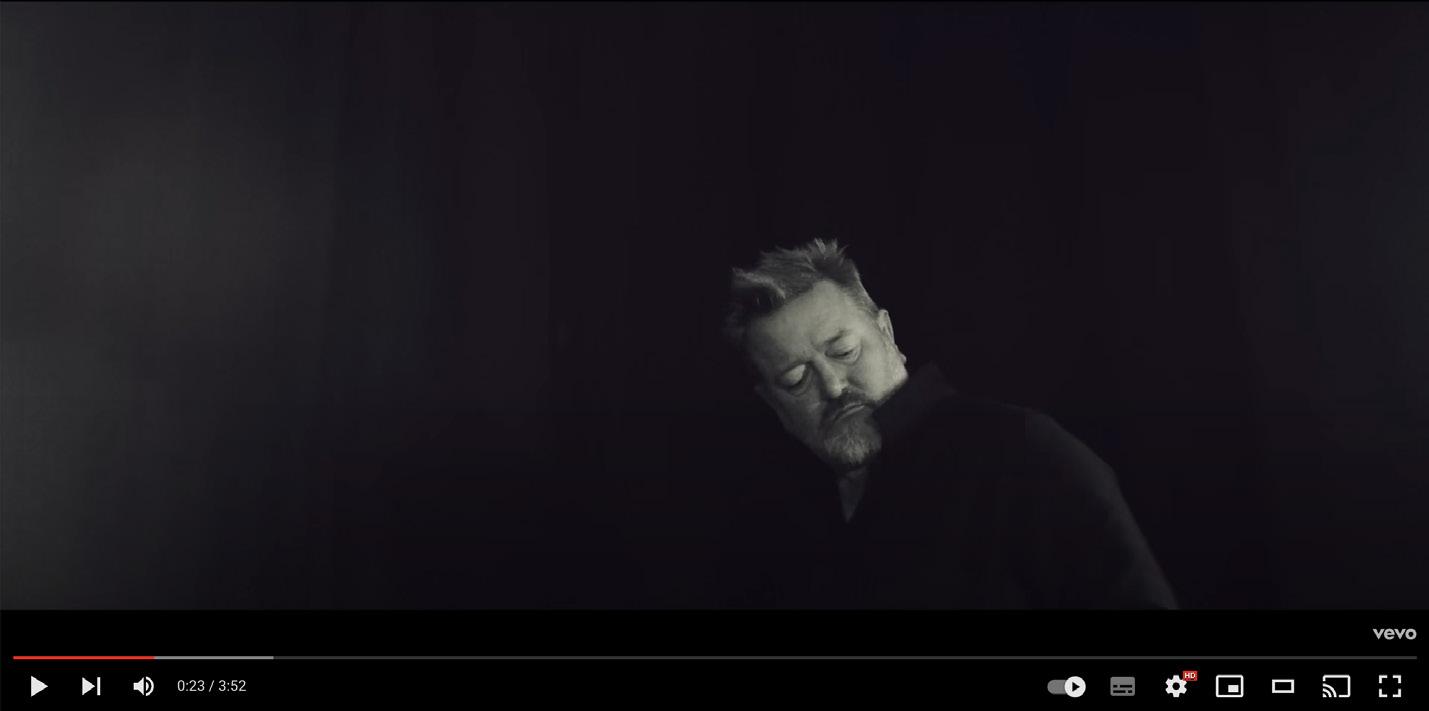
Public Speaking is an important skill and staff at Gillingham school are very keen to give students the skills – and opportunity – to express their opinions and ideas. On Friday 15th March, eight members of the school public speaking team were invited to the House of Lords Debate, hosted by the charity Debating Matters. Schools were picked from across the country and Gillingham were one of only four schools invited to take part.
The debates were on current and contentious issues:
• Does ‘cancel culture’ threaten freedom of speech?
• Do billionaires’ ownership of media organisations pose a threat to democracy?
• Should museums repatriate cultural artefacts?
One of the sixth formers said that they enjoyed the ‘emphasis on interrogation by the judges and the interesting topics.’
The speakers from Gillingham

– Elijah Wood and Daniel Matterface – made a brave argument in the semi-final on cancel culture, and were praised for their quick thinking, bold lines of argument and nuanced answers to the judges’ questions. However they didn’t quite do enough to proceed to the next round. Elijah said that ‘the method of debate felt civil and information driven, like a disagreement being resolved.’ It was a wonderful experience for everyone to watch the
teams debate and then to get involved in the floor debates, asking questions to the teams. Lucy Wrench was singled out as worthy of a Honourable Mention, as the judges enjoyed her contributions and questions. Besides the debating, the students made the most of their day out, and were given a fantastic tour of the House of Lords. Lucy described it as ‘interesting, engaging, informative and inspiring.’ No teacher could ask for more!
The second TEDx Shaftesbury Youth event on 9th March welcomed a new wave of young thinkers eager to present innovative ideas for our future. A diverse group of under-18 speakers from schools across Dorset and beyond – including one from Taiwan – shared their insights on topics like diversity in education, sign language importance, the creativity crisis, and entomology appreciation. Hosted by entrepreneur Fatimah Hussain, a twotime TEDx speaker and recipient of the Gold Presidential Service Award from President Biden, the event resonated with her own journey. Event organiser Alex More said, ‘Ideas are the currency of the present and will shape the future. Our TEDx event is a day for curiosity, inspiration, and action.’
The sold-out event captivated audiences with compelling talks, such as the need for Northern Ireland’s history in GCSE courses and cryptocurrency education. Tom Massey from The Gryphon School advocated for sign language in schools, noting, ‘TEDx

Josie Rossiter talks about the Creativity Crisis in schools
make a big change.’
In addition, TEDx Shaftesbury introduced Lightning Talks, a format designed to engage young audiences with concise, impactful speeches. With speakers as young as 10, topics ranged from equality in girls’ football to tackling space junk. The event, streamed live globally, will be accessible on the TEDx website for future viewing.
A year ago, Matt Billingsley’s daughter Edith was diagnosed with Rett Syndrome, a rare genetic condition: ‘To say that this was devastating would of course be a massive understatement,’ Matt says.
‘Her diagnosis completely changed our world. She will have a remarkably different future to the one we had anticipated.’
Babies with Retts are apparantly healthy at birth, but begin to deteriorate before their second birthday, losing their speech, their mobility and the use of their hands. There is no cure.
Looking for ways in which they might help, Matt, a solicitor in Sturminster Newton, and his wife Louise have been raising funds for Reverse Rett UK.
‘The charity has been – and very much continues to be – an invaluable support for us during this turbulent journey. There is a lot of hope in the Rett community that a cure is on the horizon. Retts Syndrome has already been reversed in the lab, gene therapy trials are ongoing in America, and amazingly they will shortly be starting in the UK!
‘But funding is vital.
‘So with my friend Ash Lock I am embarking on a 100km walk along the spectacular Dorset coast as part of the Jurassic Ultra 2024 event, over the weekend of 18th and 19th May.
‘Being completely honest, neither of us are the most physically imposing of individuals, but we wanted to give everything we have physically and mentally to achieve this for Edith.

With only 48 hours to complete the walk, we will certainly need some motivation to get us around!
‘If any BV readers are able to help, we would love to use our efforts to raise some money for Reverse Rett – who are working tirelessly to support families just like us, and are fighting for our daughter’s future. Donating through JustGiving is simple, fast and totally secure. Your details are safe with JustGiving - they’ll never sell them on or send unwanted emails. Once you donate, they’ll send your money directly to the charity.
• Donate here: bvmag.co.uk/MattBillingsleyWalk
A reliable fixture at the Gillingham & Shaftesbury
Show is the Church tent – a refreshment marquee run by the Church of England in Gillingham, Shaftesbury and Stour Vale. They provide a welcome opportunity to sit down and enjoy a coffee or tea and homemade cake. All profits are given to selected rural community charities.
One recipient in 2023 was The Student Fund, founded by the G&S Show itself in 2020. The fund helps to remove some of the financial barriers faced by students and trainees embarking on new careers in land-based industries such as agriculture,
horticulture and forestry. Their needs are varied, from safety boots and laptops to travel expenses. Nothing is off the table – one student, with exemplary practical and technical skills but who struggled with dyslexia, was helped with private tuition to achieve the higher level courses. The image is of Matthew Price, chairman of the Student Support Fund, accepting the cheque with a helpful band of Ouessant Sheep. The Church Tent will be at the G&S Show ithis summer and welcomes all to visit and ‘rest a while’. Please let us know if you have a favourite rural charity that we may be able to help.
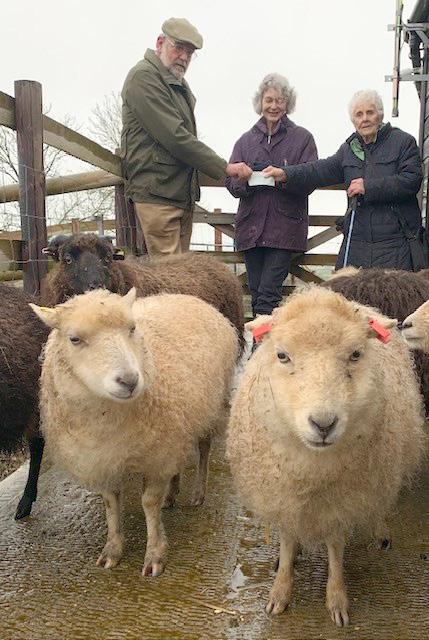
Around 12 months ago my little girl Edith was diagnosed with a rare genetic condition called Rett syndrome. To say that this was devastating would of course be a massive understatement. Her diagnosis completely changed our world and means that she will now have a remarkably different future than what we had anticipated.
- Matt Billingsley, Dad to Edith

Rett syndrome
Rett syndrome is caused by the spontaneous mutation of a gene on the X chromosome. Babies are born apparantly healthy but begin to deteriorate before their second birthday, losing their speech, mobility and use of their hands. There is no cure but there is hope. Rett syndrome has already been reversed in the lab.
Sponsor my Couch to 100km - Jurassic Coast 2024 challenge using the QR code and help raise vitals funds for Rett research.

Facebook, Twitter and instagram under ‘Reverse Rett’

A local expert from Citizen’s Advice provides timely tips on consumer issues. In the postbag this month: How do I read my payslip?


Q: ‘I’ve just got my first payslip but I don’t understand what all the different sections refer to. How do I know if it’s correct?’
A:Your payslip shows your pay, deductions and tax information. All employers are required to give their employees a payslip and it’s a good idea to keep it for six years.
You’ll usually find your employer’s details in the top left corner of the payslip. Your details should be opposite this, in the middle or top right corner. This is also where you might find your payroll or employee number.
Next, you’ll see lots of different numbers and codes. The payment date is when your pay will normally arrive in your bank account – it can be weekly or monthly and fall on any day of the month. Your National Insurance (NI) number is unique to you, and you must have a NI number to work in the UK. It’s used to make sure all your NI contributions are recorded so you can get any contributory state benefits you’re entitled to, including state pension later in life. Your payslip might show a tax period: the tax year starts on 1st April and ends on 31st March. The number here corresponds to the period in which you’re being taxed – so if you’re paid monthly, ‘01’ will represent the tax period in April, while ‘12’ would mean March.
Next is your tax code. This is decided by HM Revenue and Customs and is used by your employer or pension provider to work out how much Income Tax to take from your pay. Income tax is the tax you pay on your earnings to fund public services: the amount you have to pay will vary depending on your earnings. Your tax code is made up of several numbers and a letter. The numbers refer to how much tax-free income you will get. You can find out what the letters mean on the government website. Make sure you’re not on an emergency tax code otherwise you’ll pay too much tax.
Now, pay and deductions.
‘Gross pay’ means how much you’ve earned before anything is deducted. Deductions are amounts taken from your gross pay: common ones include income tax and national insurance, plus pension or student loan payments. Most payslips will add up all the deductions from your pay into a single amount to make it easier for you to see how much is being deducted each month. Your ‘net pay’ is the amount of money you will receive after all the deductions have been worked out.
Lastly, taxable pay is the amount of your salary, to date in the current tax year, that has been subjected to tax. This will usually appear next to your net pay figure.

A long-time supporter (and judge) of Dorset’s village shops, North Dorset CPRE chairman Rupert Hardy visits Motcombe’s thriving community store
COVID was kind to village shops, which had been under pressure for decades from the relentless onslaught of supermarkets. Government advice to stay home, as well as the fear of infection, drove shoppers to avoid supermarkets. However, much has changed in the last few years. Shoppers are facing a vicious cost of living crisis. Price wars have been intensifying, and we all know which supermarkets are winning: the big discounters like Aldi and Lidl.
There is still a clear long-term trend towards online shopping that benefits supermarkets but not village shops. Other factors have been the decline in physical newspaper and tobacco sales – historically, both major drivers of customers for small shops. But what can they do? The bigger ones are in a much stronger position – they can offer a broader range of stock, and can also diversify (if space allows) by opening cafes, which bring extra footfall and generate higher margins. They can sell more local, sustainable produce, which we applaud. We strongly support high quality local food and drink producers, of which Dorset has many.
Small shops can still benefit from the postcoved legacy of more people working from home one or two days a week. More shops are joining symbol groups such as SPAR with their greater buying power and marketing support. Overall, there are some shops that seem to be doing all the right things.
How does a village shop survive if it’s only five minutes drive from the
supermarket?

they still have to be professionally run, and know how to move with the times.
Motcombe’s major innovation in recent years was to cover over what had been a less-thanpretty exterior space with a light and airy gazebo, transforming it into a busy cafe with the tables and chairs for which they have no room inside. The cafe certainly helps footfall in the store. Coffee sales multiplied three-fold as soon as it was opened during COVID. The shop sells more local food now. They have introduced loyalty cards, which seem to work well, and, thanks to the skills of one committee member, have enhanced their presence on social media.
How does a village shop survive if it is only five minutes drive from the supermarkets of Shaftesbury? The answer is it has to try much harder to make itself stand out.
It helps that there is a strong village community, and that no less than 35 of the residents are happy to volunteer to support the shop. It also helps to have an experienced manager. Kay Francis, who has been running the shop for 14 years – ever since the community took it over – clearly knows everyone in the village, and also what they want. Community shops may be under less financial pressure than privately-run ones, but to survive
Energy costs have been a serious issue for many, but Motcombe avoided the worst, thanks to prescient long-term contracts. There is a comprehensive product range with gifts and cards as well as food and drink – fresh pastries are a popular line. The shop offers a dry-cleaning service, as well as a small post office. Its services and friendly staff are well-appreciated, and it is seen to help the community in different ways, such as their weekly free delivery service to old people in sheltered accommodation.
I awarded Motcombe second prize in the Best Dorset Village Shop competition in 2015, when I was a judge, and would happily commend them for another prize now. Do visit them!
• Congratulations to Child Okeford Village Shop
– highlighted last year in the BV Magazine. We were pleased to hear that this wonderful shop is a finalist in the Countryside Alliance Best Village Retailer of the Year, South West. Results will be announced in April.
Rob Nolan sees the breathtaking Northern Lights in Finland as his 40th birthday surprise became an unforgettable aurora adventure
This month I had planned to showcase the Comet 12P/Pons-Brooks, which I did manage to capture earlier in March – but something else really special happened this month. I turned 40, and my wonderful wife whisked me away for a surprise few days in Finland and the Arctic Circle. Along with the snowmobile rides and husky sledding, I was, of course, aurora hunting long into the nights. It was looking as though we were going to return home without seeing this amazing phenomenon, but on the final night of the trip, we got the Aurora Alert on our phones. It was visible above our resort! That night I was able to tick off a particularly special bucket list item, witnessing the amazing Northern Lights with my own eyes. We were treated to a great show for a good few hours! Of course, I took my new mirrorless camera with me and spent the next few hours capturing various images of the display. And I couldn’t not share this amazing experience with all of you. So this month’s image just has to be the astounding aurora borealis, shot from the Arctic Circle near Rovaniemi in Finland.
The aurora’s characteristic wavy patterns and ‘curtains’ of light are caused by the lines of force in the Earth’s magnetic field
The aurora can be seen near the poles of both the
northern and southern hemisphere. In the north the display is known as the aurora borealis; in the south it is called the aurora australis. These northern and southern ‘lights’ have fascinated, frightened and inspired humans for centuries. Solar storms on our star’s surface give out huge clouds of electrically-charged particles. These particles can travel millions of miles, and some may eventually collide with the Earth. What we see in the lights are atoms and molecules in our atmosphere colliding with the particles from the Sun. The aurora’s characteristic wavy patterns and ‘curtains’ of light are caused by the lines of force in the Earth’s magnetic field. We’re currently approaching the next Solar Maximum, which happens approximately every 11 years, so the chances of huge aurora storms become more likely, and we have a good chance of seeing these as far south as Dorset! So keep your eyes peeled and maybe download the Aurora Watch UK app to your phone. That way you’ll get alerts when it may be visible in the UK! This single image was taken with a Nikon Z8 Mirrorless camera and the Nikon Z 14-24 mm wide angle lens, at f2.8, 4 seconds and ISO 1600.
The night sky, April 2024 – Rob’s guide for your stargazing this month:
Comet 12P/Pons-Brooks reaches its brightest towards the end of this month, and we also become planet-less with Jupiter bowing out of view after eight months dominating our skies. There are a few bright stars that try to make up for the lack of planets. Regulus in Leo, Spica in Virgo and bright orange Arcturus in Boötes all fill the sky for us.
Not to mention the fact that if you’re traveling to North America for 8th April, you’ll have the chance to witness a total solar eclipse!
Comet 12P/Pons-Brooks passes closest to the sun on 21st April on its 71-year journey around our Solar System. Last seen in 1954, for me, it’s likely a once-in-a-lifetime event to see this particular comet, so I do hope I catch another glimpse of it this month.
On 10th April, catch a few last glimpses of Jupiter
in the early evening sky – the thin crescent Moon hangs nearby for a perfect viewing.
On 12th, get those binoculars out and witness the comet Pons-Brooks pass below Jupiter, with the giant planet Uranus and the Pleiades all lined up vertically for a picture-perfect image!
On 20th, look for Jupiter and Uranus in a celestial dance. Then it’s back to the comet on 21st as it reaches its maximum predicted brightness of magnitude +4.5, which should mean its visible with the naked eye!
Finally at the end of the month, on the night of 22nd April, the Lyrid Meteor Shower is unfortunately set to be drowned out by the Full Moon. But it is always worth a quick saunter outside to see if you can see any shooting stars: they will appear to emanate from the constellation Lyra. Until next time, clear skies!
 by Karen Geary, Nutritional
by Karen Geary, Nutritional

It’s time to remember the basics and use science to try to debunk some of the trendy diet myths, says expert Karen Geary
In the journey towards our very best health, we now know our gut plays a pivotal role, acting as the cornerstone of our well-being.
Something cropping up a lot – both with my own clients and with GPs I’ve spoken to – are questions caused by certain national brands. Ad campaigns with enormous marketing budgets are seriously muddying the health waters. They’re effectively a data-gathering tool, but they seem to be causing a lot of confusion and misunderstanding, some of it potentially harmful.
In the midst of these popular trends, it might be time to return to some basic information and understanding, based on science.
The gut, often dubbed the “second brain,” encompasses the entire digestive system from mouth to anus. It serves as the habitat for trillions of bacteria, fungi, and microbes. Collectively these are known as the microbiome. This intricate ecosystem manages vital functions ranging from digestion to the immune system and even mental health.
We
times more genes than the human genome itself, highlighting its functional complexity. Its composition continually adapts to various factors including diet, exercise, sleep patterns and stress levels. Research indicates that different diets distinctly shape the gut microbiome, which, in turn, influences not only the intestinal function but also the body’s immune response.
The fibre has it
Fibre is the linchpin of gut health – yet it remains overlooked in modern diets, particularly amid the prevalence of ultra-processed foods in western diets. The shortfall in fibre intake poses significant health risks, including increased susceptibility to cancer and digestive ailments.
need 30g of fibre a day – think seven heaped teacups of plants. It’s an amount that the majority of the population get nowhere near
Notably, people changing their diet often report improvements in both gut and immune system-related symptoms, emphasising the intricate connection between nutrition and health.
Remarkably, the gut microbiome contains 150
The human body ideally needs 30g of fibre a day – think seven heaped teacups of plants. It’s an amount that the majority of the population gets nowhere near.
Colorectal cancer is among the most common cancers worldwide and it is closely connected to dietary habits. Diets which are lacking in fibre and abundant in processed foods correlate with an increase in colorectal cancer risk.
Foods rich in fibre, like fruits, vegetables, whole grains and legumes, provide essential nutrients while promoting regular bowel movements and detoxification, brilliant for digestive wellness.
Natural probiotics and prebiotics
In tandem with fibre, integrating natural pro- and prebiotics into our diet nurtures a thriving gut microbiome. Probiotics – live microorganisms with health-enhancing properties – abound in foods like yogurt, kefir, kimchi, sauerkraut and miso. They foster diversity in the gut’s microbiome and bolster digestion and immunity.
Prebiotics – non-digestible fibres that fuel that probiotic growth – are abundant in apples, bananas, garlic, onions, leeks, asparagus and Jerusalem artichokes. These foods fortify and feed existing beneficial bacteria, nurturing a resilient microbiome and overall health.
Other things to think about
Beyond fibre and probiotics, several other factors influence gut health:
1. Hydration: adequate water intake (roughly two to three litres per day) facilitates proper digestion, nutrient absorption and bowel emptying, promoting good gut health.
2. Stress management: chronic stress disrupts the gut microbial balance. If you’re feeling the effects, try stress-reduction practices like mindfulness, meditation and exercise.
3. Antibiotics: these take out the good as well as the bad bacteria, and it can take time to rebuild the microbiome after a course (Karen’s article in the BV on ‘what to eat after taking antibiotics ’ is a permanent hit on the website)
Your gut health checklist
While everyone’s dietary needs vary, sticking to some basic principles will create a diverse and robust gut microbiome:
• Hydrate – two to three litres of water a day.
• Embrace plant-based diversity – aim for seven servings (a serving is roughly one heaped teacup) of fruits and vegetables a day, including prebiotic fibre sources. Frozen is fine and often costeffective. Freeze any leftover fruit and veg and add it to smoothies.
• Eat by plate – half of the contents on every plate should consist of plants.
• Choose colourful, varied foods for the widest range of goodness, remembering herbs and spices all add nutrients.
• Opt for wholefoods over processed alternatives.
• Experiment with probiotic foods to identify which ones you like – and try to have some each day. Build up your tolerance slowly!
• Enjoy legumes and whole grains – and again build up slowly as they can cause bloating in some cases.
• Gut-friendly good fats such as olive oil, avocado and butter are anti-inflammatory and gut supportive. Eat your nuts and seeds unroasted and unsweetened/unsalted. Tinned fish such as

mackerel and sardines are also fabulous sources of omega 3.
• Limit your intake of inflammatory substances like sugar, fried foods and alcohol.
• Don’t forget your protein – animal or vegetable. Protein is a key requirement in supporting immune health.
By prioritising fibre-rich foods, natural probiotics, and mindful habits, it isn’t difficult to build a resilient microbiome, safeguarding against gastrointestinal ailments and promoting vitality. Remember, your gut health is not just about digestion—it’s fundamental to your overall well-being and longevity.
Next month I’ll be running an ‘Ask Me Anything’ Q&A. Please email any questions to me at karen@amplifynutritionaltherapy.com or leave me a message on my Facebook page
Dorset Mind volunteer Annabel Goddard is encouraging us all to be hopeful, and to start making plans for when the weather really does improve
Unless you were lucky enough to spend your winter somewhere else in warm sunshine, it’s likely to have been a long, damp few months. The recent sparse bursts of sun have been a glimmer of what will hopefully be a wonderfully bright new season. While we wait for the weather to cheer up, here’s how we can make the most of the change in seasons.
Go beyond just scrubbing your bathroom – start refreshing your space. Having a clear out of your things can help you declutter mentally as well as physically. Even better, donate your cleared-out items to a charity shop near you: it’s a small deed that can do a lot of good for those who need it most. If you’ve been putting off repainting or cleaning something in your home, now is a great time to do it. It doesn’t have to be a major task – a new candle or a bunch of flowers will make you smile.
Spring cleaning doesn’t have to begin and end in the home, either. Something that can go unnoticed is how much our tech get cluttered with useless notes, spam emails and screenshots. Set aside some time to go through your phone – deleting apps, redundant documents and photos which you don’t need anymore. This can give a sense of catharsis if you’ve held onto photos and notes which don’t bring you happiness – it could help to let go of these memories. It might seem an insignificant thing, but taking the time

for some unsubscribing and deleting can help reduce the bombardment in your phone –start prioritising time unplugged from social media.
As the sun is (hopefully!) beginning to come out, use the time to start getting used to being outdoors again. Days are getting longer, and before we know it, summer will be here. If you’re struggling to wait until t-shirt weather returns, make yourself a ‘summer resolution’ –set yourself an activity you want to start doing in the warmer weather. It could be anything – painting outdoors, hiking, visiting new places ... whatever you wish you’d done last summer. Start making an action

plan now and you’ll be prepared for a new hobby by the time summer arrives.
If you’re like me, you’ve been praying for a bit of sunshine since November. It could benefit you to make a bit of time to spend outside, just to feel the sun on your face and remind yourself that longer days are coming. As the sun starts setting later in the day, try to incorporate an evening walk into your routine.
The warmer days will follow, but we must remember to be grateful for what we have now.
See Dorset Mind’s 5 Ways to Wellbeing for further support.




We haven’t had a long walk for a while - and this is one of our biggest! The circular route begins at Rawlsbury Camp hillfort, and then works around the local ridgelines, taking in the very best views via Cheselbourne and Milton Abbey
Set aside a whole day for this one, and take lunch with you. It’s a beautiful route, the paths are all clearly signed paths, but there’s a LOT of uphill – expect tired legs by the end!
Ancient forests, drovers tracks, the Dorsetshire Gap and minimal roads.
A couple of spots will be very muddy after bad weather! Images are from last autumn.
• CLICK HERE for more images and an interactive map (plus downloadable gpx file)
See all previously-published Dorset Walks on the website here. You can also find every route we’ve walked (including many which are unpublished in The BV) on OutdoorActive here (just zoom in/out on the map) – all include a downloadable gpx file.



This month Barry Cuff has chosen a couple of postcards of Thornford, near Sherborne:

Sent in 1911 to Mr Y Jackman of Smart’s Heath in Surrey, apparently extolling the health benefits of a Dorset holiday (except for the cows). Interesting that in 1911, steam engines were already seen as dated and amusing: ‘Dr Y. Just a card to let you see we go by steam down here. Nell looks just like an Old Booser with her red face, it’s doing her a lot of good but the cows frighten her. She ran through a field of corn yesterday away from them. From yours RL

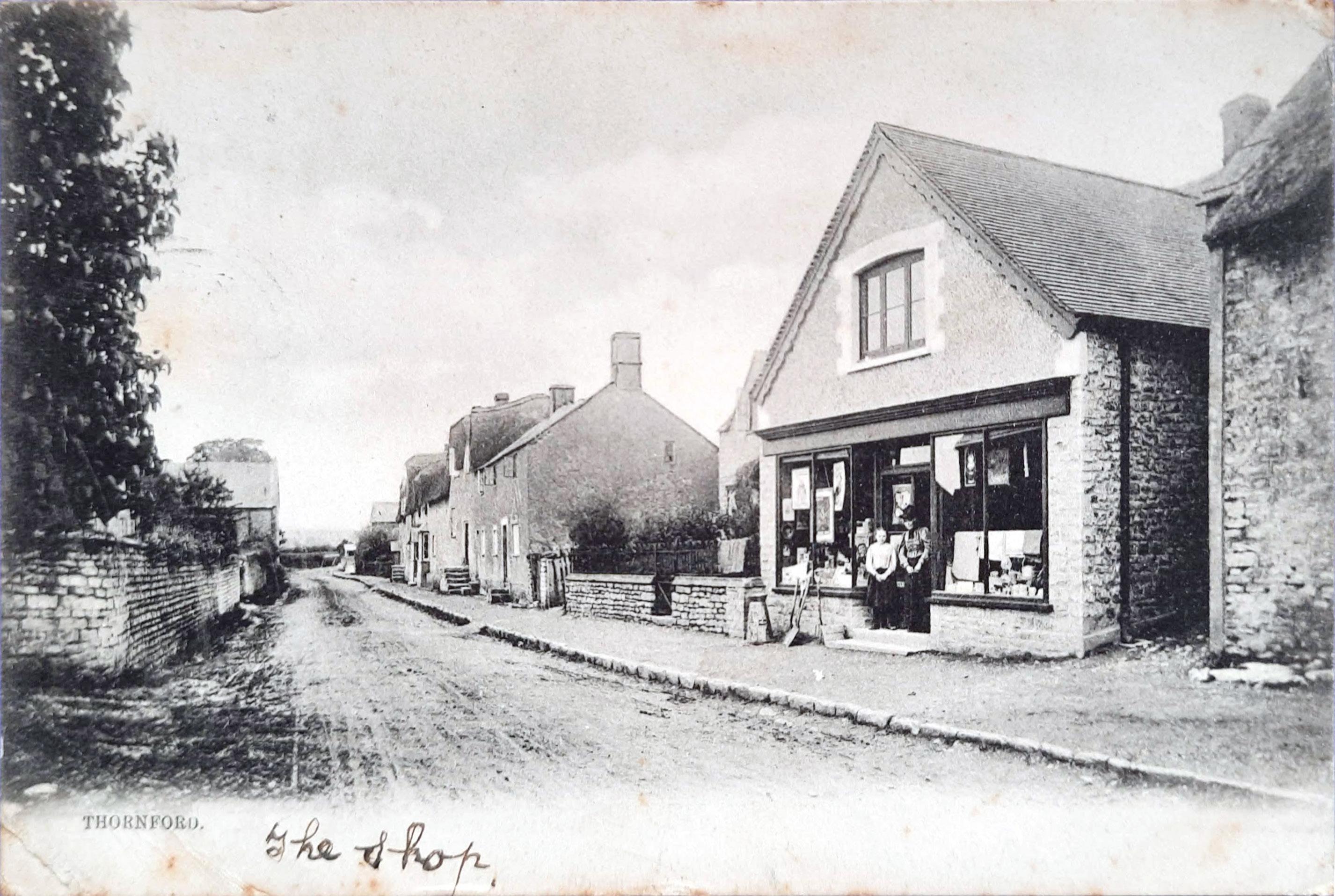
Sent to Mr A Davenport in Rickmansworth, Hertfordshire in 1905 (with handwritten explainer on the front!): ‘Dear Harry. We got your card and liked it very much. I am glad you went to see Amos he is not come home yet expect him Saturday. Mr Roseby said he saw you but he did not know you, you were so grown and altered. Reggie’s arm is a little better but I am not very well. So good-bye with love from your sister Maggie.

Step back in time with our ‘Then and Now’ feature, where vintage postcards meet modern-day reality. Explore the past and present on the same page, and see the evolution of familiar local places.




There’s a chilling story about the seemingly-vicious and vindictive Lord Staunton. In 1557, the catholic lord of the manor ended a long-running dispute with his protestant neighbours, the Hartgills, with a double murder. He arranged a public meeting by saying he was ready to pay them the sums of money and return their cattle, as ordered, and to end all disputes between them – but instead took the opportunity to seize the Hartgills, hold them captive and then have them killed (full story here). The brutal crime lead to his imprisonment in the Tower of London, before he was hanged in Salisbury market place. His widow, Anne, was left with a crumbling ‘castle’ in Staunton Caundle. She pleaded with Queen Mary I, stressing her late husband’s loyalty and that her only home was in a “ruynous” and “corrupt” state – she was given ten days to raise the money to the value of the estate. Fast forward, and there’s hardly anything left of the castle today. The oldest map of the village from the 1500s shows it next to St. Peter’s Church, but by 1600, it was gone. Its stones likely ended up in other buildings around the village.
Once upon a time – in a world where your first weekly shop didn’t financially cripple you for the rest of the month – chicken was sold as a loss leader in supermarkets. The shops would sell chicken cheaper than they could buy it as a way to entice customers into their shops to buy other items.
This is no longer the case. The cost of purchasing the meat in supermarkets rose by 15 per cent last year, to try and cover the increasing costs that are required to grow the birds on the farm (electricity, feed, gas and bedding being the main expenditures). Currently, UK farmers rear one billion broiler birds for consumption. I have experienced this side of the industry and it is intensive farming. It’s fast and furious – when the birds get to the age at which they are slaughtered, their houses have become overcrowded. It’s not pretty – but it’s a necessity to be able to grow enough meat to be able to feed an over-densely populated nation.
UK legislation currently states that the maximum stocking density (the amount of live weight per square meter) a farm can reach is 38kg/m2. It’s possibly easier to imagine as 19 adult chickens per square metre. This may sound a worryingly high number but the UK still holds some of the highest standards of agricultural animal welfare in the world.
Despite this fact, pressure is mounting to drop the stocking density requirements.
The RSPCA has been campaigning that it should go down to 30kg/m2 (roughly 15 birds per square metre) – that’s a reduction of just over 21 per cent. This single change in legislation would mean that the one billion chickens

reared in this country would straight away go down to less than 900,000,000 birds.
The simple answer would be to build 21 per cent more floor space to grow the birds on. But that has one major issue: just try getting planning approval for a new chicken site and see how quickly you get rejected.
Chicken farms are seen as the single largest issue when it comes to river pollutants. The River Wye in Herefordshire is an active case in point. Avara Foods, one of the larger poultry producers in the country, is currently being sued for alleged damage to the River Wye. In response, Avara announced in 2023 that its farms in Herefordshire and Wales were no longer allowed to sell their chicken litter to local farmers (where it is used as a fertiliser for crops) – instead it is being removed and used to create energy in anaerobic digesters. But it’s not a solution to the pollution problem – if you remove the chicken litter from the farmers they still need to use something
to fertilise their fields. And when they spread any fertiliser, in bad weather there will inevitably be run-off which will drag phosphates into the local watercourses. There is a fine line which must be gently walked: protect the environment, have enough food for everyone to eat, and also look after the welfare of animals – all while ensuring the farmer can make a profit from his land.
If the stocking density level is reduced to 30kg/m2 to protect the birds’ welfare, the cost of the chicken you eat will, of course, go up – and the number of birds that we import to feed the nation will also rise. The chicken breasts on sale in the supermarkets will all be from the Netherlands, Poland, Belgium and other European countries. And what, you may well ask, is the stocking density for those Europeanbirds?
It’s 42kg/m2 – 21 birds. You have to ask yourself – are we then doing the right thing ... and if not, where do we compromise?
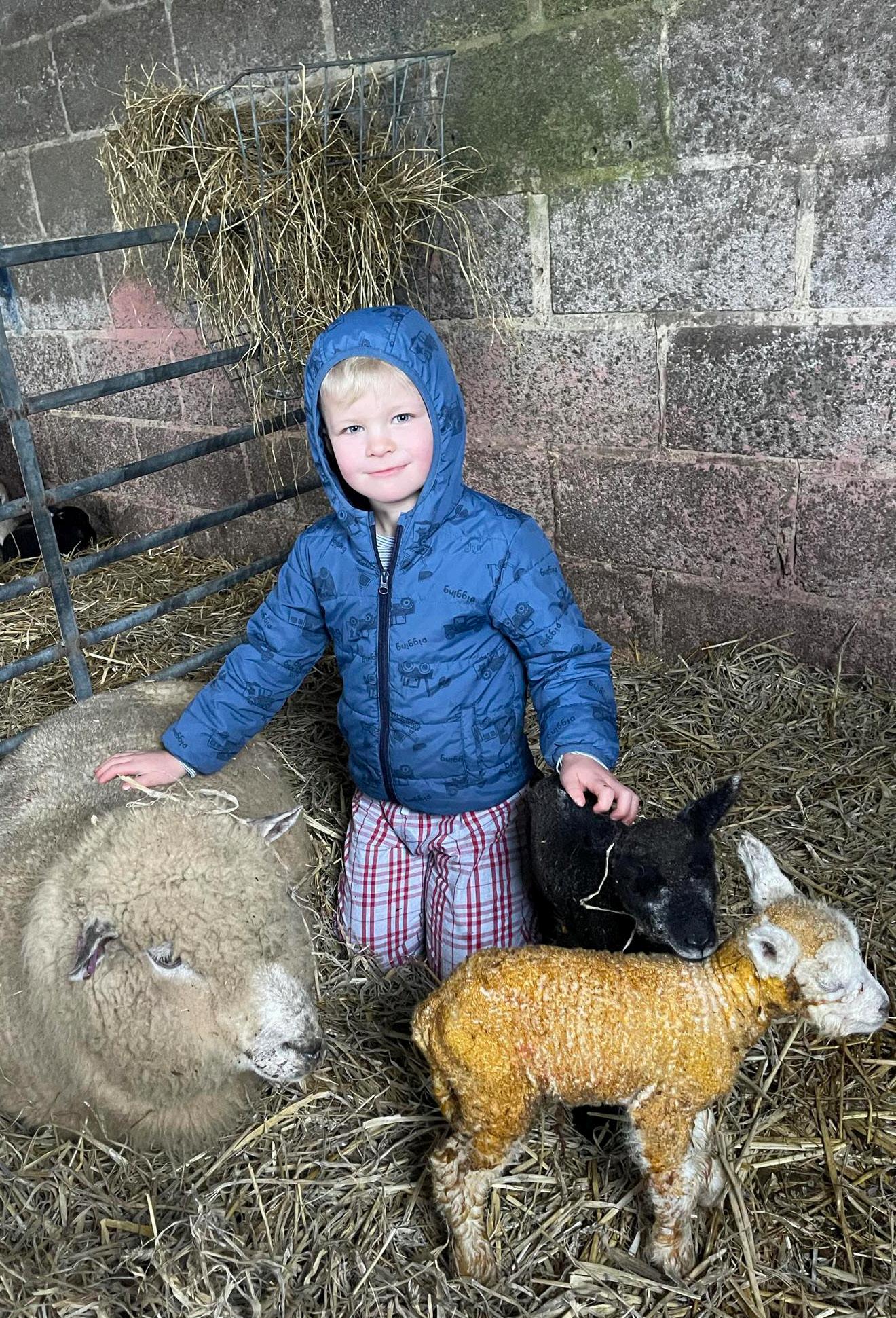
Giles was a year old when Fluffy was born – she was one of a triplet who needed to be bottle fed. He took full responsibility for her feeds and made sure she was well looked after. Fluffy is now four and Giles turned five just a few days after this photo was taken! Fluffy had twins in March – Giles was tucked up fast asleep during the birth, but when he woke and heard the exciting news, he ran outside to see her for cuddles. He made sure Fluffy had fresh water and hay, and that the lambs had a warm cosy bed of straw. Giles loves learning about farming – his family live on his grandads farm in Charlton Musgrove. He helps with collecting the eggs, getting the cows in, chasing the naughty piglets – and anything else he’s allowed to, under the guidance of his grandad Pat and dad Roger, with help from his mum Emily and brothers James and Charlie.
Do you have a Future Farmer? Send a picture with a few details to editor@bvmagazine.co.uk

TB testing at Traveller’s Rest Farm: ‘However calmly we handle them for the rest of the year, the animals know when it’s testing day, they can smell the vet a mile off’ All images: George Hosford
Trying NOT to bang on again about the weather, George Hosford presents a candid look at the farming community’s battle with TB instead
There was an article somewhere recently which blew a big hole in the argument that we Brits are boring because we spend all our time discussing the weather. The discussion of the weather is apparently the very thing that binds us together: it never fails to engender a response whether you share the pleasure of a sunny day, or commiserate about endless gloom. The weather not only affects what you are going to wear, it can dictate the entire shape of the day ahead – especially if you are a farmer –and it is also likely to affect what you will eat. So let’s celebrate it, while I dribble out a few weather stats. This may well feel like the wettest winter in many years, but in fact it is only the third wettest in the last 12 years. Both 2013-14 and 2019-20 were wetter from October to February. That said,
the rainfall we have endured in that five month period represents 75 per cent of the 39year annual average total (1,100 mm). Does that mean we are finally heading for a dry period?
Last month saw the dreaded annual TB test, which cattle and humans dread in equal measure. On Monday our vet arrived to find all the cattle arranged and waiting for him. He has to trim off some hair, measure the thickness of the skin, and then inject two vaccines into the skin of the neck of the animal. He then returns after three days to ‘read the lumps’.
We have managed to get our herd onto a health pathway that entitles us to annual TB testing, rather than the previous six monthly, unless you are shut
down. The outcome of our latest test was that a single animal tested as an Inconclusive Reactor (IR) – which is almost worse than a full reactor.
A full reactor will be taken for destruction by DEFRA, and compensation will be paid, whereas an IR can either be destroyed with no compensation, or kept for a second test at 60 days. If it fails again, it is regarded as a reactor and the whole herd will have to pass two further clear tests at 60 day intervals. If it passes, it can return into the herd and be declared clear. However, its presence will prevent the herd’s return to higher health status and therefore will be denied annual testing, instead having to undergo six-monthly testing, which all points towards the animal taking a short journey to
heaven as the least worst option. The stress of TB testing on man and animal is immense. However well we set up the handling system to gently encourage the animals into the crush, and however calmly we handle them for the rest of the year, the animals know when it’s testing day, they can smell the vet a mile off and know that he or she is going to stick needles into them –and they sting. Why we are still having to undergo this archaic and inhumane system to manage a disease is quite bewildering. How did we manage to design and build the covid vaccine and stick it in the whole human population in no time at all ... and yet still be told that a TB vaccine for cattle is five years away?
A huge amount of effort has gone into reducing the reservoir of TB in wildlife – in Dorset in particular, new outbreaks of TB in herds have reduced by well over 50 per cent since the beginning of the campaign to control badger numbers in 2016. That’s a huge improvement, but the cull is being drawn to a close, with small trials being undertaken to evaluate the effectiveness of vaccinating badgers – it’s hard to see that having a significant benefit, and it will certainly be wildly poor value for money.
The problem can’t all be laid at the badger’s door however.
In Dorset, new outbreaks of TB in herds have reduced by more than 50 per cent since the beginning of the campaign to control badger numbers in 2016
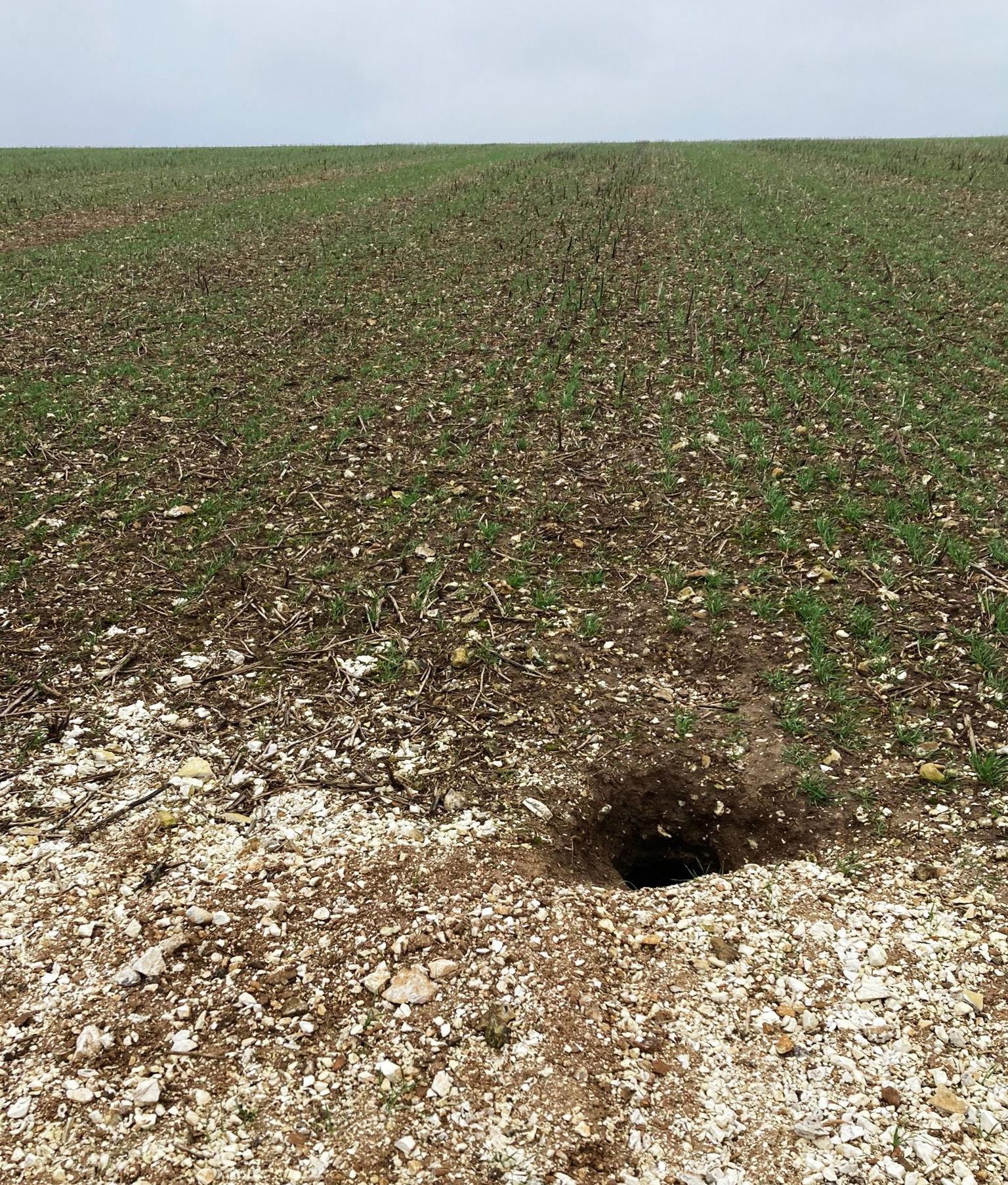
There is clearly still a reservoir of disease in the cattle population –the testing regime doesn’t seem to be able to root out all animals carrying the disease. And so there they remain, slowly drip feeding it back into their fellow cows. To be honest, until there is an effective bovine vaccine, the near future lies largely in farmers’ hands. The chances of avoiding TB

It had to be 9am on a Monday morning, on the main A357 at Durweston lights. Someone had left a gate open. The traffic was backed to the village before we caught up with them. Luckily a couple of kind farmer types had blocked the road and turned them back: being tame and partial to toast (which I was carrying), they were soon in safer pastures
will only be able to improve if farmers practise the following:
• Operate closed herds (no imports of live cattle from other farms anywhere)
• Co-operate with APHA (Animal and Plant Health Agency) to use all tests available to clear out the disease from herds
• Reduce to zero the opportunities for cattle to interact with wildlife. This is hugely difficult, especially when grazing outdoors.
• Keep a close eye on numbers and activity of wildlife
• Consider giving up cattle farming
This is an admittedly brutal personal view, with huge implications for many farmers’ business models. But without all of the above, in the absence of an effective vaccine we are simply destined to keep going around and around again.

Celebrating Dorset sustainability: the Love Local Trust Local Awards are open to all Dorset farmers, fishermen and food producers
The Love Local Trust Local Awards are proud to recognise and celebrate small, independent Dorset producers and businesses. Entering the Love Local Trust Local Awards is a great way to promote your produce and business to a wider audience, and to stand out from the competition. You will have an opportunity to interact with other like-minded producers and businesses and to be part of our Love Local Trust Local family. We have just launched our new website, and entries for the 2024 awards are open until 3rd May. With 16 categories available, including new ones recognising individual and business stories, we are hoping for an exciting response to this year. We are thrilled to be participating in the Dorset Spring Show on April 27th & 28th at Kingston Maurward College. The highlight of our calendar falls on 3rd September: the awards evening. This year set against the backdrop of
the Members Pavilion at the Dorset County Show, this event promises to truly celebrate our 2024 winners.
Looking ahead, we plan to launch a new directory for both sponsors and members, online and in print. Our goal is to facilitate connections and collaborations among individuals and businesses. We aim to host workshops, fostering support and advice among our members and sponsors.
In 2024, we’ve revamped our Sponsor and Membership packages to cater to businesses of all sizes. Detailed information is available on our website. As a self-funded organisation, we deeply appreciate everyone who currently supports us and are looking forward to welcoming new members and sponsors to the Love Local Trust Local family in 2024.
• For more info, visit lovelocaltrustlocal.co.uk or find us on Facebook here.




Procter is in
‘I’m just so over this wet weather! When will it end?’ It’s a common refrain this winter – and never more so than from those trying to make a living from rain-soaked land.
This month, we have had to sacrifice several fields to the ravages of hooves, hoping that the ground will dry up later in the spring and enable us to roll the poached ground flat once more.
The youngest foals spend their first few days finding their legs in the all-weather turnout for short spells. Once the foals are turned out in a field, we are careful to continue to restrict their time out – squelching through muddy ground for too long could pull at their joints if they were left out all day. Also foals are less inclined to lie down and rest if the ground is wet.
In the early part of the breeding season, if it’s raining, the foals go out with special waterproof foal rugs, because if they get wet, the wind will quickly chill them and make them very cold. Once the weather improves and they are older, bigger and stronger, they can withstand moderate rain, but would be brought into stables for a rest if heavy rain persisted for more than a day or so. THowever, once the mares have a foal at foot,



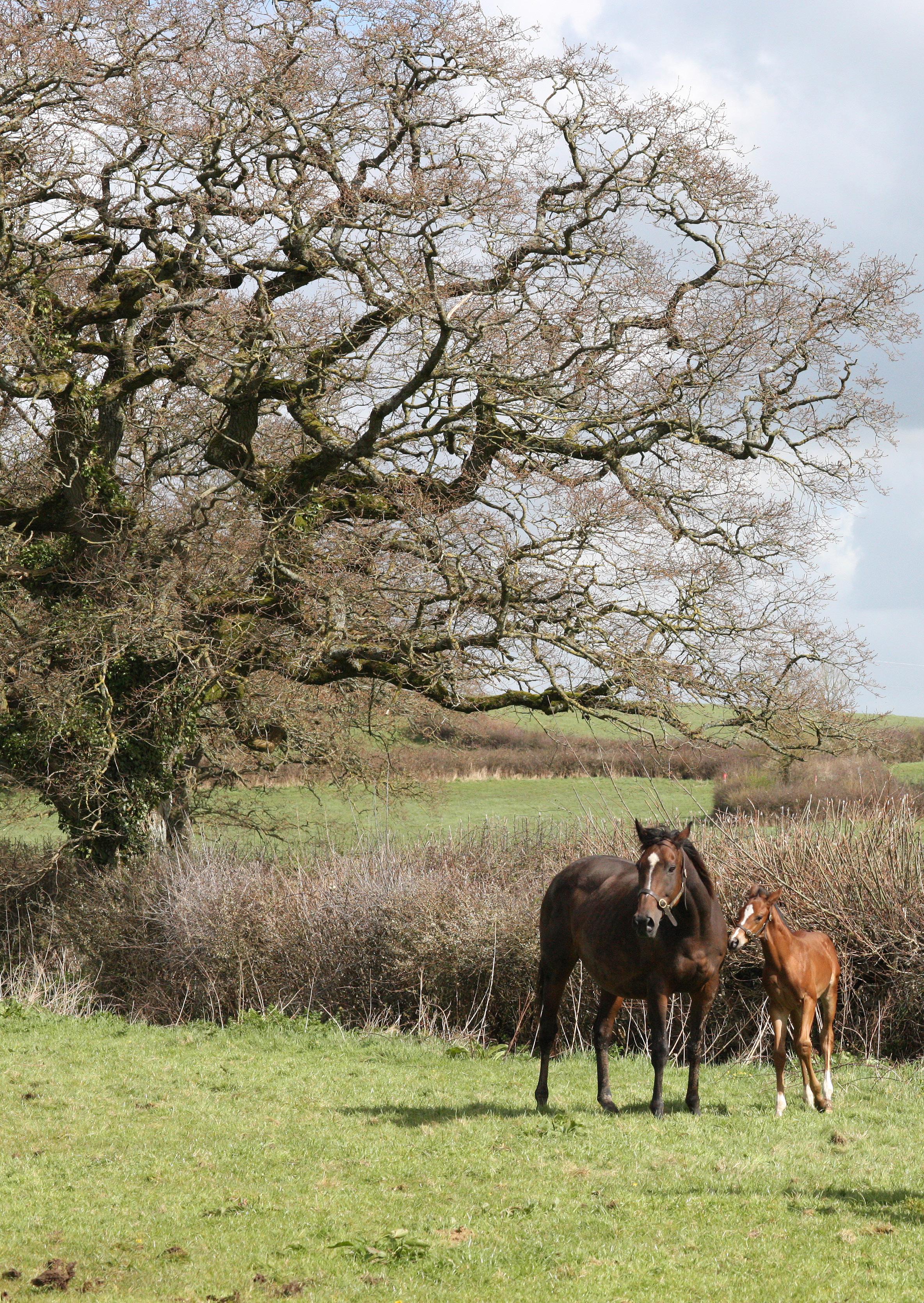
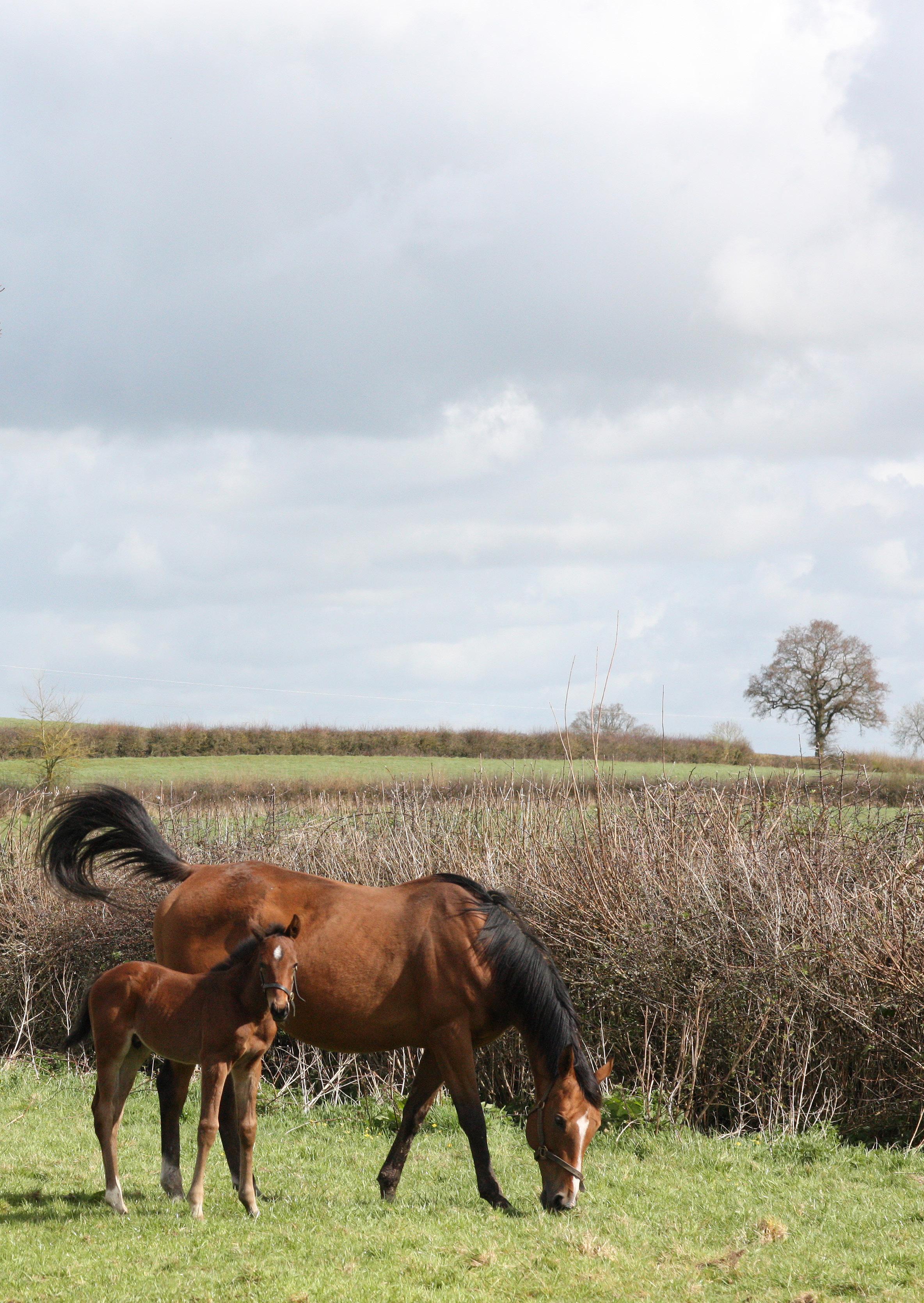
they have to stay without rugs, as the foal could become tangled in them.
The foals quickly get used to being led in and out of the field, and it doesn’t take long for a single member of staff to be able to lead a mare and foal together. We use well-fitting, leather headcollars for the mares and the foals, and lead the foals using a ‘slip’ – a length of soft webbing which slips through the headcollar, without fastening to it. If a foal is being difficult, the handler can safely let go in the knowledge that if the webbing is stepped on, it will just pull free and will not get tangled around the foal’s legs.
Next year’s foals
March has been busy, with a total of seven new foals born. Most of our owners want their mares to visit a stallion again this year so that they produce another foal in 2025. This involves our vet scanning each mare ten days after foaling to check whether she is in her foaling heat. Mares usually come back into season just a week after foaling, but we prefer not to cover on this first cycle as conception rates are quite low.
Once we know she has finished this ‘foaling heat’ we can count forward to when the vet should start tracking the next cycle. However, the longer after foaling that a mare’s foaling heat is, the greater the chance of getting in foal: if it goes beyond 14 days, we might consider covering on a foaling heat.

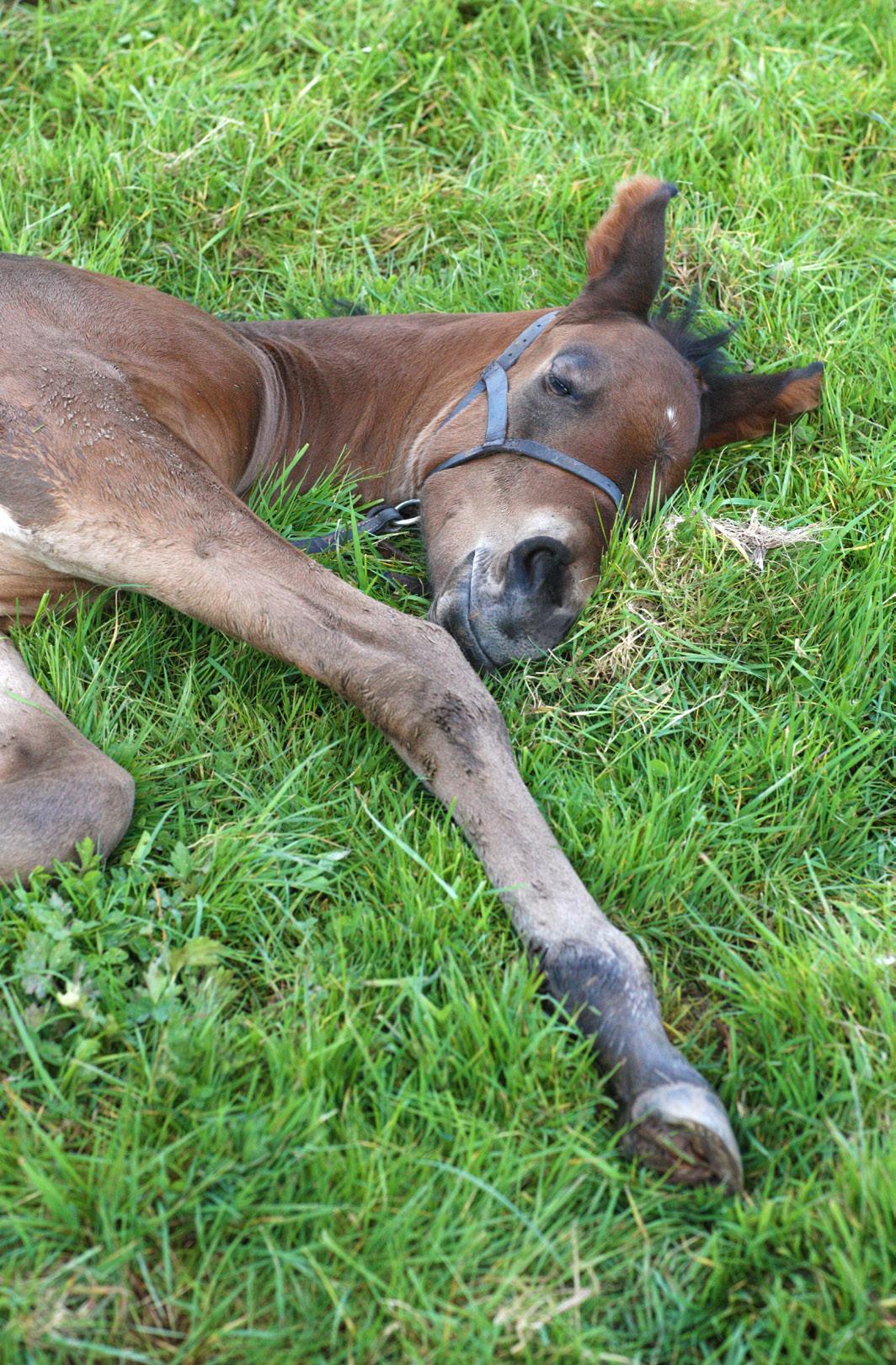
Tracking a mare involves ultrasound scanning the uterus and ovaries to measure the size of the follicles growing in the ovaries and the amount of oedema (thickening of the lining) in the uterus.
Once the vet determines that a mare has grown a follicle that is anywhere between 3.5cm and 5cm and that the oedema score is high, we will book a covering within the next day or so and drive a mare to the chosen stallion.
The foal always travels to a cover with the mare. Removal of the internal lorry partition essentially turns the lorry into a mobile stable with a lovely deep straw bed, and the foal is free to feed, wander around or lie down and sleep whenever it chooses. At the stallion stud, the foal is held by a handler in the covering shed, so the mare can see her foal at all times and does not get worried. Then they are both loaded to return home.
In other news, we were delighted to hear that Honeysuckle, the TGS-bred multiple Grade 1 winning champion mare, safely delivered her first foal, a Walk In The Park filly, on 29th March. In the same way that we are always excited to follow TGS-bred foals, we feel rather like ‘grandparents’ to Honeysuckle’s filly.


We’re excited to welcome Team Rimmer to the BV equestrian section, kicking off a new monthly column sharing life in a busy eventing yard
Team Rimmer are really excited to be here, and we’re looking forward to sharing our stories with you every month! We figured the best way to start is probably with some introductions ... I’m Jess, and I make up 50 per cent of Team Rimmer. The other half is my mum, Jo, who you will no doubt hear from in future columns!
We are a close-knit family business based at Fontmell Parva, just outside of Child Okeford, where we run a yard of competition horses alongside Joe Roome – also known as ‘Boy Joe’. Although our focus is Eventing, our top priorities are happy horses, happy staff, and a work hard, play hard mantra!
Jo Rimmer (left), with 5*
Isaac Newton and Jess: ‘Newt thinks hard work is totally overrated’
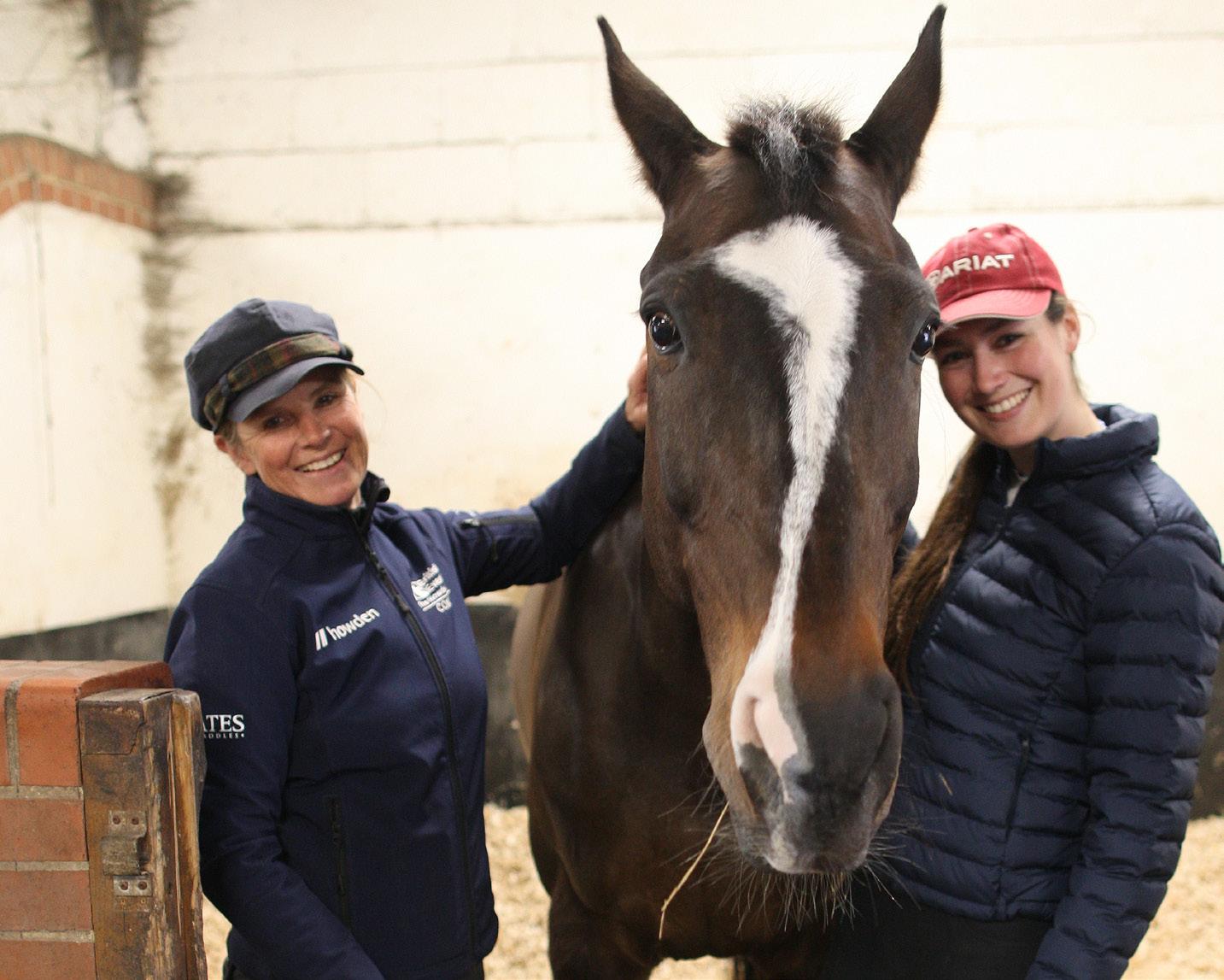
 Max (Mr Mister) is keen on treats
Max (Mr Mister) is keen on treats
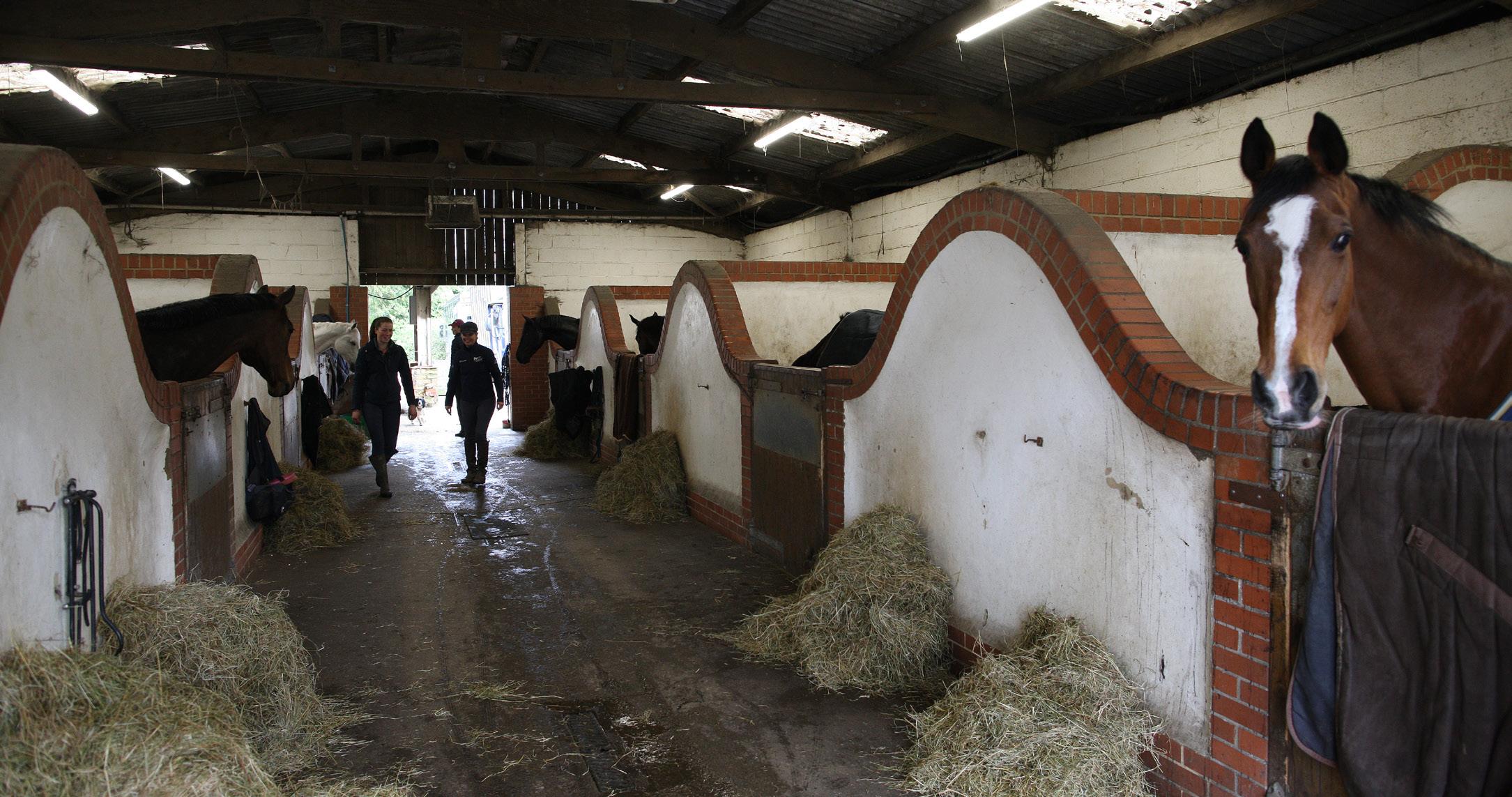
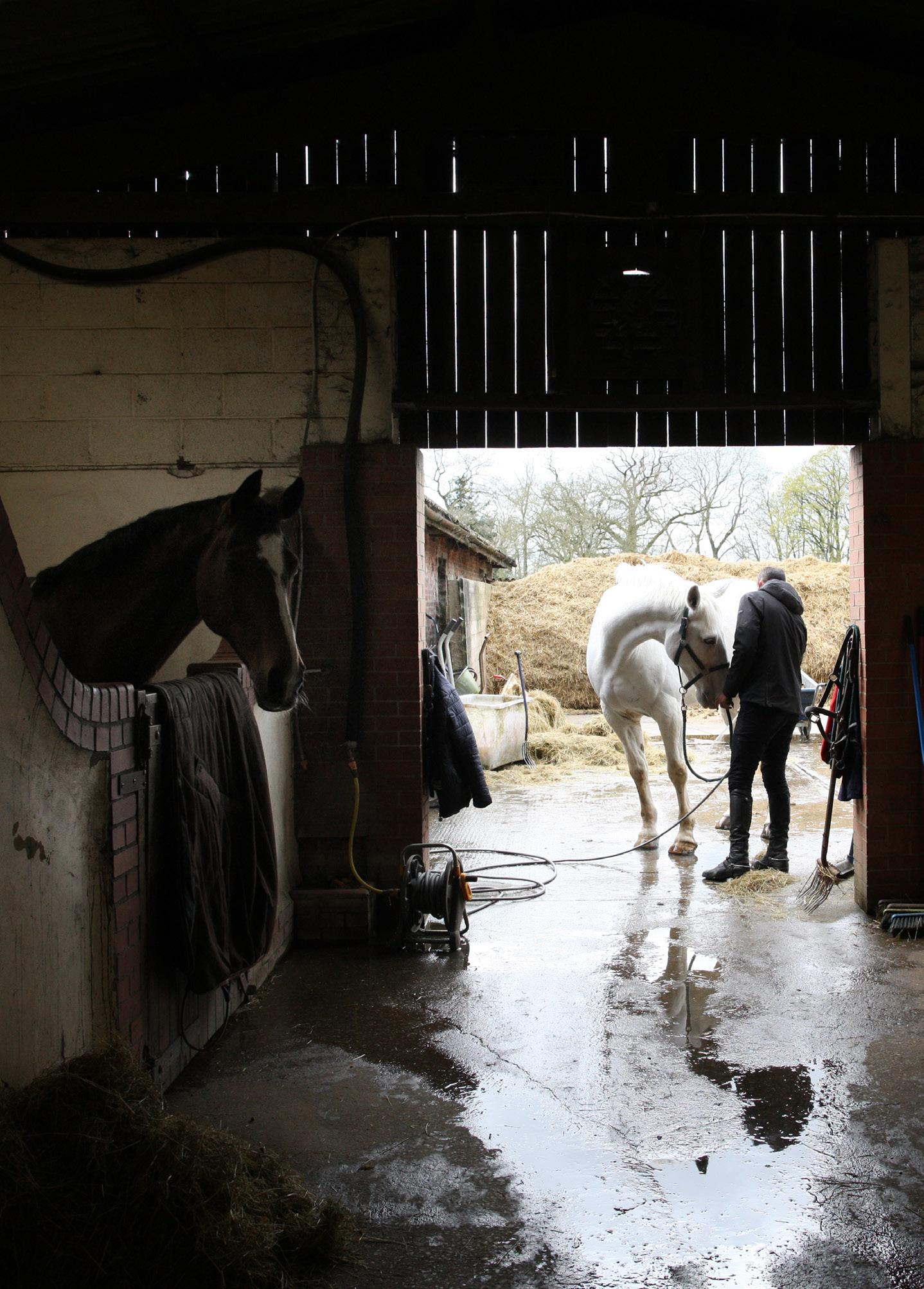
Daily life on the yard consists of caring for and training around 20 competition horses, give or take – mum keeps telling us she’s cutting down. We’ll believe it when we see it!
Perhaps a quick Eventing 101 would be a good way to introduce this crazy sport … Many describe Eventing as an equestrian triathlon. It consists of three phases: dressage, showjumping and cross-country. It is a test of trainability, bravery and precision, and was originally designed to prepare military horses for the diverse range of challenges they might face. Event horses must be obedient yet bold, confident in themselves, yet trusting of their rider.
Trainability is perhaps the most important aspect when looking for a top Event horse – and it’s one which our best horse, Isaac Newton, is severely lacking!
Known to his friends as ‘Newt’ he is a cheeky, playful character who sees the funny side to life. He also thinks hard work is totally overrated. Mum always describes him as being the ‘rascal schoolboy’ who would be turning his maths tests into paper aeroplanes, but somehow manage to pull it out of the bag on exam day.
Despite his slightly rebellious attitude, he has completed three 5* International events –the highest level there is – and he represented Great Britain in the Nations Cup series. He has enormous talent, and his partnership with mum was fairly unrivalled. More recently, I’ve been lucky enough to take over the reins, and we have some exciting plans as we head into the 2024 season.
Returning to the schoolboy theme, it seems fitting to introduce Mattie (The Real McKay) who is on the other end of the spectrum to Newt. He would defintely have difficulty with his times-tables, but he does ALL his homework with 110 per cent effort. He wouldn’t ever be one of the ‘cool kids’, but he would always be the one to make sure everyone was included at play time.
Mattie would be hanging out in the playground with Jimmy (Talan Blue) – he’s the lanky, gawpy and kind one – and the pair of them would spend their time swooning over the beautiful ‘Lisnaught’ ladies: Princess Elsa (Lisnaught Lady Cruise) and Bisous (Lisnaught Are You With Me). Who would in their turn be totally uninterested, naturally! Right, I had better leave it there before this turns into a novel … there is still the rest of the classroom to fill, but it’ll have to wait ‘til next month!
• Team Rimmer Eventing

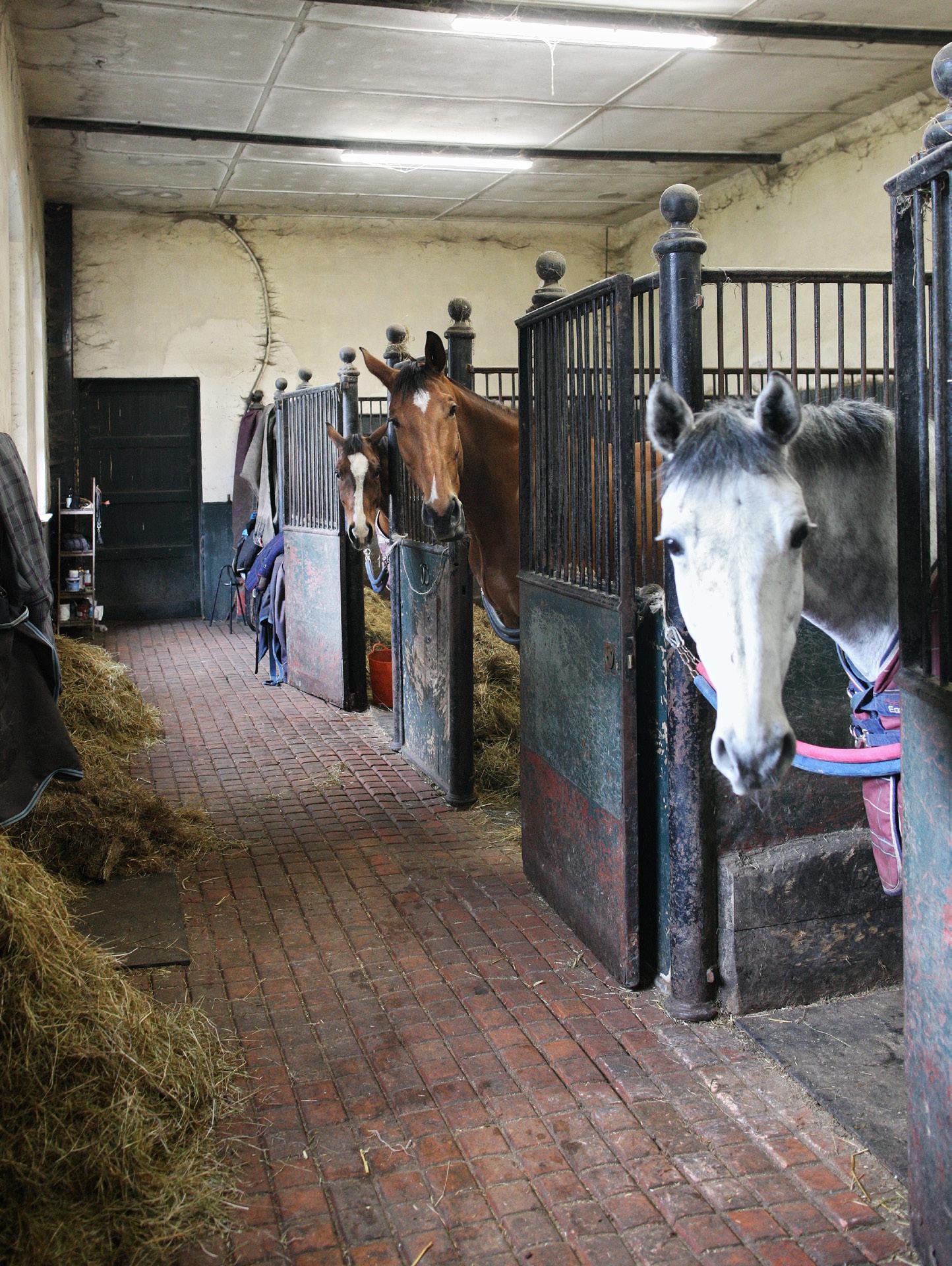

An equine therapy centre in Blandford is creating transformative connections for those most in need of healing – Sally Cooper
It’s a return trip to Horserenity this month, to find out more about the horse connection process and mindset after my initial visit (you can read the first part here), which talks about the ‘natural herd’ of eclectic horses at Horseserenity, the equine therapy centre in Blandford.
One of owner Sarah Vivian’s biggest helpers – and inspired connecters with the animal’s energy – is her daughter.
Connie is an energetic 19 year old horsewoman who freely talks about how the horses continue to help her with the management of her autism.
Poppy, the self-appointed leader of the equine therapy herd, was Connie’s first pony. All the animals look to her for guidance if something untoward occurs.
Big shy John was Connie’s first eventer and skewbald Texas is her current eventer. When he’s not in therapy sessions, he’s helping to propel her up the levels towards Novice Eventing (a level determined by the jump height – show jumping 115cm, cross country 110cm, and a highe grade Dressage test).
Connie was a Grade A student

Connie and Texas spending time together

in school, but she decided after achieving her GCSE and BTechs that formal education was not where she felt comfortable, as she frequently felt overwhelmed by a big, strictly structured environment. Since the pandemic, like so many others, Connie has felt more comfortable with life learning and a more personal timetable. It has been hard for mum Sarah, a teacher herself, to come to terms with. But, on the positive side, it has allowed Sarah to talk to other parents with children
experiencing the same issues. ‘I totally empathise with you’ tend to be magic words.
Connie believes that, when she is working with the horses or competing out on the circuit, she is acting as a representative for those who have hidden disabilities, which are frequently poorly considered and understood. Through social media, Connie has used her personal experiences, including serious depression, to help others, with thoughts and advice on how to cope and move on. For her, the horses and her equestrian life have been a literal life saver.
There is, of course, a juxtaposition of the determinedly relaxed style of the Horserenity world and the formal, structured world of Eventing. There are obvious issues, including the rigid structure of competing and the strict timetables … even seeing others shouting at their horses or handling them with little empathy. Instilled with high standards of care and calm horsemanship, Connie admits she occasionally has to rein in her anger at other riders’ treatment of their horses. ‘How can horses be expected to perform when they are treated in such a manner? Above all, the horse must be respected,’ • horserenity.co.uk

Skewbald Texas is Connie’s current eventer: when he’s not in therapy sessions, he’s helping to propel her up the levels towards Novice Eventing


The British Trust for Ornithology estimates that nightingale numbers have probably reduced by more than 90 per cent since the 1960s

nightingale sang ... on vanishing scrub says wildlife writer Jane Adams
They are part of our natural heritage. We hear recordings of their melodic songs on the radio and social media. Their name appears in literature, poems and WW2 love songs. They feel familiar, as if we should somehow know them. Yet how many of us have ever heard, much less seen, a living, breathing nightingale?
I found an old handwritten notebook in a local library recently. Dating back to the early 19th century, it documented the wildlife that once thrived in our village. The dormice crawled through the hedgerows. There were red squirrels in the woods and thousands of butterflies flitted over the flower-rich meadows. Yet, it was the mention of nightingales singing at night in the nearby fields that made me realise how much we have lost. Back then, I would have heard nightingales from my garden – all I hear now is the traffic.
Where did they all go?
Along with other summer migratory birds, such as cuckoos, nightingales are now frighteningly rare. The British Trust for Ornithology estimates their numbers have probably reduced by more than 90 per cent since the 1960s – there are likely to be fewer than 10,000 nightingales visiting our shores this spring.
Due to their small size (about the size of a robin) and rather drab brown colouring, spotting them is a challenge in their preferred coppiced woodland or scrub. Sadly, suitable habitat is also hard for them to find.
Modern landowners don’t have much tolerance for scrub, and our woodlands don’t have the dense understory of foliage nightingales need.
A few years ago, I was told about a spot where nightingales had previously nested. In a clearing, next to blackthorns iced with blossom, and long after the sun
Due to their small size (about the size of a robin) and rather drab brown colouring, spotting a nightingale is a challenge

had disappeared, I waited. The song started softly. Gradually it grew, becoming more confident, much louder and more urgent. There was a brief silence. Then more lingering tones, and short, sharp notes. On and on it went, holding me captive, unable to move. Perhaps I perceived a desperation in this bird’s song? Or was I acutely aware of its rarity? Or maybe it was my menopausal hormones. Whatever the reason, I cried.
• Ten years ago, on a warm April night, we were on our way home around midnight and surprised to hear loud birdsong through the car window. Pulling into a layby on the usually-busy
A-road, we simply sat – silent and still – listening to my first nightingale. You can hear a minute of that utterly magical moment in the video below - Ed
Could rewilding initiatives in Dorset be the lifeline nightingales need?
Rewilding initiatives like Wild Woodbury, Mapperton Wildlands, and West Dorset Wilding, with their hands-off approach to land management, may be just what nightingales need to survive in Dorset, and hopefully to thrive in the future. After conservationists spotted a nightingale at Wild Woodbury last year, hopes are high that nightingales will return to breed in 2024. At other established rewilding sites, such as Knepp in East Sussex, nightingales have made a welcome comeback.



Most native wildflowers rely on insects to pollinate them – former president of DWT Tony Bates explains how the flowers are designed to attract them
Insects are attracted to flowers to drink the nectar and, in many cases, to eat the pollen – an important source of protein. Flowers produce lots of pollen, so that there is a surplus available to attach to an insect’s body and legs, facilitating the transfer of pollen to the next flowers they visit. It’s a happy relationship – the insects get fed and the flowers get to reproduce.
Wildflowers come in an amazing range of shapes and sizes, and insects favour different flowers depending on their colour, scent, design and ease of landing. For example, beetles prefer buttercups and daisies which are easy for them to land on, while smaller flowers such as speedwells are particularly attractive to small flies. Flowers such as flax have a long spur containing nectar, which makes them particularly suited to

butterflies and moths – those with a long proboscis, enabling them to reach the nectar source. Most flowers produce a scent – and no two scents are the same. Insects will often travel a long distance to find their favourite flower because of its individual scent.
Another family of plants, the umbellifers, have a wide head with multiple small flowers, each with only a small amount of nectar. Visiting insects enjoy a ‘feast in small bites’, taking small quantities of nectar from each individual flower.
Insects’ eyes enable them to see a much greater range of colours than we do. They can see ultraviolet light, which makes the flower stand out clearly from the surrounding plant structure. This ability helps them to aim more accurately at their food source. Smaller flowers also often have markings or guidelines to entice the insect into the nectar source. These include speedwell, tiny blue flowers with a bright centre, and late summer’s eyebright, with its yellow landing zone (see image, right).
Beetles prefer buttercups and daisies, which are easy for them to land on, while the long spires of flax are loved by butterflies
The yellow spot of the eyebright flower acts as a landing zone, with purple lines guiding to the nectar. The upper lip protects the style, which projects forward so it touches visiting insects and receives pollen from another flower. As the insect enters, pollen is showered onto its back from the stamens above, ready to share with the next flower
Insects may use pollen, nectar or both as food, either as adults or to feed their young. Hoverflies, for instance, enjoy a good meal of pollen. On a sunny day in springtime, emerging insects will make a buzz of activity around bluebells, primroses and celandines.
Wild arum, with the wonderful common nickname of Lords and Ladies, which you may have seen
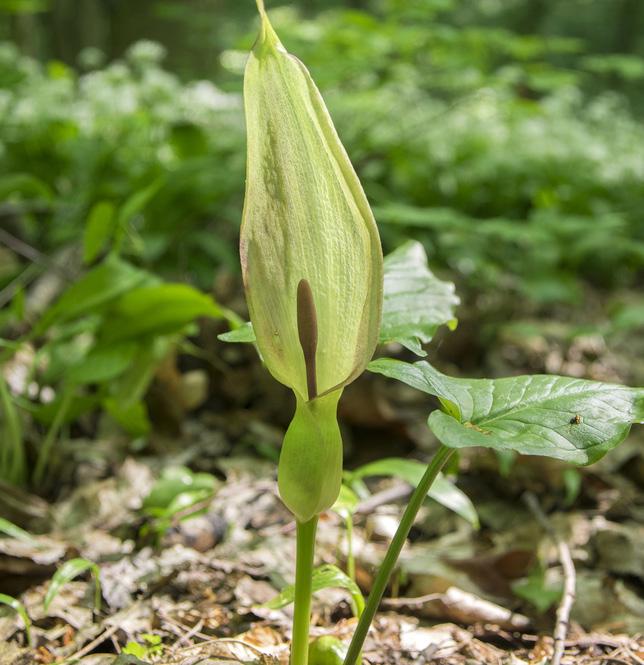
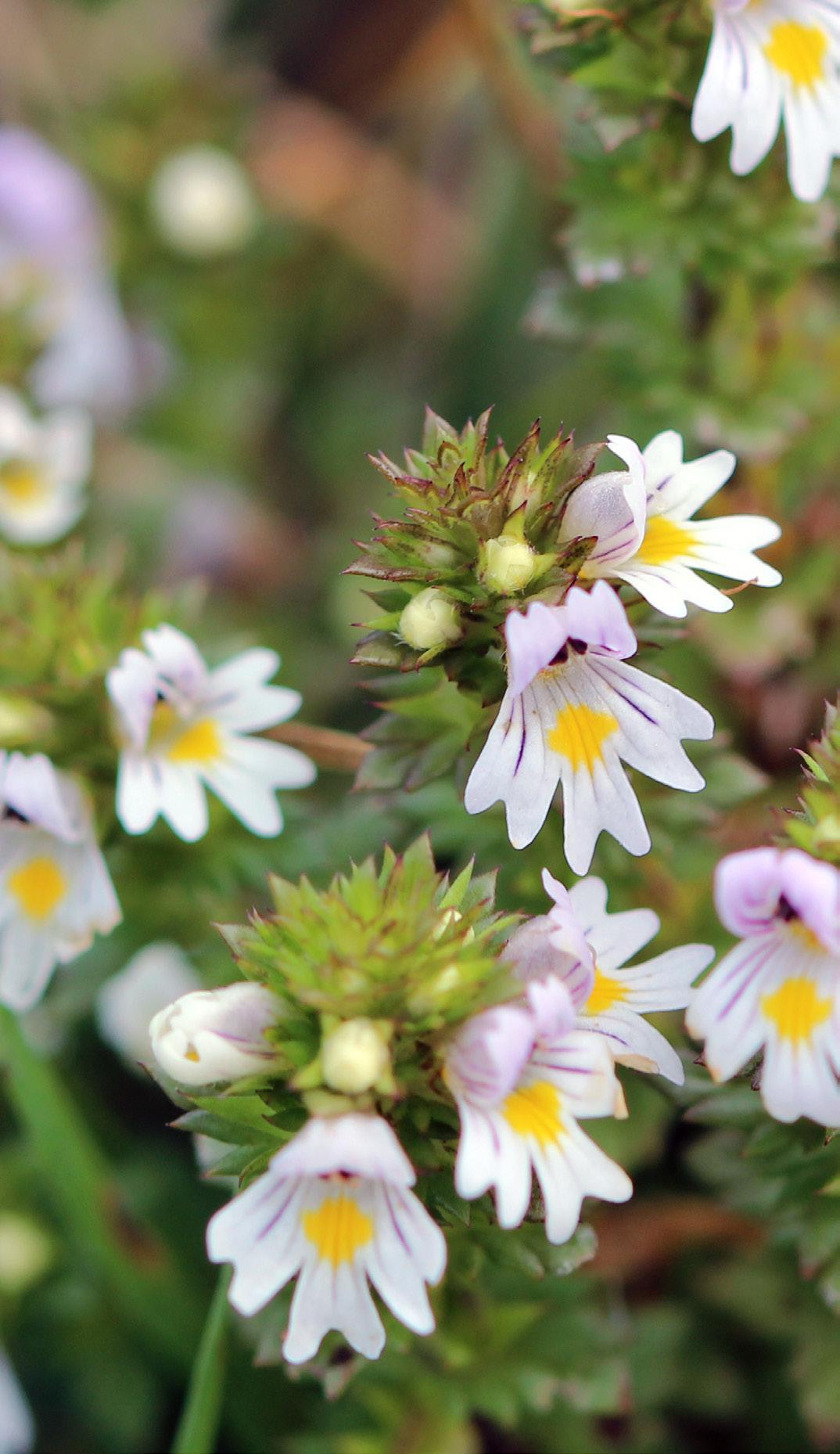
featured in the BBC Wild Isles series, has a bizarre way of attracting small flies for pollination. It has a distinctive purple or pale green sheath surrounding a central ‘spadix’ with a spike of tiny flowers on a fleshy stem. Unlike the fragrant scent of most flowers, it produces the smell of rotten meat late in the day. Tempted by this, small flies become trapped in the bottom of the sheath by a shield of stiff downward-pointing hairs. The next day, the hairs wither, which allows the flies to scramble out over the pollen stamens to visit another arum. Recent research suggests that in the UK, flying insects have declined by 60 per cent in the past 20 years. The serious decline in insect numbers is one of the greatest challenges we face – it is causing a loss of wildlife right at the bottom of the food chain. It is crucial that habitats are provided to allow the plants upon which insects depend to thrive. As well as planting and encouraging wildflowers, it is important that we provide more undisturbed ground, dead wood piles and decomposing vegetation – key places for the life cycles of insects.
• Learn more at wildlife.trusts.org
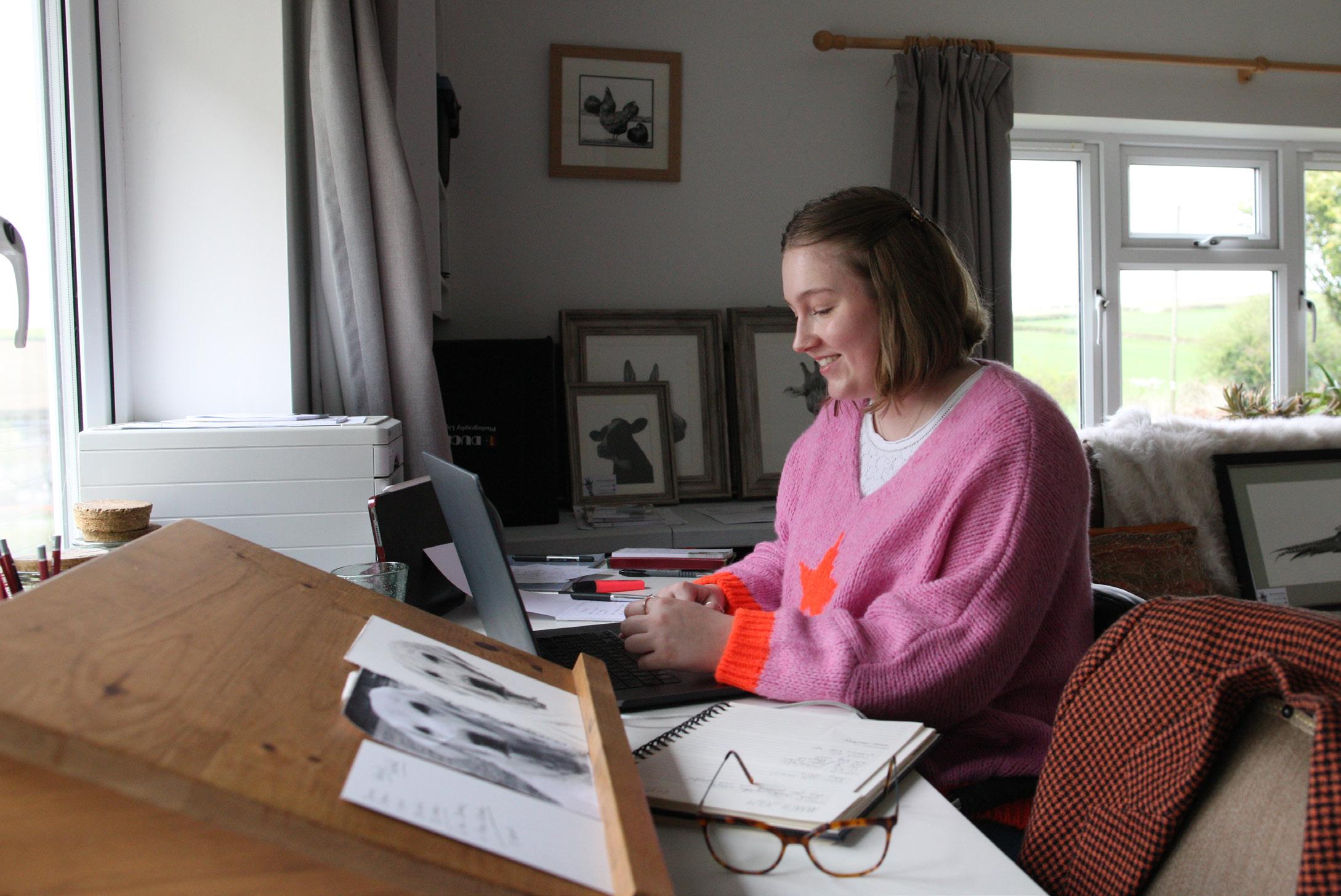
A lifelong love of animals, a natural gift for drawing and chronic fatigue syndrome have combined to help Lucy Kendall launch her art business
Many students leave college with good grades and plenty of ambition, but find it hard to get into their chosen field of work. Lucy Kendall is a rare exception – a teenager who has already launched her business and won an important local award.
Lucy, who lives in Pimperne, has developed a range of beautiful animal prints, cards and giftware and she also undertakes commissions to draw people’s pets. Her business really started with a giraffe –and a koala has helped her through the dark days of a prolonged and debilitating health condition.
From earliest childhood, Lucy loved drawing – and she was good at it. Turning 20 this year, Lucy still lives in the village where she was born, surrounded by animals – dogs, cats and horses. Her mother was a jockey who competed locally, including at point-to-points.
could interact with the animals, even on farms. I remember being taken up to feed the calves at Rawston Farm when I was really small, and I now have a Rawston Calf series!’
I’ve watched my mum work so hard at a job she is good at, but which doesn’t excite her. I adore my art and I am prepared to make it a success – CFS or no CFS
Lucy’s first pony, a tiny moorland called Thumbelina, lived at home, roaming around the garden and sometimes coming into the kitchen. She and her mother have two dogs and three cats – she has a close relationship with the dogs which keep her company on the studio sofa when she is drawing. The business, which Lucy started when she was just 16, grew from her love of animals and art. Her mother, who has always encouraged her, came up with a deal during her exams – the more As and Bs Lucy got, the more she could earn – but if she slipped below a C she had to pay her mother.
‘She’s also a cleaner and she used to take me to work with her when I was young, which meant I
The incentive worked, and Lucy passed all her exams with B or above, earning £850, which her mother paid over the course of a year.
With the onset of the pandemic and lockdown, Lucy started drawing animals in pencil and found that she was creating a perfect range for cards – she used the money she had earned from her exams to create a gift range featuring the pictures.
‘There was one drawing in particular that I fell in love with, my beloved Frankie the giraffe. I came up with names for all my drawings – and I went on to call my business Share a Little Frankie (before that it was just Lucy Kendall Fine Art.)
‘I focused my A level art practice on animal emotion,’ she says. She found that capturing the emotions and characters of her subjects helped to create a deeper connection with the viewer: ‘I wanted not only to display how beautiful these creatures are, but to convey their emotional power.’
higher education – including the widely-respected course at Falmouth – but eventually decided that she would focus full-time on Share a Little Frankie.
Lucy the entrepreneur
Frankie is very special – an inquiring gentle giraffe, who seems to be looking right into your eyes. It isn’t surprising that he is Lucy’s most popular print. Another giraffe inspired Surveying the Savannah, one of the major pieces in her A level show. This beautiful drawing won the prestigious Dorset Art Prize in 2021.
‘I get lost in the detail and have a breather from the stresses of every day’
She took an Art Foundation course at Ferndown Upper School, but with the onset of her illness and the diagnosis of ME (myalgic encephalomyelitis, also known as chronic fatigue syndrome or CFS) she had to complete the course working from home. She still got to the final exhibition and received a Merit. Lucy considered going on to
As she began to develop her business, Lucy gained experience at Down the Steps art shop (now Kit & Kaboodle) in Shaftesbury, and had work experience with local artist Alison Board, who explained to her that running her business would be an important part of her life. ‘She was right – I will always be an artist first, but I have had to become an entrepreneur second.’
Her driving instructor also gave valuable advice about the need to ‘capitalise on everything.’
As a very shy person, she found this a challenge, ‘but I have just kept pushing and pushing.


Lucy welcomes commissions for pet portraits, but warns she is very busy – she is currently taking bookings from June to the end of the year
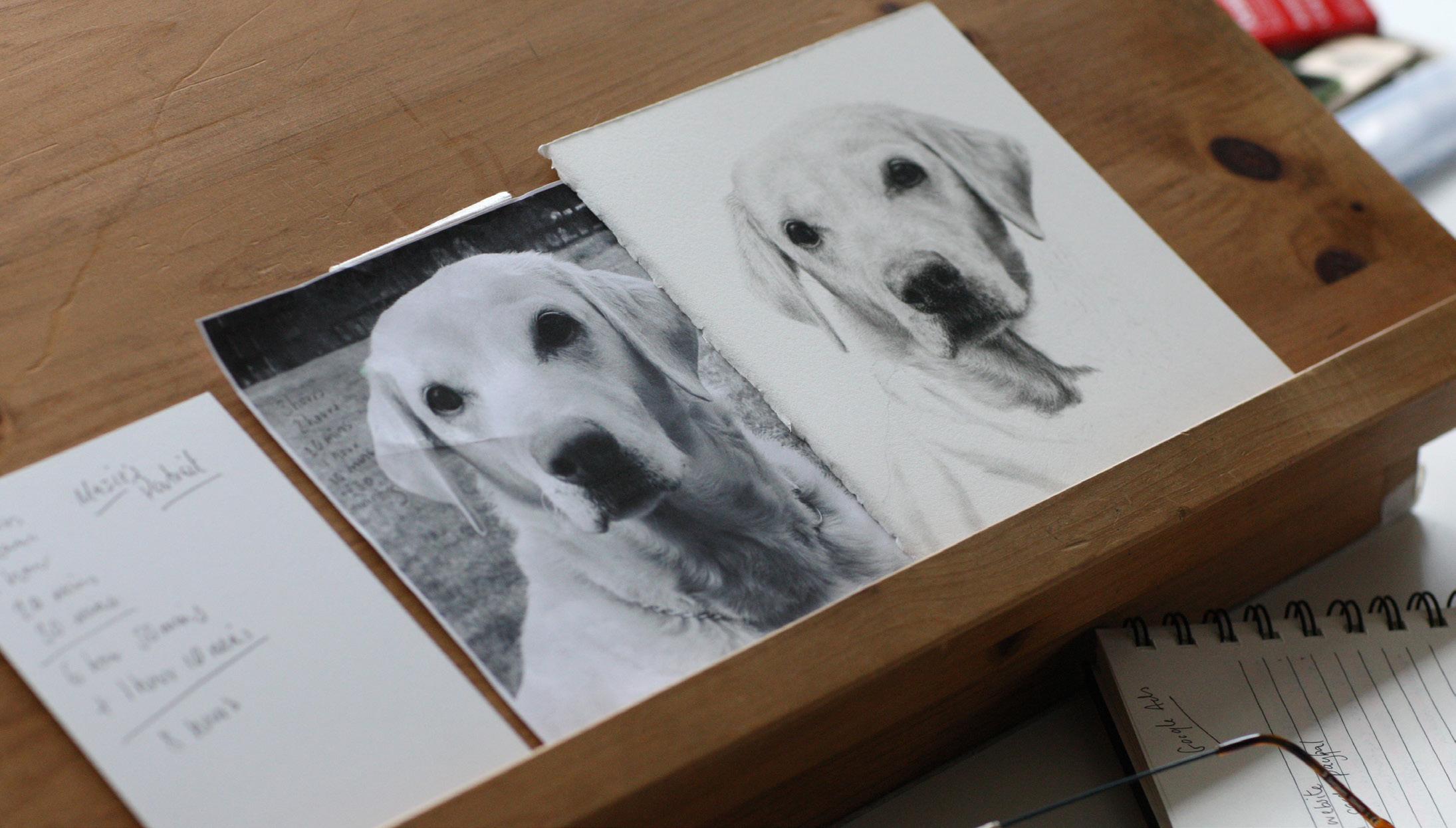
I think I now see myself his way. You do need to be incredibly resilient.’
Taking his advice has worked – her driving instructor has now commissioned two portraits. Such is the realism of her drawing that when you first look at one of Lucy’s portraits, you could be forgiven for thinking they are photographs. She is a self-confessed perfectionist – every hair, every marking, every bit of fur has been carefully placed there with her beloved graphite pencils. ‘I often get asked if they are photographs, but my artwork is not hyperrealism – it is conveying the personality, character and emotion of the subject.

Lucy Kendall
Photographs are great, but a drawing captures not only a moment but a memory and a feeling,’ she says. ‘I want my drawing to take the viewer back to the time when the original photo was taken.’
As well as the prints, including a limited edition of 25 of the Dorset Art Prize drawing, Lucy produces a wide range of giftware – cards, bags, bone china mugs, giclee prints, stationery and tea towels. Some of her gift items are sold for charity – a Christmas card set raised money for the Multiple Sclerosis Society, chosen because her father suffers from MS. She is very eco-conscious and also tries as far as possible to use local products. Her new range of slate coasters is being handmade at a small business in Somerset, her paper goods are produced in Dorset, her prints are framed in Blandford and her giftware range is sold in a number of local shops, including 1855 in Sturminster Newton and the gift shop at Moors Valley. Lucy welcomes commissions for pet portraits, but warns she is very busy and has limited availability – she is currently taking bookings from June to the end of the year.
Lucy is excited about the new British Countryside range, inspired by the Dorset wildlife she knows and loves, which is being launched shortly. Some of the originals have already been sold and further designs will be added during the year.
If you were wondering about the koala in the headline, it has been an important companion throughout Lucy’s gradual but steady recovery
from CFS. Lucy calls her ‘my anxiety koala, Carla.’ She made the exquisite drawing over the course of 18 months, starting during her A level exams: ‘to help me to relax and de-stress. I have dipped in and out of the drawing until I finished her recently.’ Lucy uses her intensive drawing method to ‘get lost in the detail and have a breather from the stresses of every day.’
Carla the koala is available in a limited edition of 25, but is also being sold as a giclee print, with 10 per cent of the proceeds going to the mental health charity Dorset Mind.
Lucy has worked very hard to achieve so much while still in her teens, but she also has a sense of being very lucky. She says: ‘I’ve grown up watching my mum work so hard at a job she is good at, but which really doesn’t excite her. I adore my art and running my own business and I am prepared to make it a success – CFS or no CFS. I know I’m fortunate to have had so much support from my family, my friends and the local community.’
Developing her business – while recovering from such a debilitating health condition – has been difficult, ‘but it has given me so many skills I wouldn’t have had otherwise,’ she says. ‘And I have had so much fun.’
• You can purchase items or contact Lucy Kendall through her website sharealittlefrankie.co.uk or email her on sharealittlefrankie@hotmail.com


Butternut Squash with Coriander and Toasted Seeds quiche, a recipe in Honeybuns’ All Day Cook Book
by Fanny Charles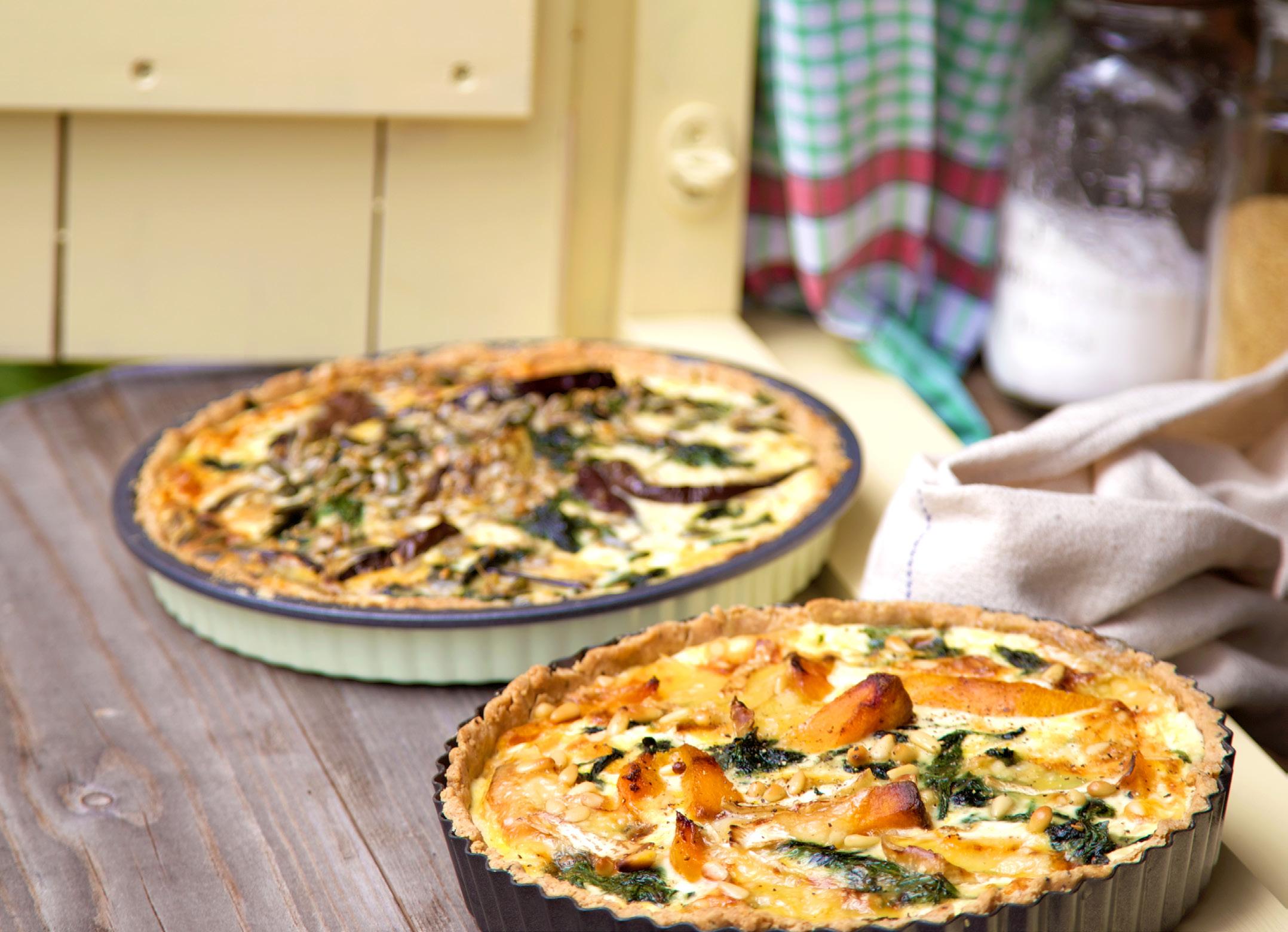
If you are a coeliac, gluten-free isn’t a lifestyle choice – it’s the difference between enjoying life and feeling permanently, miserably, malnourished
Until she was in her late teens, Christine Willis always felt ill – she had headaches, stomach aches and was in and out of doctors’ surgeries and hospital for endless tests.
Christine Willis, owner of Christine’s Puddings, was in her teens when she was diagnosed as a coeliac.

It turned out she was suffering from malnutrition
– she was a coeliac, and the diagnosis, which literally changed her life, was almost by chance.
‘Eventually, a new doctor said: “I’m going to test you for this.” And that was it,’ says Christine, who runs Christine’s Puddings, a gluten-free bakery, from the Pudding Room at her home in Sturminster Newton.
Janet Baxter, who works for the Guild of Fine Food at Gillingham, is also a coeliac – but she didn’t get her diagnosis until she was in her 40s. She had a lot of discomfort but not the continuous misery that Christine suffered. However, as the years went on, she began to experience more problems and to lose weight.
‘I lost a LOT of weight,’ she recalls. ‘I was so thin, I could easily put my hand around my upper arm.’
She was also tired and lacking energy – she never actually fell asleep at the wheel of her car, but it was sometimes a close call:
‘I had various tests and then a doctor did a test for coeliac disease, and after a biopsy, the diagnosis was confirmed.
‘No two people are the same – some people have bloating, some people lose weight. Doctors
sometimes test sufferers for cancer before they diagnose coeliac disease.’
Janet stresses the importance of getting that proper diagnosis: ‘The internet encourages people to self-diagnose, but it really is necessary to see a doctor and have the blood test.’
There is no medication possible – at present, at least – so coeliacs need to be very careful about their food choices. After her diagnosis, Janet joined the Coeliac UK society and is full of praise for its annual directory of gluten-free products and where to find them. ‘It’s our bible,’ she says. Like many people with food-related health conditions, Janet is used to people assuming she will be OK with ‘just a little bit of wheat’ – she won’t be. Or that it is a simple allergy – ‘It isn’t. It is an auto-immune condition.’
At work, where her roles include the full-on job of dealing with products arriving for Great Taste judging, she often has to handle bread, cakes, biscuits and other wheat-based baked goods (wheat is, of course, in many other products). However, unlike people with a nut allergy (where any contact can be fatal), coeliacs are not affected by handling products with gluten – but hygiene is critical. She is constantly washing her hands. Fortunately, in the years since Janet was

Baxter who works for the Guild of Fine Food

diagnosed, the availability of gluten-free (GF) foods has increased significantly, with a large range of GF bread (although the general consensus is that most of it is better toasted than eaten straight), ‘and there are lots of brownies and cakes – but very rarely savoury things.’
Christine Willis can help with that – she makes gluten free pastry that is so good it is in demand from chefs as well as domestic cooks needing gluten-free products. Her range includes Christmas puddings, sweet and savoury tarts, pastry cases and doughnuts plus a few other things which can all be bought at shows or her pop-up shops (see her website, below, for more information). Her business customers include Brimsmore Garden Centre Yeovil and the Celtic Manor resort near Newport to which she supplies ‘thousands of mince pies’ every Christmas. She could have expanded her business or even sold it, but after realising she was ‘being used’ by various companies that approached her, she decided to ‘keep it small and help people.’ She is strongly committed to sourcing locally: ‘Where possible we use local ingredients – freerange eggs, vegetables, cream and cheeses. We strive to make each and every pudding or tart a wholesome expression of our love for food, life and living.’

Christine was one of the founders of Coeliac UK: ‘There were 30 of us initially – now there are thousands of members.’ Like Janet, she stresses the importance of getting a proper medical diagnosis – and she recognises the importance of the directory.
Bakes by bike
There was a time when having to go without a major food group was difficult, if not impossible. Early efforts at gluten-free bread were worthy –but sometimes almost inedible. Now there is a much wider choice, and one of the finest makers of GF products is based in the tiny village of Holwell near Stalbridge.
Honeybuns, founded by Emma Goss-Custard, operates from old farm buildings at Nash Farm, where Emma and her husband Matt and a team of more than 30 local people produce a wide range of delicious and tempting treats. The brownies and lemon and ginger shortbread have been customer favourites since the company was founded more than 25 years ago, but they’re accompanied by new delights such as the Persian Flapjack with pistachios and rose blossom water and a fruited ginger traybake. Emma has also written two cookbooks – Honeybuns Gluten-Free Baking, a celebration of cakes and bakes, and the second, Honeybuns All Day Cook Book, which is a broader guide for home cooks, with savoury dishes for every meal alongside some more sweet things. Emma began making cakes and bars when she was at Oxford University, delivering her bakes by bicycle. The inspiration for her gluten-free baking was not coeliac disease – although her products are hugely appreciated by sufferers – but the collection of recipes from her mother and grandmother, reflecting their Italian roots. Many of them were naturally gluten
‘First and foremost, these are delicious cakes’

free, using ground almonds, polenta or other ingredients that were unusual at the time. Since Honeybuns started in 1998, there have been many changes – more gluten-free ingredients are available and many more people are looking for gluten-free, dairy-free or vegan products. The Honeybuns range caters to these demands as well, but the emphasis is always on the quality of the ingredients and the pleasure they bring. ‘First and foremost, these are delicious cakes,’ says Emma.
• christinespuddings.co.uk
• honeybuns.co.uk
• Honeybuns All Day Cookbook – £13
When you look around the shelves of a food shop, you can’t miss the amount of ‘free from’ food on display. There are products that are free from up to 14 different allergens; others are specifically dairyfree, lactose-free, nut-free, meat-free, sugar-free or – the most common – gluten-free. The marketing gives the impression that these ‘free from’ foods are somehow healthier for you, and many people suffering from discomfort when they eat, hope that free-from foods will help. Often they will, if you are one of the large number of people who suffer from food allergies or intolerances. Allergies have increased globally in prevalence, complexity and severity over the past 60 years. The UK has some of the world’s highest rates of what is described on a government website as ‘food hypersensitivity’ – ‘Food allergies affect 1-2% of the UK population, with some allergens responsible for hospital admissions with anaphylaxis.’ In the UK, it is estimated that two million people are living with a diagnosed food allergy, and 600,000 with coeliac disease.

For the cake
• 4 large eggs (room temperature)
• 225g caster sugar
• 225g Stork margarine
• 225g Doves gluten free self raising flour
• 2 tsp baking powder
Note: Eggs can be different sizes, so I weigh my eggs (out of their shells), then use the same measurements for all the other ingredients. So, if the eggs weigh 250g, all other ingredients will be the same – except the baking powder.
Method
• Pre-heat the oven to 180°C
For the filling
• 50g Stork margarine
• 175g icing sugar
• A few drops of almond extract
• 130g – 140g of raspberry jam
For the topping
• 50g icing sugar
• 1 tablespoon of boiled, warm water
• A few drops of almond extract
• 30g – 40g of flaked almonds
• Plus a few fresh raspberries
• Lightly grease and line (with parchment paper) two round 20cm (8”) cake tins.
• Put all the measured cake ingredients in a food mixer and blend together until you have a smooth, soft batter.
• Divide the mixture evenly between the two tins and bake for about 25 minutes until golden and the cake springs back when pressed. Leave to cool in the tins for a few minutes, then turn out on to a cooling wire rack, remove the parchment paper and leave to cool completely.
• To make the filling, beat the margarine with the almond extract until smooth and creamy, then gradually beat in the sieved icing sugar – gradually, because it will get everywhere if you don’t!
• Spread the dairy free buttercream over the bottom of one of your sponges, then top with raspberry jam and sandwich the other sponge on top.
• To top and finish the cake, toast the flaked almonds in a dry frying pan for a few minutes – keep an eye on them as they don’t take long.
• Make the almond water icing by combining the sieved icing sugar with the warm boiled water and the almond extract.
• When the cake is cold, drizzle with the almond water icing and scatter the toasted almonds. Just before serving add a few fresh raspberries.
• Now sit back and enjoy with a lovely cup of tea!
NB: You can substitute the dairy free margarine with softened butter if you don‘t need it to be dairy free.

This is a truly nostalgic recipe for me – I remember when I was growing up, there are a favourite of my dad’s.. When testing the recipe this week, a number of the baked biscuits disappeared into my family’s tummies before they ended up in their sandwiched form. It’s a good job that the recipe does yield a large batch!
Makes about 16-20 biscuits
• 170g / 6oz butter
• 170g / 6oz caster sugar
• 1tsp vanilla extract
• 2 eggs
• 340g / 12oz plain flour
• 225g / 8oz icing sugar
• 110 g / 4oz soft butter (spreadable butter works really well)
• dark chocolate
1. Line two baking trays and preheat the oven to 200º/180º fan/gas 6.
2. Mix together the butter, sugar and vanilla extract until the mixture turns pale and creamy (about five minutes with a spoon, maybe two minutes with an electric mixer).
3. Add the eggs and beat well, then gently stir in the flour.
4. Place the mixture into a piping bag with a star tip. This tip will give the ‘ridges’ to the biscuits – you can pipe the biscuits without it for a smoother bake. Pipe the biscuits onto the tray, either in lines or in swirls if you prefer a circular biscuit.
5. Bake in the oven for 15 minutes (or until golden), remove and allow to cool completely.
6. To make the buttercream icing, beat together the soft butter and icing sugar. Taste, and if not sweet enough, simply add a little milk and some more icing sugar.
7. For the finished biscuit – take one biscuit and spread a thick layer of buttercream over the bottom (the flat side). Then press the base of another biscuit to it to make a sandwich.
8. Melt the dark chocolate, dip each end of the biscuit in the chocolate and leave to set on a wire rack.
Options - if you would like chocolate biscuits, substitute 55g/2oz of flour for the same of sieved cocoa powder. You can also add some jam to one of the biscuits before sandwiching together with the buttercream.

Heather Brown is a special officer for the Guild of Food Writers, and has worked in the food industry for 20 years. She is a food writer and photographer, offering one-to-one help to local businesses for content and websites.

Bryan Evans preparing an Okeford Supper Club dessert. All images: Rachael Rowe
Good taste and goodwill are the perfect recipe for Okeford Fitzpaine’s exclusive, sold-out, monthly supper club. Rachael Rowe reports
When Bryan and Jacqui Evans moved to Okeford Fitzpaine they wanted to do something for the community. While some people opt for muchneeded voluntary work in charity shops or joining the village fete committee, Jacqui and Bryan had something very different in mind – they started a supper club, and it was an instant hit.
‘We wanted to give something back to the village,’ said Jacqui. ‘We wondered whether a supper club would take off at all. But we sold 18 tickets for the first one and everyone enjoyed it. They were gobsmacked actually – it wasn’t what they were expecting at all. So we did more and they quickly sold out as well. People were knocking on the door giving us the money.’
Bryan has a background in catering and loves to cook: ‘I went to catering school and worked in restaurants for ten years. Then I moved to corporate catering work and then sales for 30 years. I have always done something relating to catering and hospitality. It’s a hobby too.
‘Menus are a bit of blue sky thinking. I look at what others are doing, what’s popular, or I set a theme. Then I work on what we can do. We use local suppliers where possible, such as
Steeptonbill Farm Shop in Milton Abbas.’
Every month, for one night only, Okeford Fitzpaine village hall is transformed into a pop up restaurant, hosted by Bryan and Jacqui.
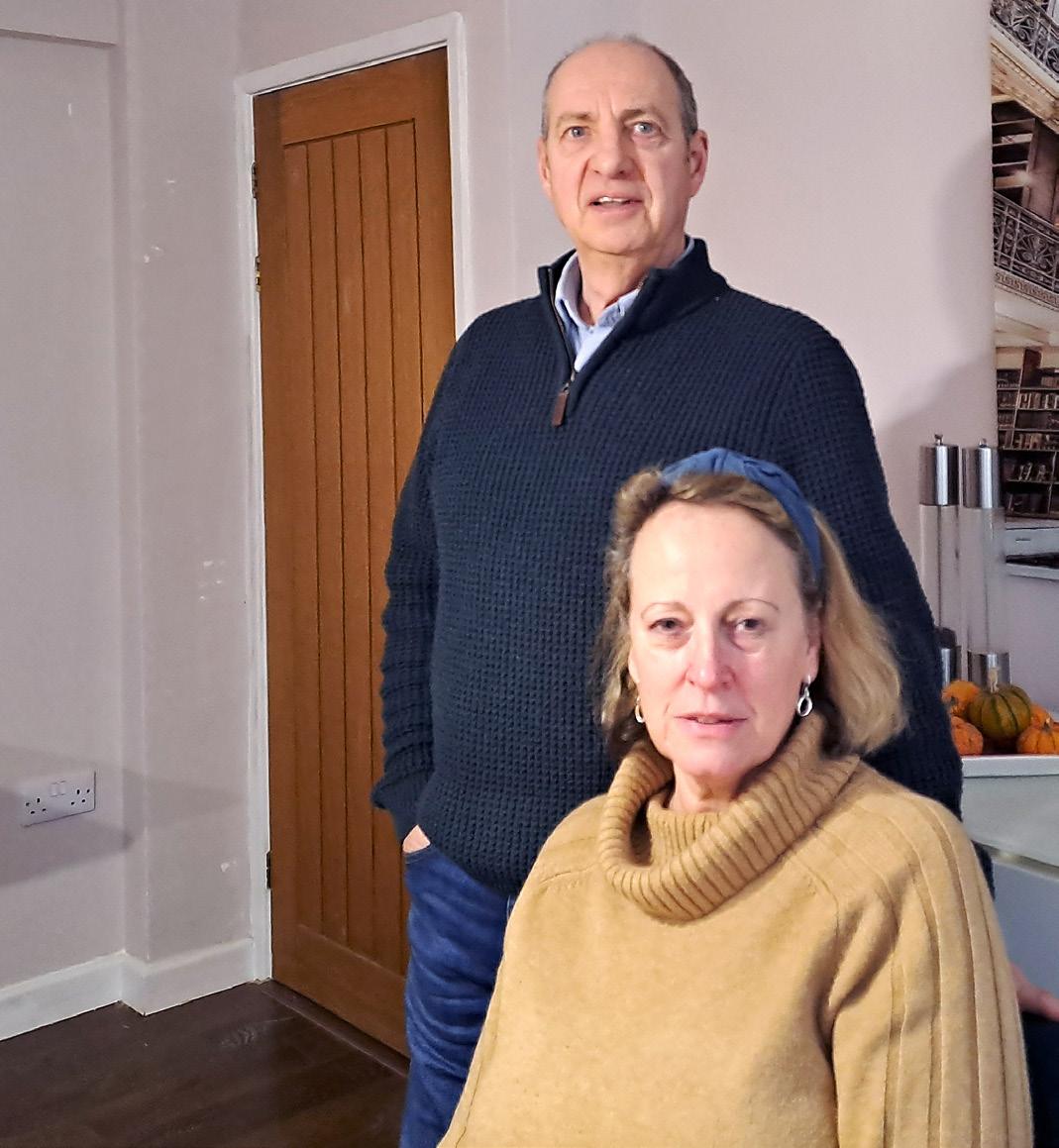
A three-course, gourmet, set menu, with a vegetarian option, is offered for £17.50. Guests bring their own drinks and glasses. Booking is essential and Bryan warns that the tickets are sold almost as soon as the menu is published.
The something different club
‘People come expecting it to look like a village hall, says Jacqui. ‘It actually looks like a restaurant for the evening. Initially we planned to cater for 24 but it was so popular we added four – and then Bryan said we may as well do 35. It’s a lot of people to cater for. I do all the front of house and arranging the tables, and the waiting. Bryan is the chef, and we are helped by our friend Pat Thorne. Some people have been to almost every supper club evening we’ve run, and we see new faces too. What’s lovely is that we have met so many people, and it’s something different for the whole village.’
Each month, the couple creates a menu which is then emailed out to the supper club mailing list. If you like the look of the menu, you book and pay for your place. Sometimes there’s a themed event such as Burns Night, or there might be a focus on seasonal dishes like Dorset lamb.
‘People get to try flavours they wouldn’t usually get at home or as a standard pub meal,’ says Bryan. In March there was a twice-baked double cheese souffle, an assiette of lamb celebrating Dorset produce, and a dark chocolate mousse with a caramel tuile. On Burns Night, diners were treated to a whiskycured gravlax – cured by Bryan. The presentation is first class and there’s a wonderfully relaxed atmosphere. It’s also an opportunity to bump into neighbours, and most people can walk off the calories on the way home!

Jacqui added that the catering also considers allergies when cooking – as all caterers do – but for a personal reason.
‘I have a life-threatening nut allergy which was diagnosed in 2009. There aren’t many places I can go out to eat, so when we cook, we do it as though we are cooking for me. Since we opened the supper club I’ve met three other people with a similarly serious nut allergy. Unfortunately, we can’t offer gluten free as we have wheat products in the home, but we do cater for nut allergies.
Twice-baked double cheese souffle, an assiette of lamb celebrating Dorset produce, and a dark chocolate mousse with a caramel tuille

‘The food is mostly produced in our home and then we finish things off at the village hall kitchen. We rarely have leftovers but we freeze things like stock for the next event. When our kitchen was out of action recently, we simplified with a wine and cheese talk, it was a wonderfully relaxed and informative evening.
People do expect it to be different each time, and there’s only one dish we have repeated – our steak and ale pie, because people literally couldn’t get enough of it!
‘If we have money left over we give it to a charity or good cause of our choice – we have helped the Dorset and Somerset Air Ambulance and a local wildflower project.’
Some privately-owned restaurants and cafes have supper clubs, but this one, run purely by volunteers, takes an extraordinary amount of work to organise. ‘It’s the atmosphere we’ve created here,’ said Jacqui. ‘We’re surprised how popular it’s been and the level of support. People say that it doesn’t actually matter what’s on the menu – they’ll be there!’
• To sign up to the Supper Club in Okeford Fitzpaine and find out what’s on the next menu, contact Jacqui Evans on jbjacquibudd@gmail.com

Our resident flower farmer Charlotte Tombs loves tulips. A lot. And she has something she needs to get off her chest ...
Tulip La Belle Epoque All images: Charlotte TombsIn the quest for the perfect bloom, the debate between supermarket tulips and artisan counterparts is a tale of beauty, heritage, and sustainability. Supermarket tulips, admittedly easy on the wallet, are products of a modern age – hydroponically grown, never touching a crumb of soil, and wrapped neatly in single-use plastic. Engineered for longevity rather than vibrancy, they often carry growth inhibitors – that’s why they don’t open up in the vase and just sort of die/dry out.
On the other side of the garden, artisan tulips promise an explosion for the senses. I spend a lot of time, effort and money choosing my tulips for colour, shape and perfume (yes, tulips are supposed to smell – when has a supermarket tulip ever smelt amazing?).
In the full page image opposite are La Belle Epoque, an absolutely beautiful double tulip, and one of my own favourites.
Do note that tulips continue to grow in the vase and can change direction from where you carefully placed them! You can also see that they are loose and opening up – you just don’t see this from the supermarket ones.
The burstingly pink tulips below left are Big Love. They grow to nearly two foot tall, with a head the size of your fist in that most amazing lipstick pink. They are another of my personal favourites. Other varieties to look out for are Brownie, Silk Road and Amazing Parrot, which goes from pink to orange. Tulip Negrita is a great perennial tulip – it really does come back year after year. Last but not least is Foxy Foxtrot – almost worth buying for the name


Every year I plant almost 2,000 bulbs of 25 different varieties. I plant them very closely together so I can get a longer stem, and I treat the bulb as an annual – all the spent bulbs are composted. British tulips are amazing and just don’t compare to the supermarkets ones.
See Charlotte’s Insta here to see what she’s picking at the farm near Wimborne (contact her via northcombe.co.uk), or try flowersfromthefarm to find a flower grower near you


Despite the everlasting rain, there’s still some jobs and planting to do and always fresh veg and salad to harvest, says Barry Cuff
Normally by the end of March most groundwork has been completed – but so far it has not been a normal year. Groundwork includes manuring, digging, weeding and removal of last year’s crops as they finish producing. Continued wet weather has delayed these operations, as it is not advisable to trample wet soil.
Up and down the country, farmers are behind with the drilling of their spring crops. As I write this –27th March – the rainfall at the allotment is well over 12 inches for the year. And it is raining as I write ... Blackthorn started flowering around the 16th and was in full flower a week later, somewhat earlier than most years. Normally ’Blackthorn Winter’ is accompanied by winds from the north and east, bringing cold weather and little rain.
On the plot
When it was possible, grass weeds were removed. These have not stopped growing over the mild winter and because of the wet conditions have a lot of soil around the roots, which has to be shaken off before adding to the compost. Edging the beds was one job that could be carried out from the paths –

Fresh salad is still possible in March with a tray of cut-and-come-again spicy salad leaves and some pea seedlings. Image: Barry Cuff

Fresh salad
It is good to have some fresh ingredients at this time of year. We’ve now used our last Chinese Blue Moon radish, a colourful addition to the salad bowl. Chicons add a slight bitterness (we are on our third cut). For salad leaves, we have a tray of mixed spicy leaves, a cut-and-comeagain vegetable, in the greenhouse. Also a tray of agricultural pea seedlings for tender sprouts – repeat sowings are made of these during the
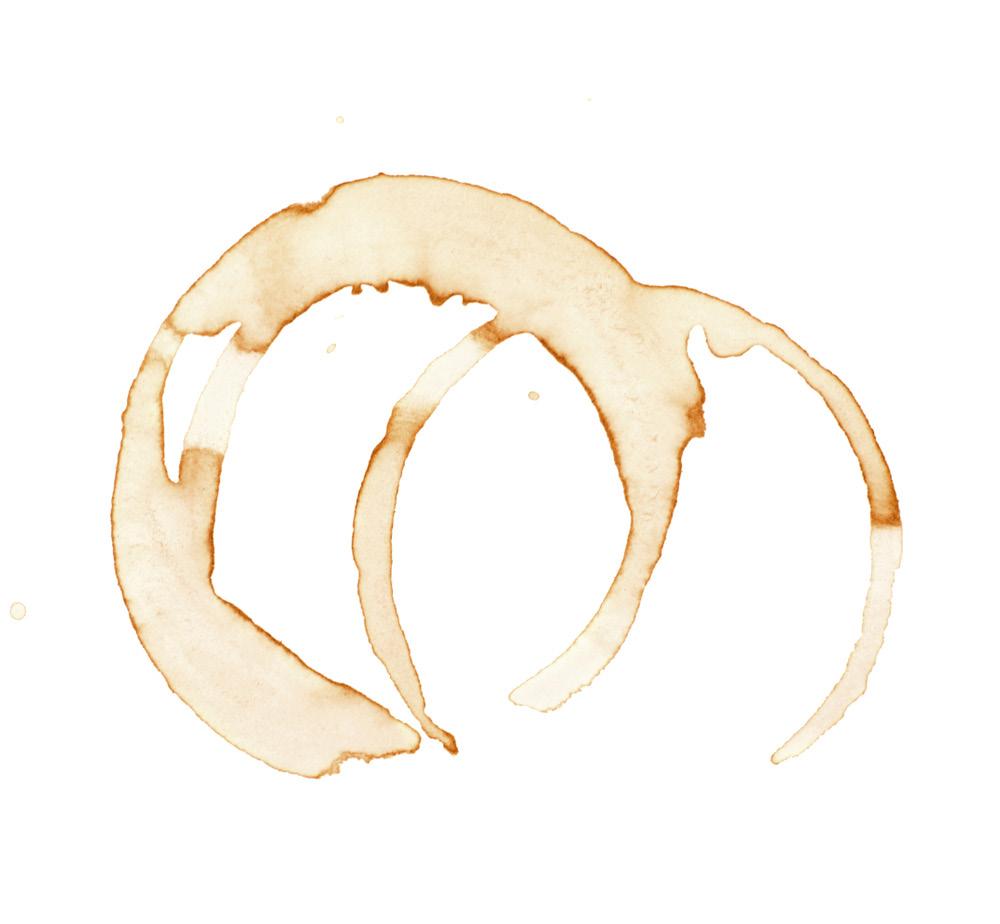
In the greenhouse we have Red Drumhead red cabbage which will be hardened off shortly. Our first lettuce plants are ready to be planted out in a trough in the greenhouse and a second batch sown. All our onions are now sown in plugs – a total of 400 plugs, with two seeds in each. We’ve planted two varieties, Bonus and Red Baron. The peppers that were sown in January have been pricked out into individual pots and are in the greenhouse – but we do bring them into the kitchen overnight.
The tomatoes sown on 12th March were pricked out on the 21st and are residing in the bedroom window (about 90 plants).
The garlic planted in November looks well, as do the broad beans planted out on 7th March, after some initial slug damage.
Fingers crossed for less rain and some warm weather in April, one of the busiest months.



There is an air of new season excitement at Thorngrove this month. You can’t keep a good gardener down, no matter how much rain comes their way
No matter what the weather reporter on the telly has been saying, spring is in fact well underway. It’s been wonderful to see more of you walking through our doors at Thorngrove as we all start to once again take notice of our gardens. Brighter evenings and warmer weather are on their way – meaning spending time in the garden without getting rained on is once again a feasible reality ... for the most part! How’s your own space looking?
It can’t rain forever
It’s difficult to not let the weather get you down, but as we always say, we bring the vibrancy all year around here at the garden centre. There are many beautiful plants in flower right now, and plenty more to come as we move deeper into the season, so if you’re looking to add some instant interest, then stop by and discover something beautiful. Our plant of the month will be Achillea, a traditional perennial perfect for borders. Don’t forget, now is really your last chance to be planting summer bulbs, so if you’re setting those garden goals and wanting to make the most of summer gatherings and BBQ plans with plants you’ve grown yourself, don’t delay!
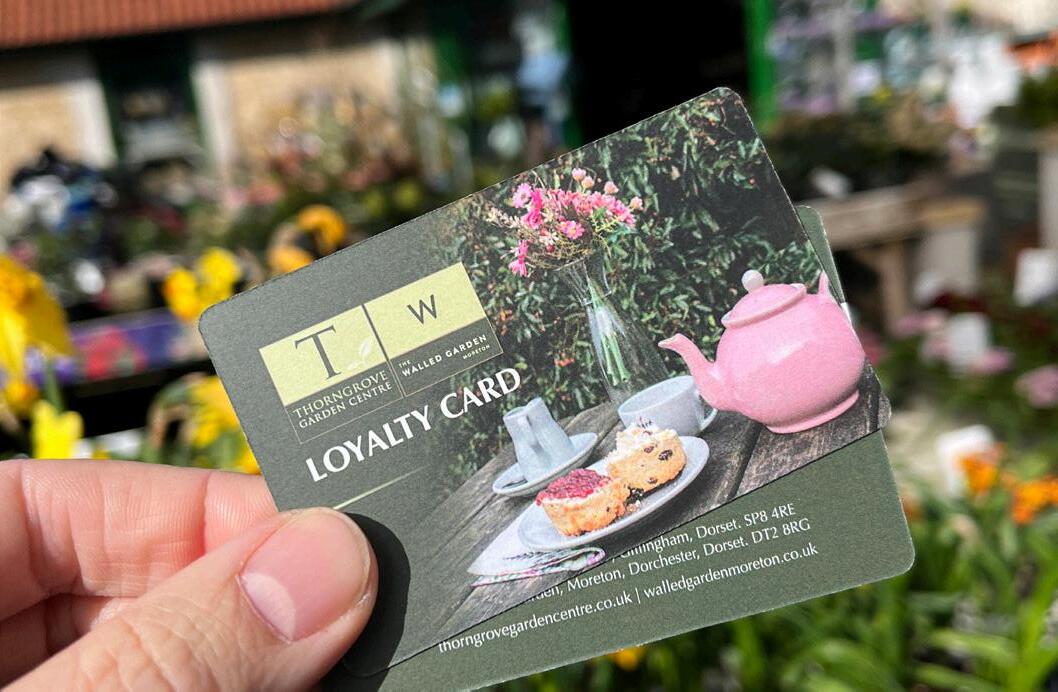
The rain hasn’t been kind to many local events either, and we share the frustration shown by event organisers who had to postpone the Spring County Show due to take place this month. We’re very happy to say that our partner site in Moreton is still due to have it’s own Spring Plant Fair on Saturday 20th April, so if you’re looking for a flower-filled day out, please do pop down! Perfect for progardeners, at home hobbyists, or families looking for a day of fun, our diverse site at The Walled Garden also boasts five acres of formal gardens, an on site café, play park, and animals – including pygmy goats! Early bird entry is bookable now at just £3.50 a ticket, or £5 entry on the day – and under 16s are free!
There’s also still time to join for our Easter Crafts right here in Gillingham, which take place on Mon 8th, Wed 10th, and Fri 12th April. Seasonal crafts for children, including pot decorating and flower planting, plus we have a very special BUG EXPERIENCE for one day only, also on the 10th April. Meet Exotic bugs with our Bug Expert in this exciting and educational experience.
Our loyalty scheme launched in March and is now the best way to access special offers, and earn points for returning customers across the garden centre, and café, both here at Thorngrove, and at The Walled Garden in Moreton. Full details on our website, or just speak to a member of staff.
Employ My Ability Open Days also take place this month. Visit either our Moreton or Gillingham campus to see first hand the services and facilities, meet staff, and find out about the opportunities we offer young people with SEND. Tuesday 16th and Wednesday 17th April. Details on our website.
• For all the latest news and updates, offers and more see thorngrovegardencentre.co.uk

April is the month for planting up the hanging baskets – but don’t hang them out until the frosts are done
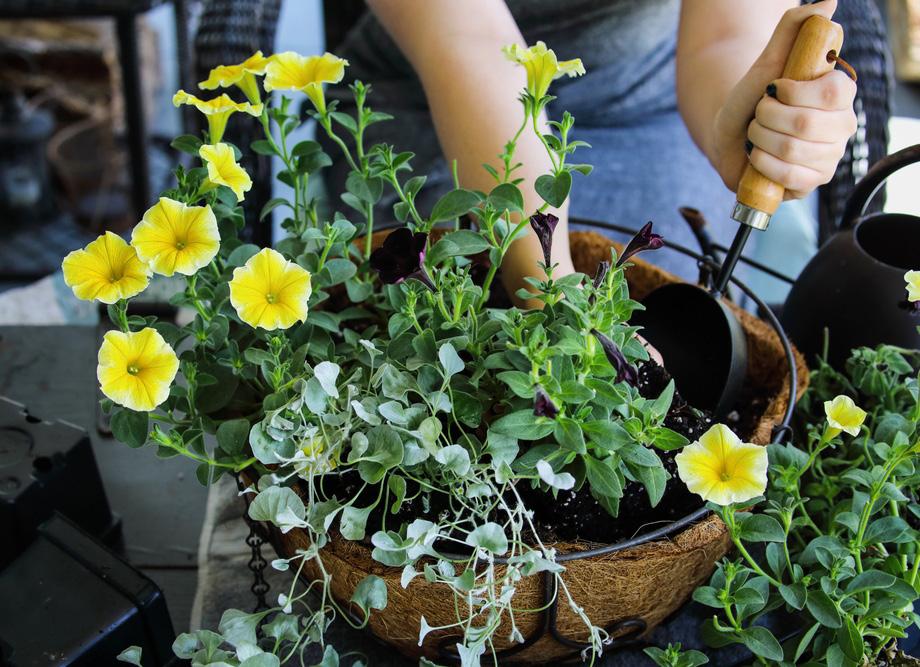
It’s every gardener’s favourite month – April’s when it finally all starts to get exciting outside the back door, says Pete Harcom
April at last! Things really do get going in the garden in April, so grab your gloves – we have lots to get done this month:
• Deadhead your daffodils to stop them wasting energy on producing seed. Just allow the leaves to die back naturally.
• Seed sowing can be started in earnest, especially in a heated (or even a cold) greenhouse. Annuals and biennials can now be sown – why not try some nigella (better known as love-in-a-mist), foxgloves, hollyhocks, nemesia, rudbeckia or French marigolds?
• Plants from seeds are an easy way to encourage wildlife – especially birds – into the garden. Scatter wildflower seeds thinly over finely raked soil and water sparingly. Even if the days are warm, watch out for frosts at night, and resist the temptation to sow and plant out too early. Keep an eye on the weather forecast and wait a few days if necessary. Protect your early sowings with fleece if frost feels possible.
• The growing lawn will possibly need attention now, including sowing fresh grass seed on any bare spots.
• Primroses can be increased now by lifting and dividing – these delicate-looking little plants are actually quite tough and can easily be split up and spread around the garden.
• Sow your sweet peas outdoors now at the base of their supports. If you’re already growing them in the greenhouse or cold frame (and as they grow outside), pinch out the tip as this encourages more flowers.
• There is still time to prune hydrangeas – cut them back to a strong stem and then why not push the cuttings into a sheltered area of soil? hey root very easily.
• Hanging baskets can now be made up in a cold greenhouse. Use a pot to stand the basket in while you plant it up. When it’s done, either hang the basket up in the greenhouse or you can leave it standing on the pot for support. Only hang the basket up outside when the danger of frost is over. The soil in hanging baskets can be mounded up, creating a large basket. If the sides are also planted, it can create a fantastic effect. Ensure the basket brackets are strong enough to take the weight of the extra soil in the basket.
Both employers and employees need to be aware that there are some big changes happening to the Minimum Wage from 1st of April 2024.
The National Minimum Wage was brought into Statutory Force from 1999 and is updated annually on April Fools Day. This year’s amendments will see both the greatest increase and the reduction of the adult pay rate age bracket down from 23 years old to 21 Years old. This major shift is seen as an acknowledgement of the Cost of Living Crisis and In-Work Poverty. While it is right and fair, it will inevituably have a major impact on wage bills.
The National Minimum Wage is designed to maintain fair pay for work of equal value in the workforce for all workers over 16. Failure to comply can result in significant fines, inclusion on a name-and-shame Government open list and tribunal claims. Any arrears have to be paid

at the current rates, and the maximum fine award is £20,000 per employee.
Employer actions:
• Check which employees are aged 21 and 22 on 1st April
• Check which employees turn 21 after 1st April
• Write amend pay letters to inform of age and band change/pay amendment
• Amend pay from the next
payment after the age/ change requirement.
There is one further change. The Domestic Worker exemption (someone who lives with you and your family but has a paid role) is now abolished. So all individuals need to now be paid the National Minimum Wage. This took effect from 23rd January this year.
Sally Cooper HR Consultant, Member of the CIPD

Feltham’s Farm emerged as a standout winner at the British Cheese Awards, securing an impressive tally of seven awards, including Golds, a Silver, and several Bronzes. The farm’s cheeses, known for their unique names and flavours, received awards across multiple categories, showcasing their excellence in both quality and presentation. In the Best Packaging category, Feltham’s Farm’s Rebel Nun, Gert Lush, and Renegade Monk cheeses all clinched Gold, demonstrating the farm’s commitment to creative and appealing packaging. La Fresca Margarita also earned recognition in this category, taking home a Silver award. Additionally, La Fresca Margarita was awarded a Bronze in the Fresh Lactic section, highlighting the cheese’s quality and taste. The Semi Soft Export class saw Gert Lush and Renegade Monk receiving Silver and Bronze awards respectively, underscoring Feltham’s Farm’s appeal to international markets.
The best cheese there
The competition was notably fierce this year, with over 600 cheeses entered across various classes.
Jem Panufnik, the designer behind Feltham’s Farm’s award-winning packaging, said ‘I am over the moon to have won best Packaging for Renegade Monk –all the Felthams cheeses have such great names and backstories, it’s an illustrator’s dream job!’.
Penny Nagle, the farm’s Director, said, ‘We are
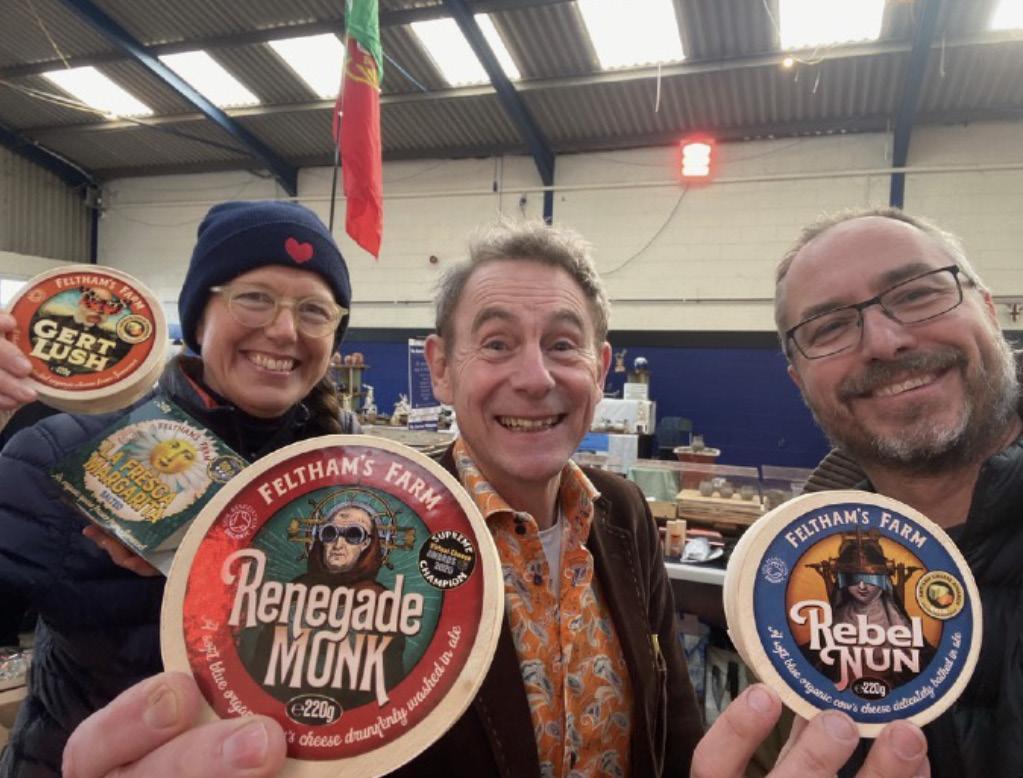
delighted that our creative design-led ethos for our packaging has been recognised by the cheese industry as adding value to our brand.’
Marcus Fergusson, the Owner and Cheesemaker at Feltham’s Farm, said ‘Our Silvers and Bronzes for Lactic and Semi Soft Export show that we are delivering some terrific cheeses that both professional cheese people and customers love.’ The farm’s success also caught the attention of journalist and broadcaster Nigel Barden, who praised Gert Lush on BBC Radio London’s Robert Elms Show. Barden commended the cheese’s inventive naming and packaging and lauded its taste as ‘the best cheese there.’
Wessex Internet has revolutionised connectivity for JPL Telecom Ltd in Todber, near Marnhull, by providing a 100Mbps full fibre connection under Project Gigabit. This government initiative aims to extend gigabit-capable broadband to rural areas, enhancing digital access for communities previously limited by slower speeds.
JPL Telecom Ltd, specialising in telecom headsets, webcams, and video conferencing products since 2004, now enjoys improved operational efficiency and global connectivity. This upgrade is part of the £6 million Project Gigabit North Dorset contract awarded to Wessex Internet in 2022, targeting over 7,000 properties for high-speed internet access.
The enhanced connection supports JPL’s focus on innovation within the unified communications sector, allowing for uninterrupted video calls
and seamless large file transfers, crucial for their business-to-business market in the UK, Europe, the USA, and beyond. Anna Dunning from JPL Telecom said, ‘We previously had many problems with only one or two people being able to be on a video call at a time. As video conferencing is what our business is about, it was embarrassing when calls would cut out. Our new connection has made a big difference; large files sent seamlessly, and video calls run simultaneously without interruption.’
Wessex Internet’s CEO, Hector Gibson Fleming, said: ‘Our primary focus is on delivering fast, reliable broadband to rural communities that may have been overlooked by other providers. As a local business embedded in the community, we take pride in contributing to the growth of fellow businesses across Dorset.’
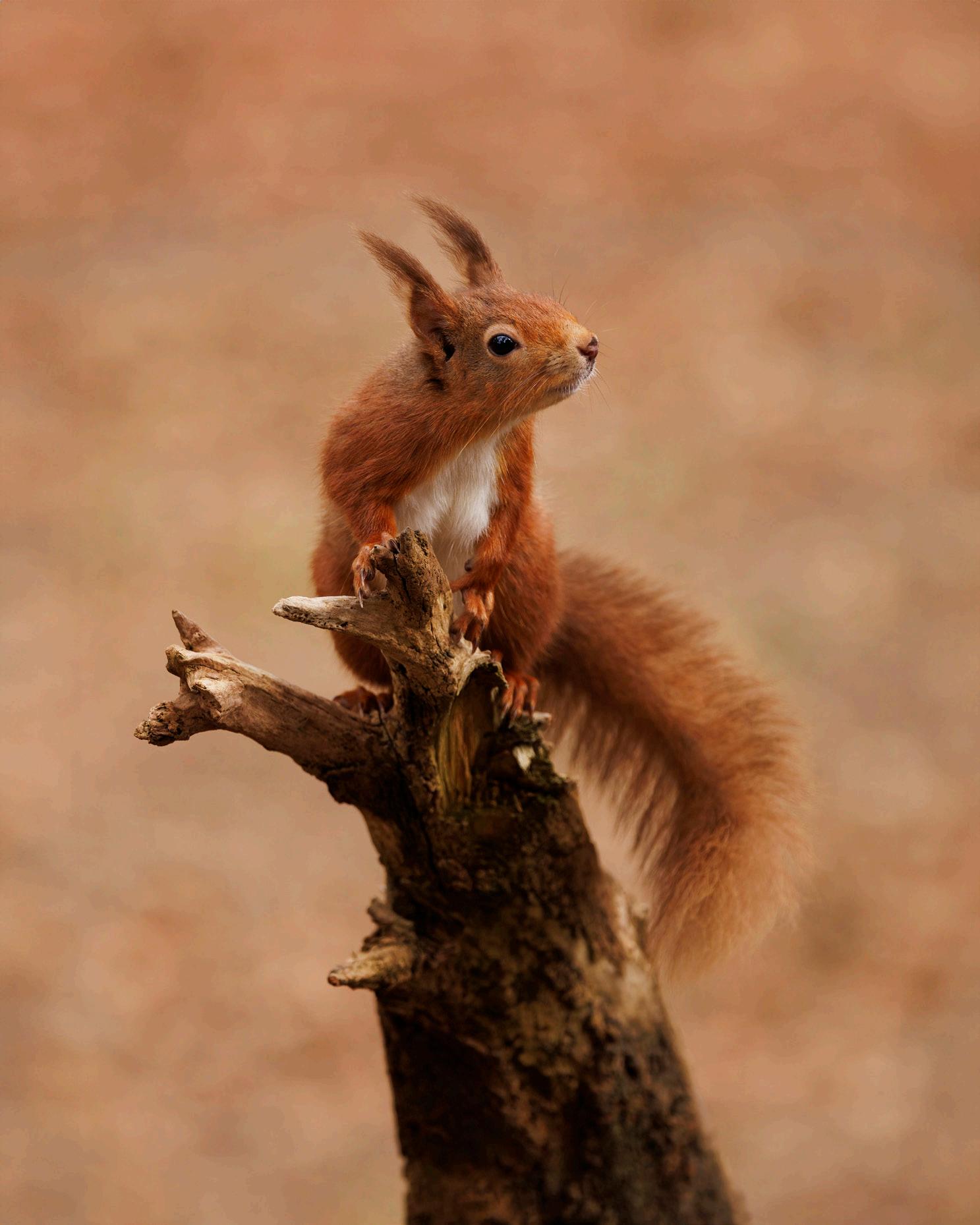
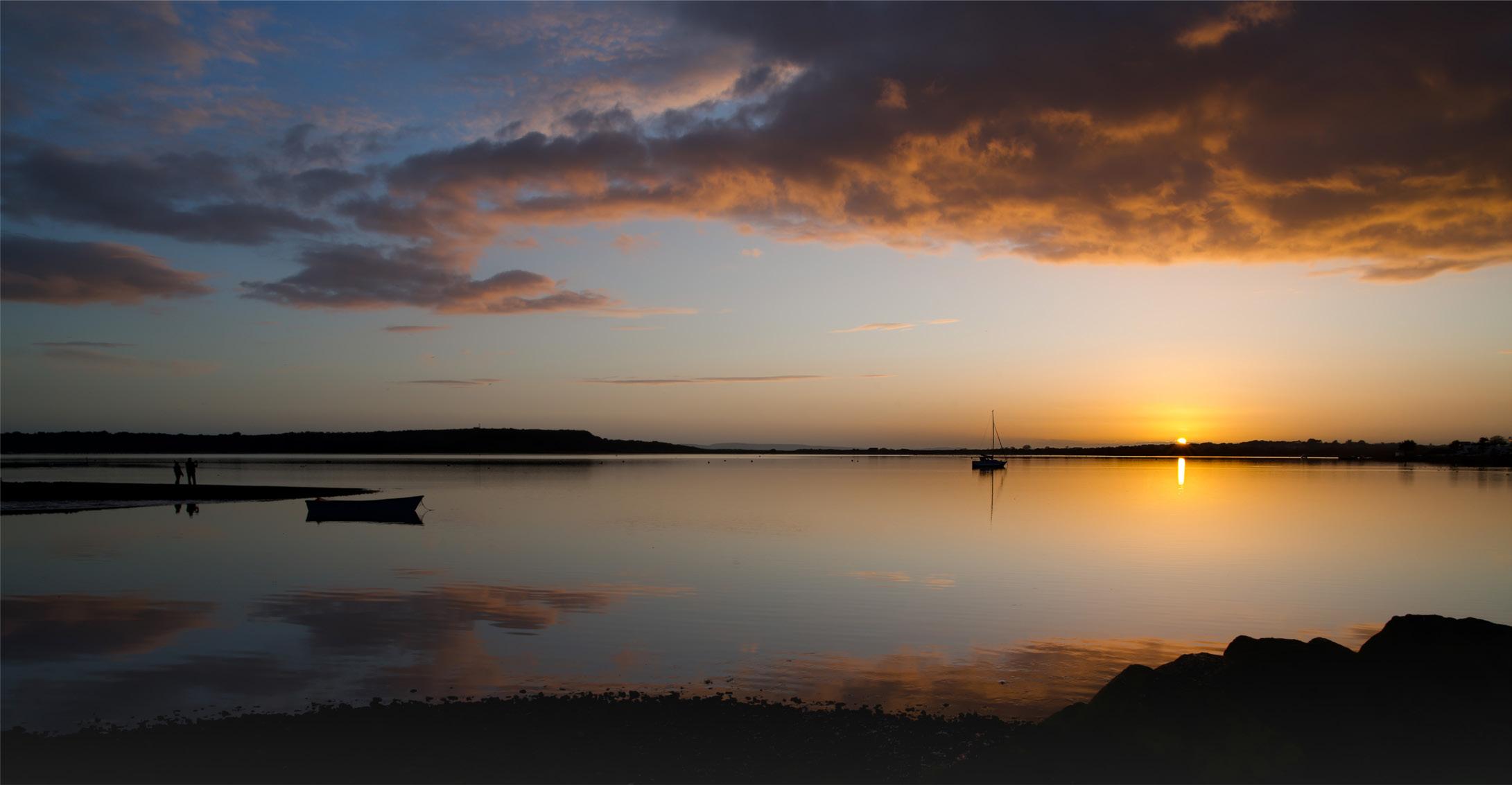 Red Squirrel on Brownsea Claire Norris
Still reflections
Red Squirrel on Brownsea Claire Norris
Still reflections


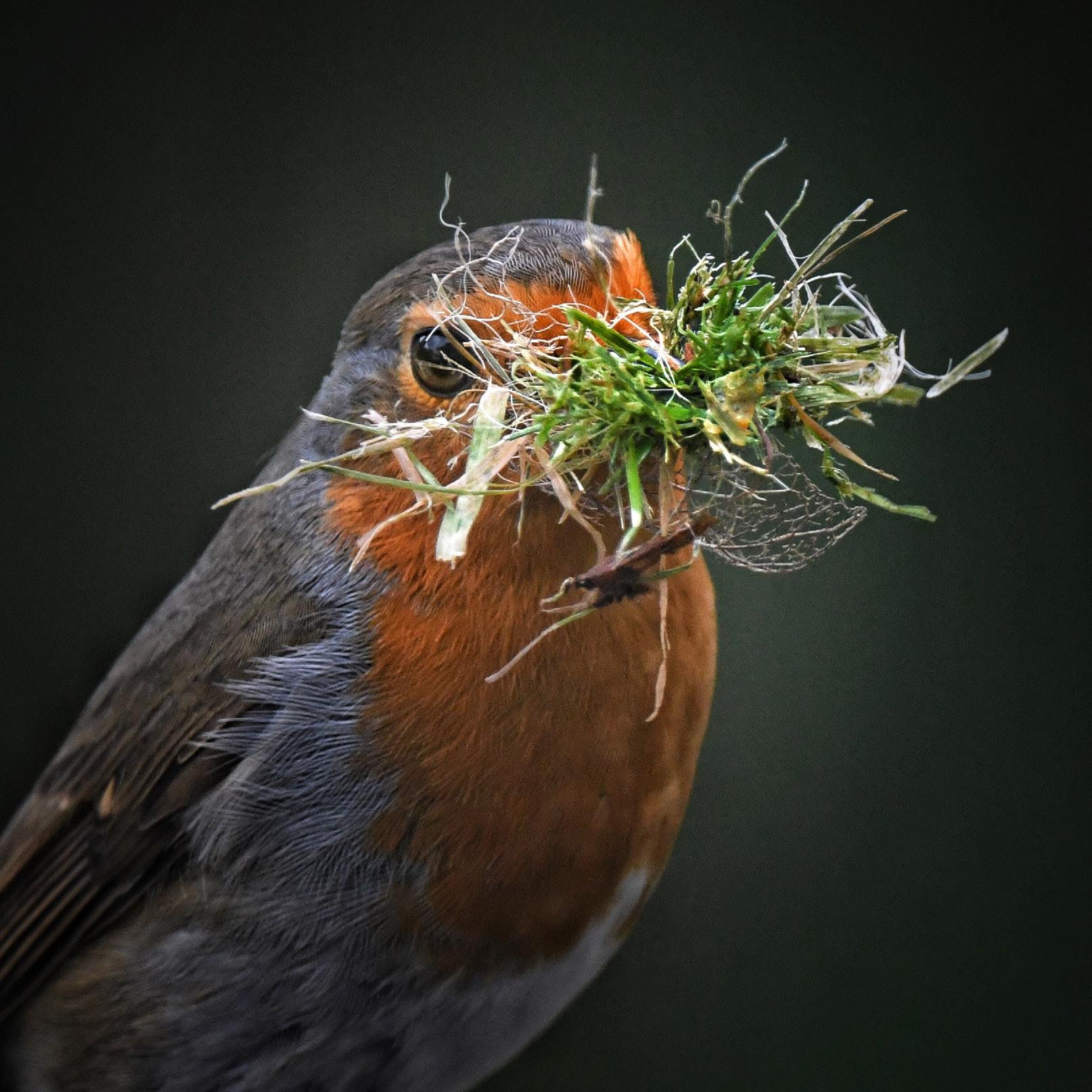
We welcome photography submissions from readers - the only rule is that they must have been taken locally in the last month. Our cover shot is always selected from our submissions pile. If you’d like to join in, please share it in The BV community Facebook Group or simply email it to us on photos@bvmagazine.co.uk


 Deer at Arne Martin Shaw
Deer at Arne Martin Shaw

 Shoveler duck
Paul Dyer
Starling
Shoveler duck
Paul Dyer
Starling
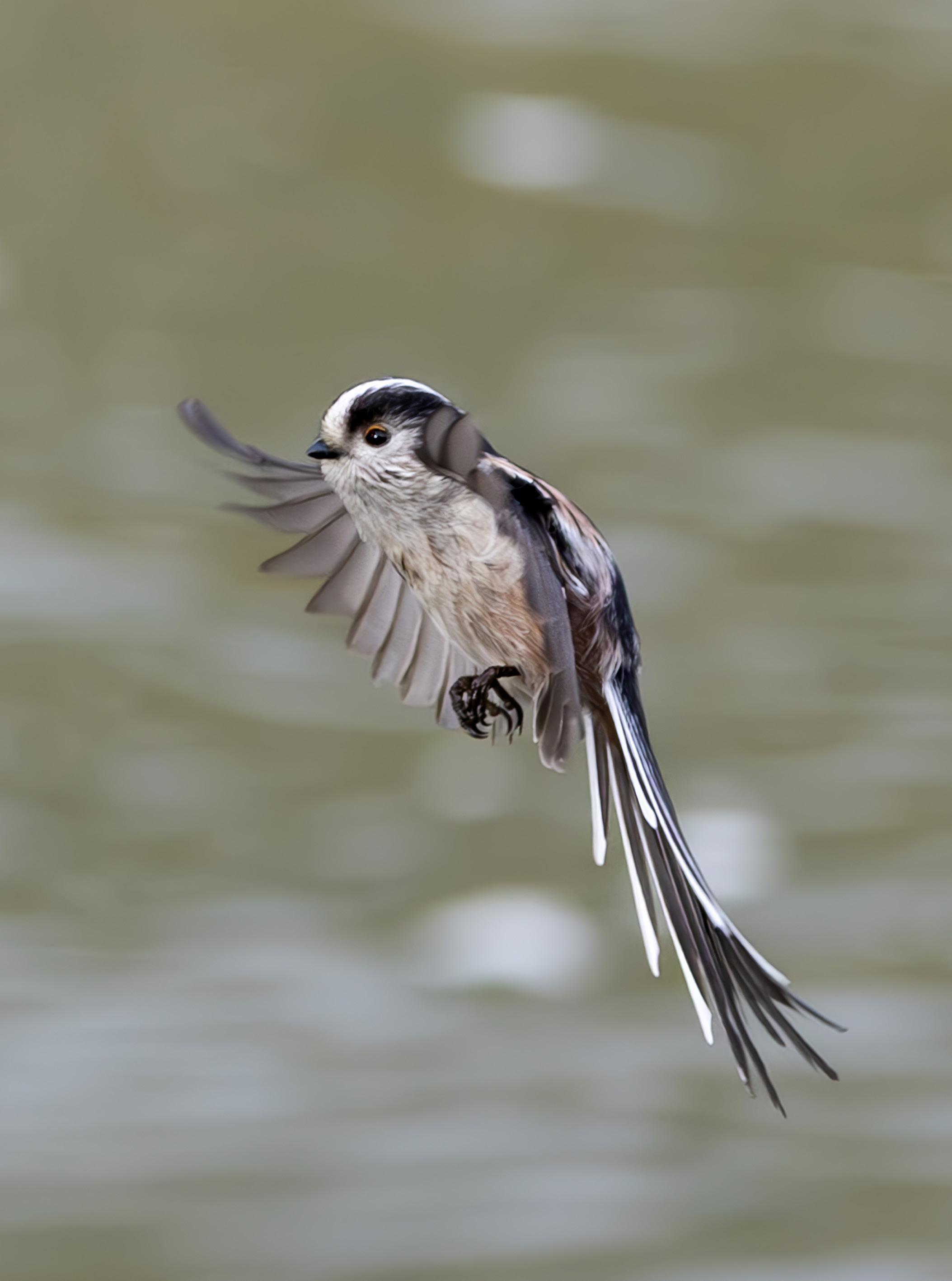
 Incoming Mike Howson Tea time
Incoming Mike Howson Tea time







L o n g s t o r m y s p r i n g ,
w e t c o n t e n t i o u s
A p r i l , w i n t e r c h i l l i n g
t h e l a p o f v e r y M a y ;
b u t a t l e n g t h ,
s u m m e r d o e s c o m e .
– Thomas CarlyleG O T S O M E N E W S ?
O R D O Y O U T H I N K A L O C A L ( O R
Y O U R O W N ) B U S I N E S S W O U L D
M A K E A G O O D F E A T U R E ?
K N O W S O M E O N E D O I N G G O O D
T H I N G S T H A T W E S H O U L D
T A L K A B O U T ?
S e n d a q u i c k e m a i l t o
e d i t o r @ B V m a g a z i n e . c o . u k
W A N T T O A D V E R T I S E ?
G e t i n t o u c h w i t h C o u r t e n a y t o c h a t a b o u t
w h a t y o u ' r e l o o k i n g f o r :
a d v e r t i s i n g @ B V m a g a z i n e . c o . u k
0 1 2 5 8 4 7 2 5 7 2

P R O D U C T I O N
S C H E D U L E :
N e x t P u b l i c a t i o n D a t e :
3 r d M a y
( d e a d l i n e 2 6 t h A p r i l )
T h e n . . .
7 t h J u n e
5 t h J u l y
T h e B V p u b l i s h e s o n t h e f i r s t F r i d a y
o f t h e m o n t h , a n d t h e a d v e r t i s i n g
b o o k i n g d e a d l i n e i s a l w a y s t h e
F r i d a y p r i o r t o p u b l i s h i n g